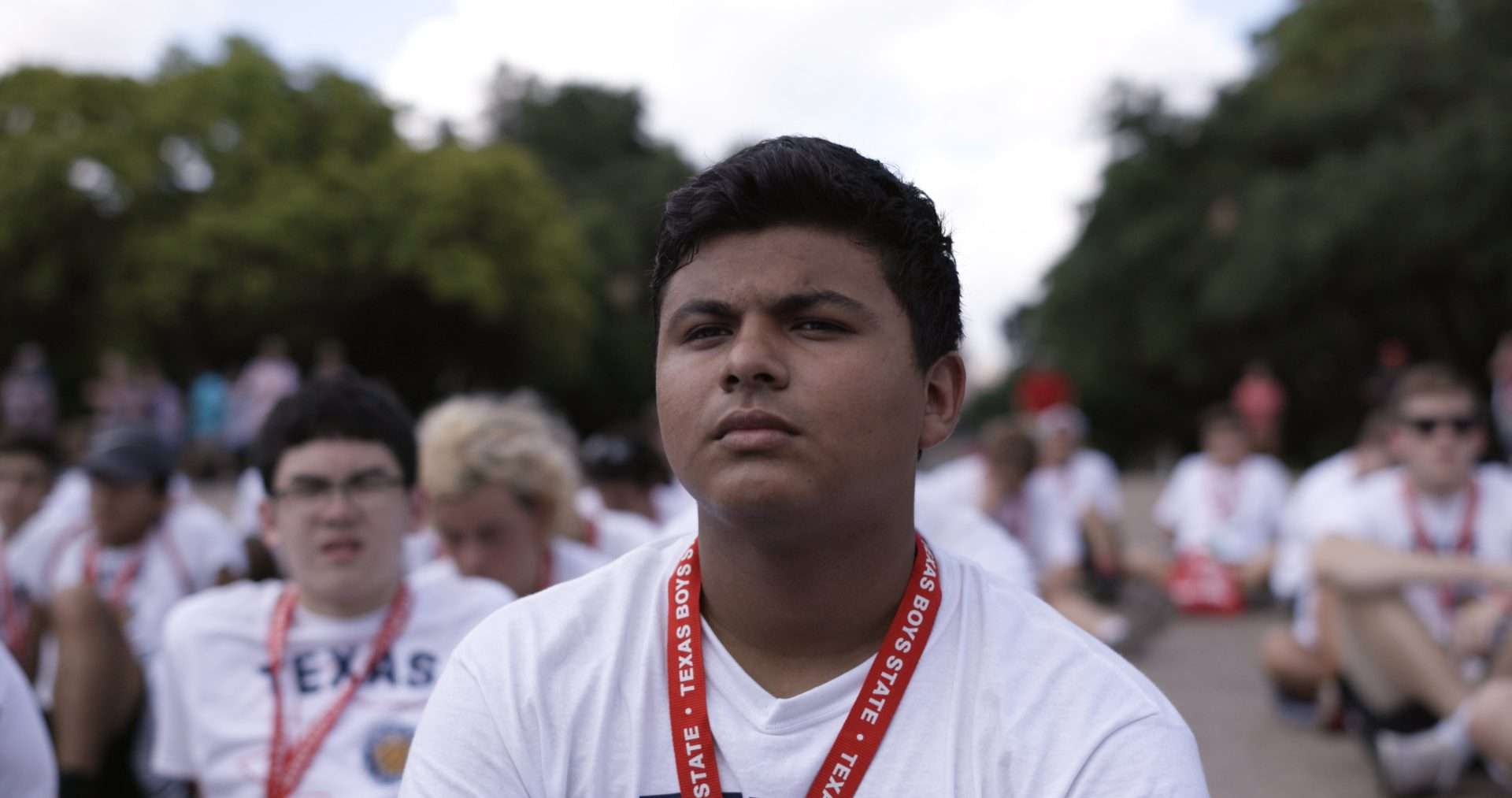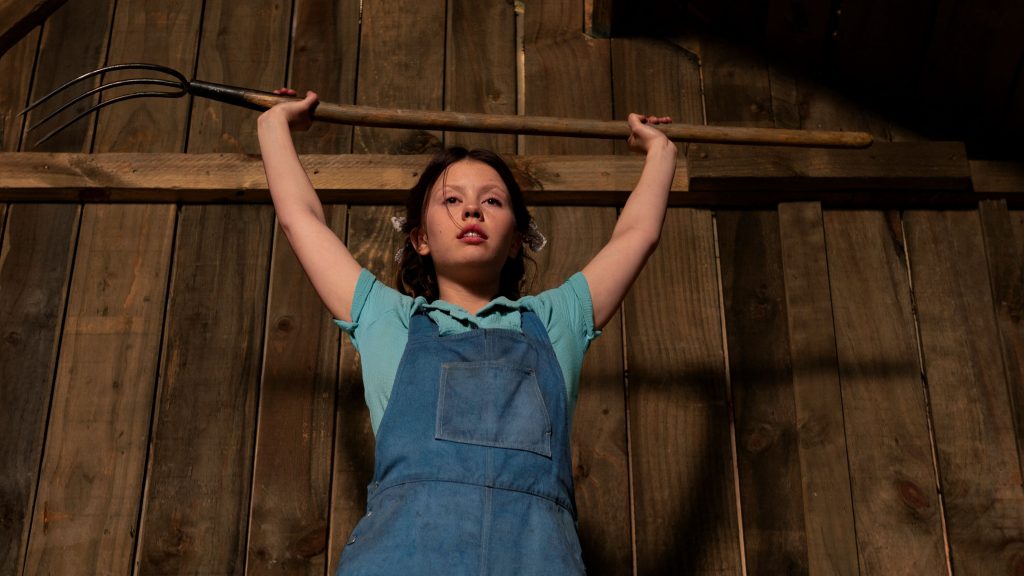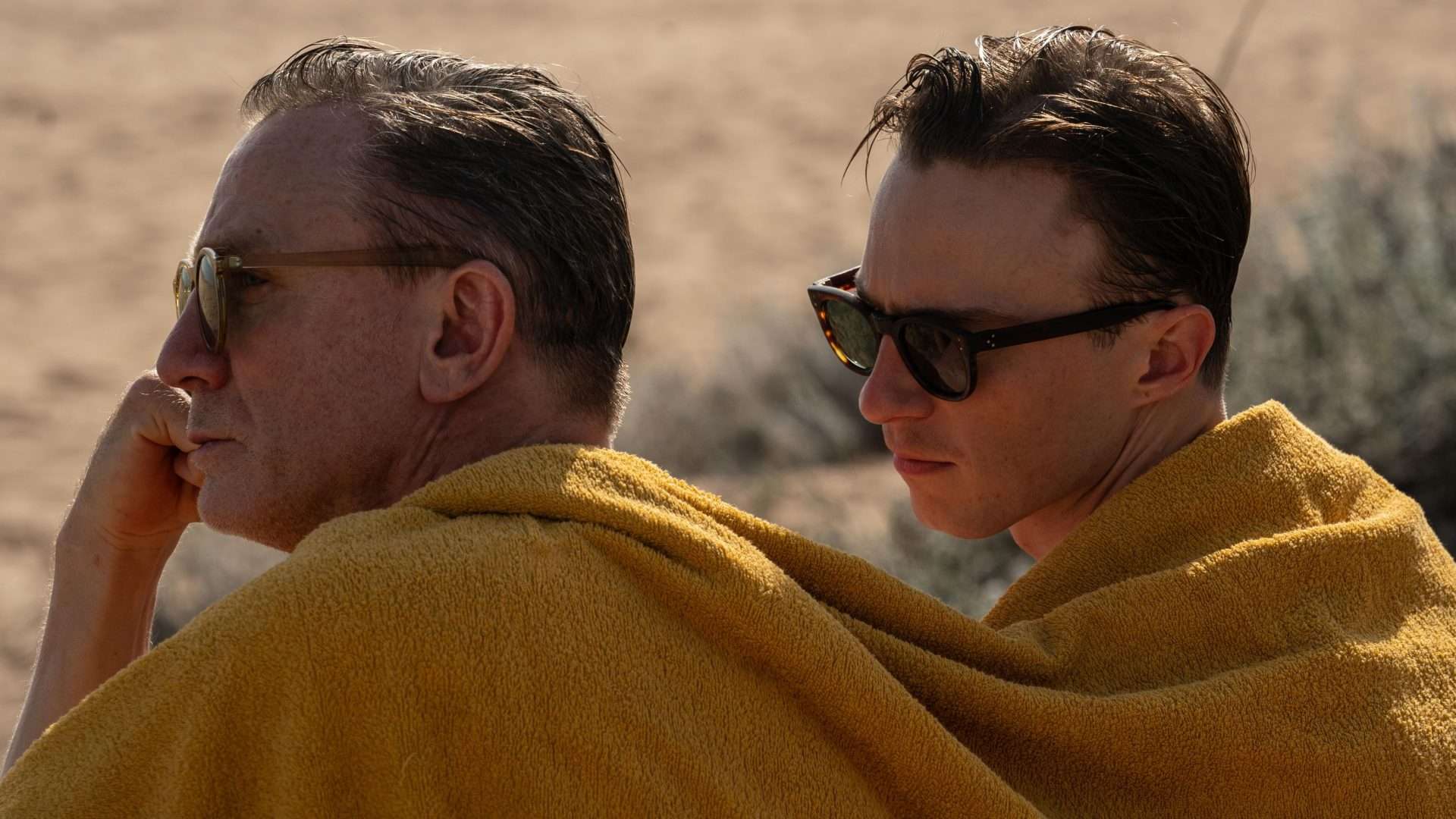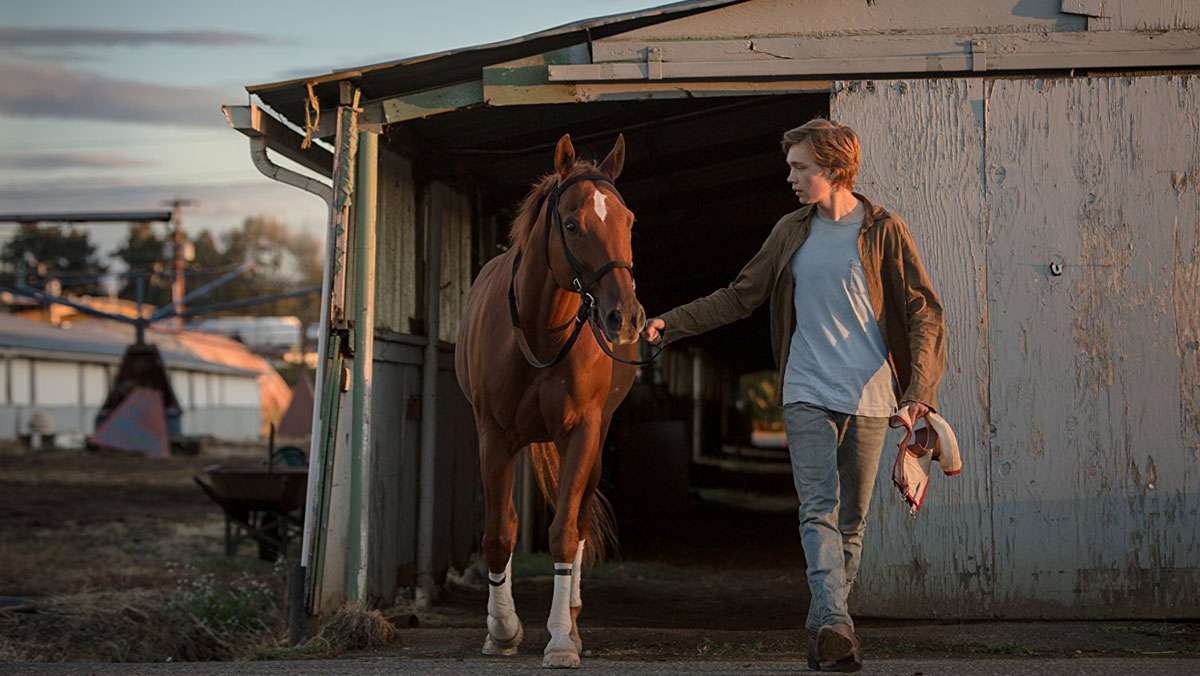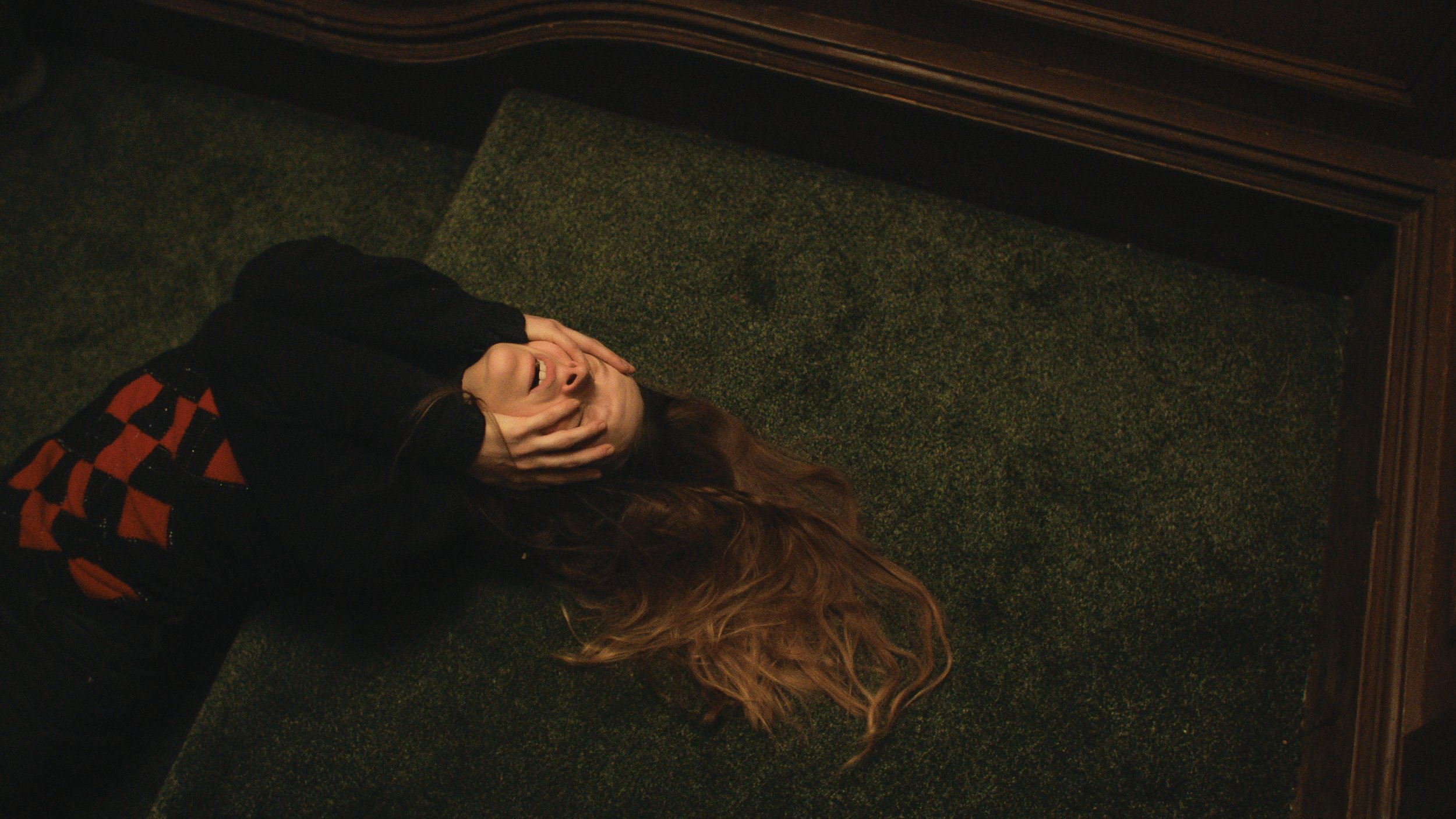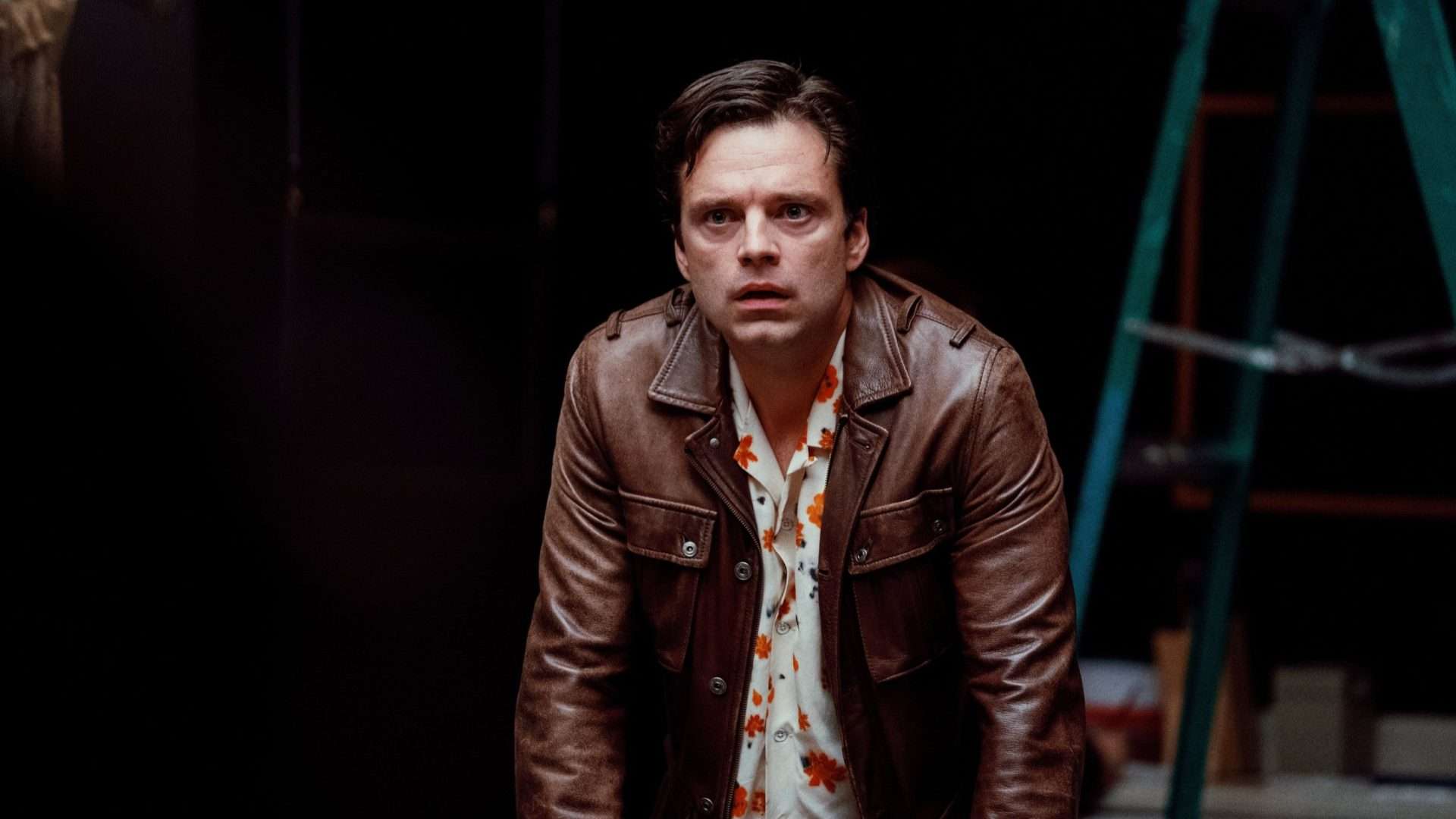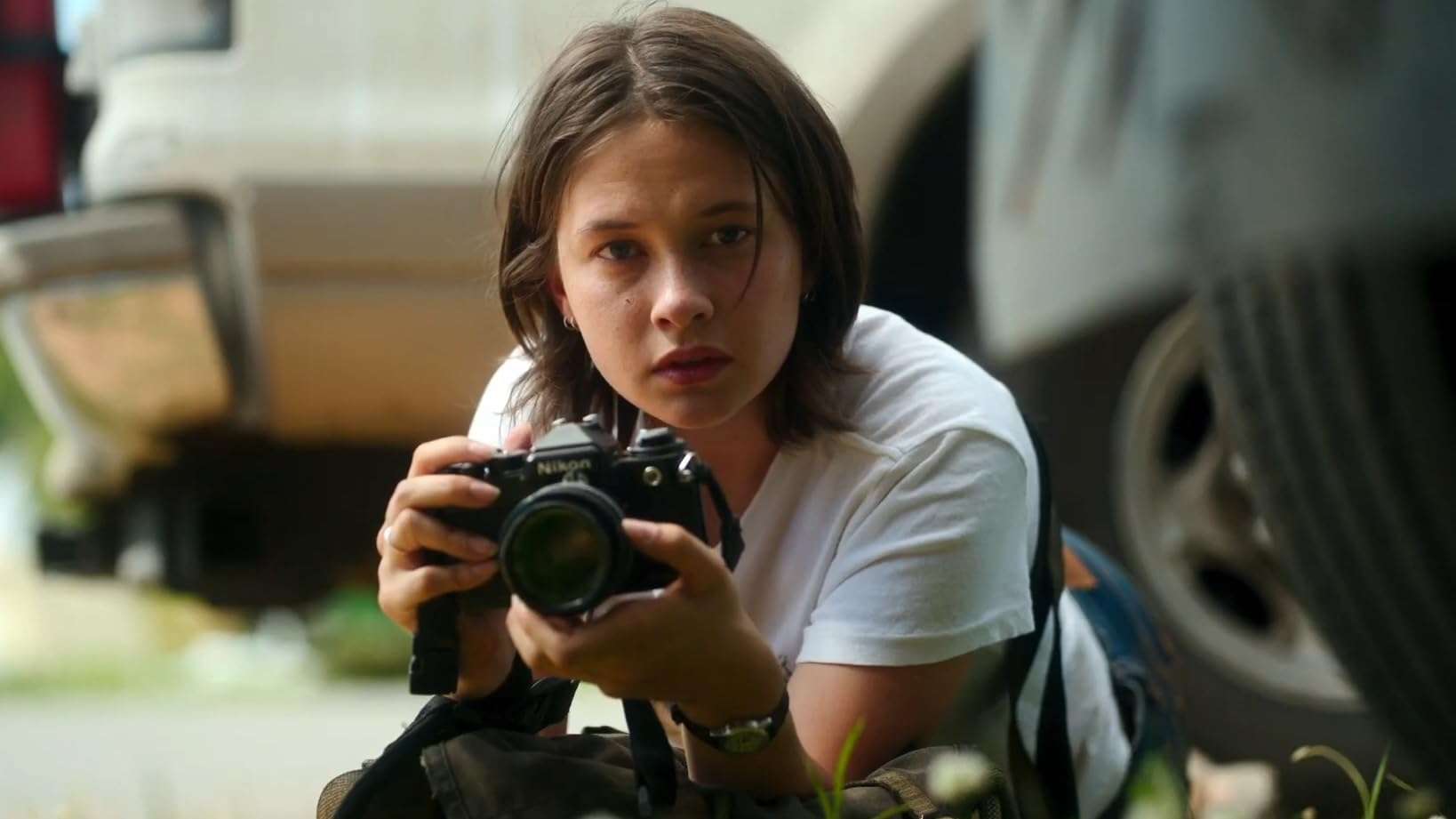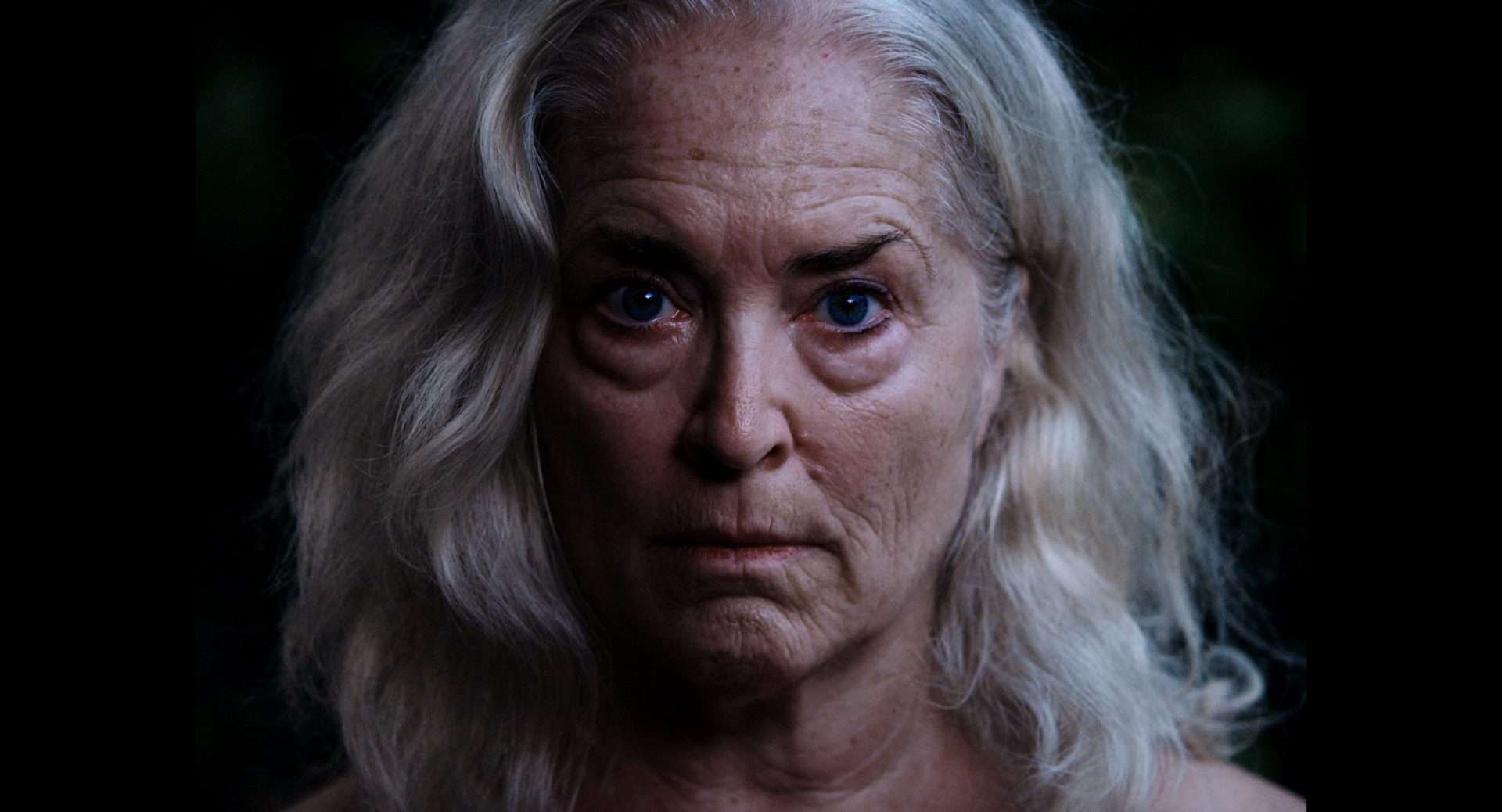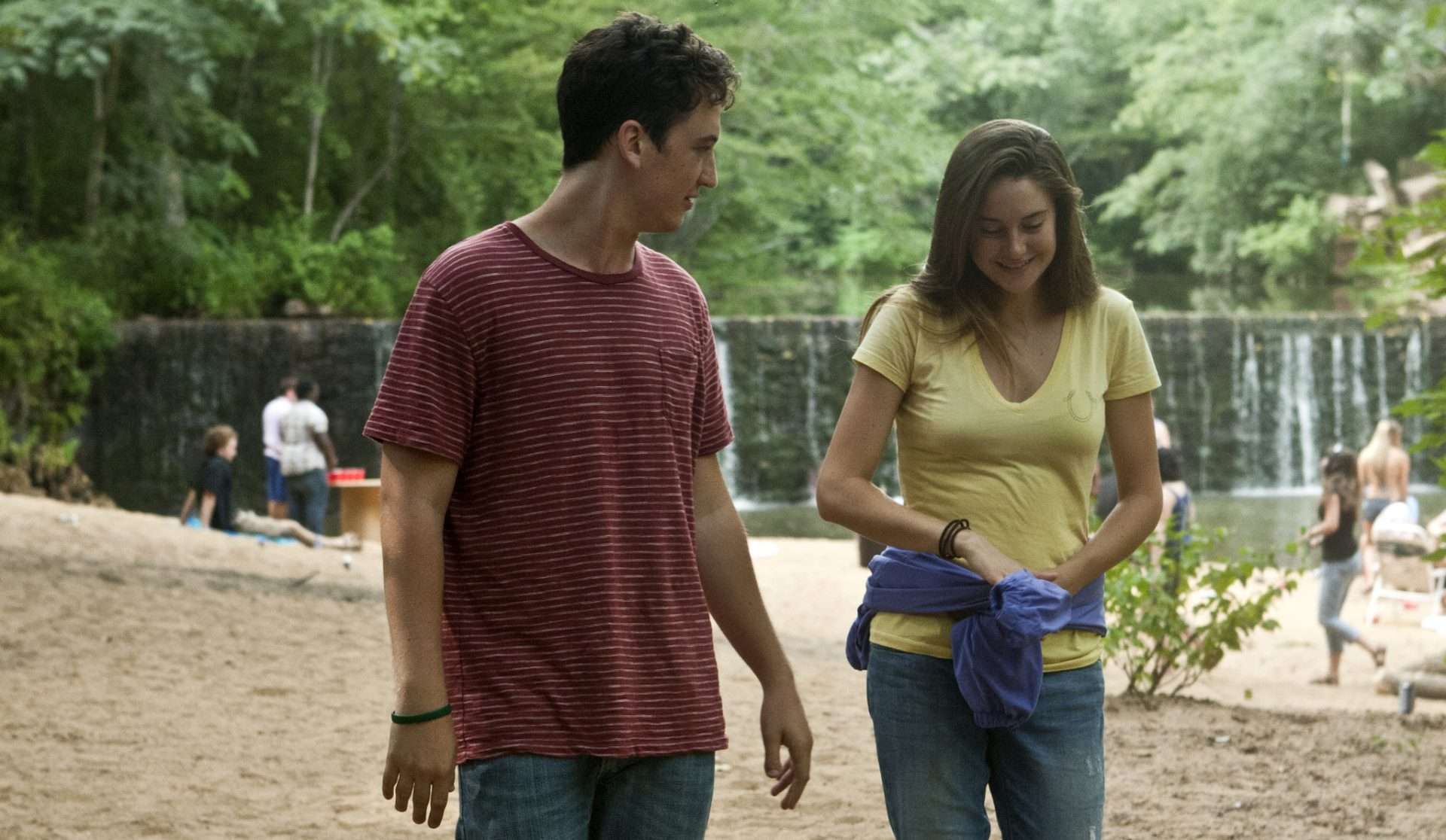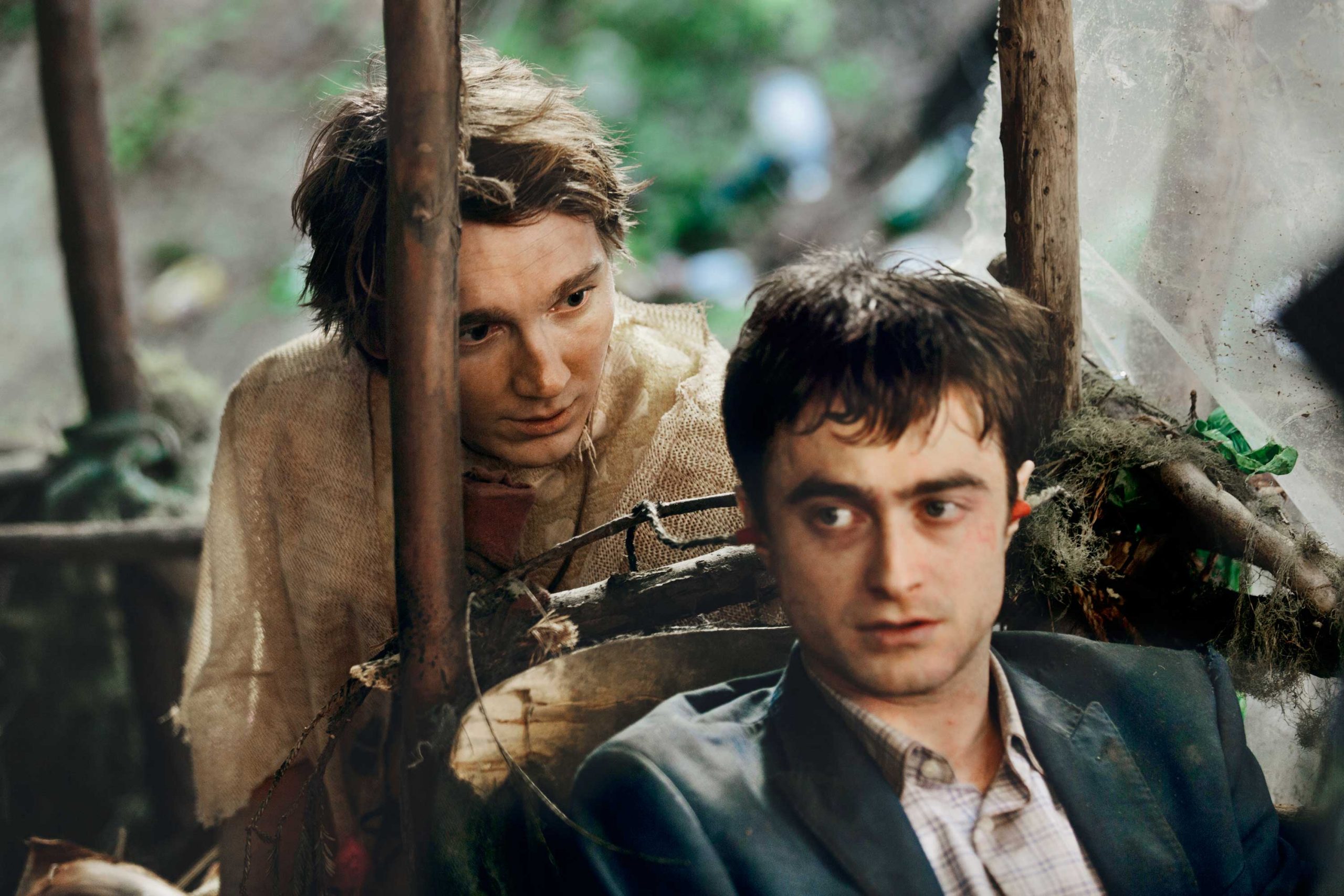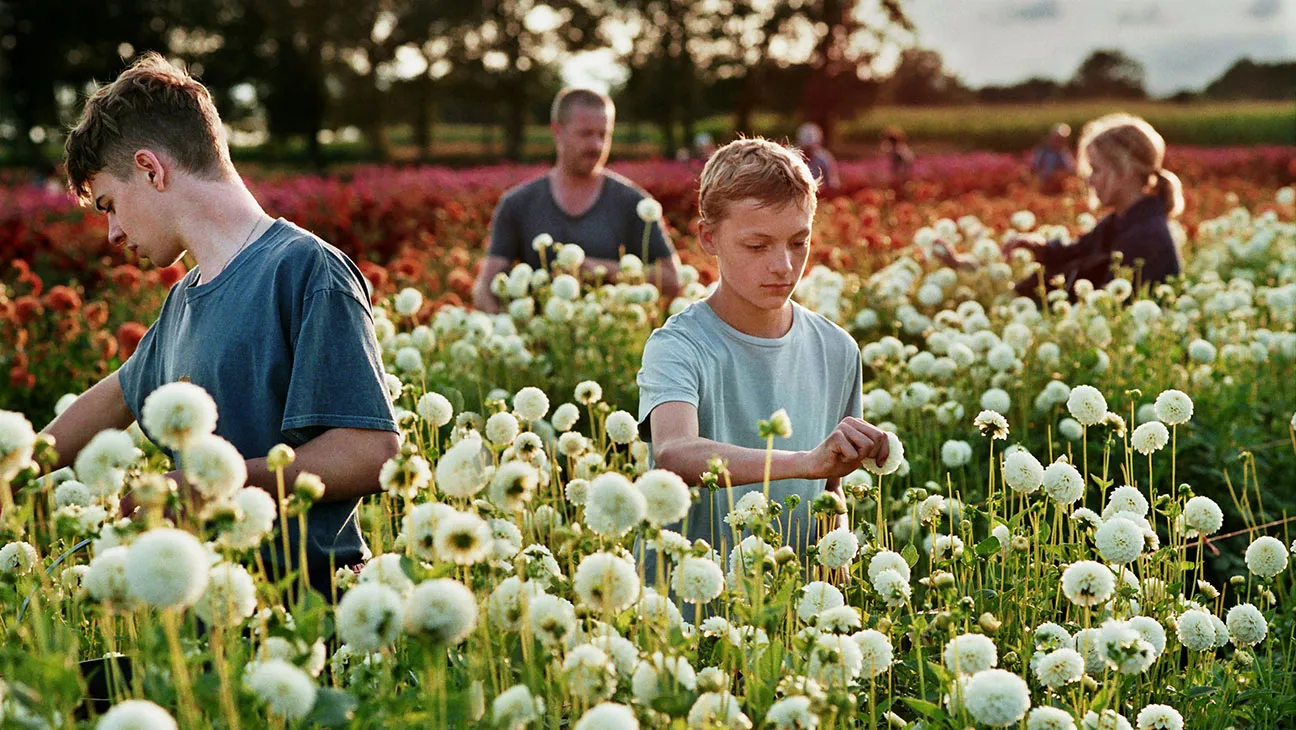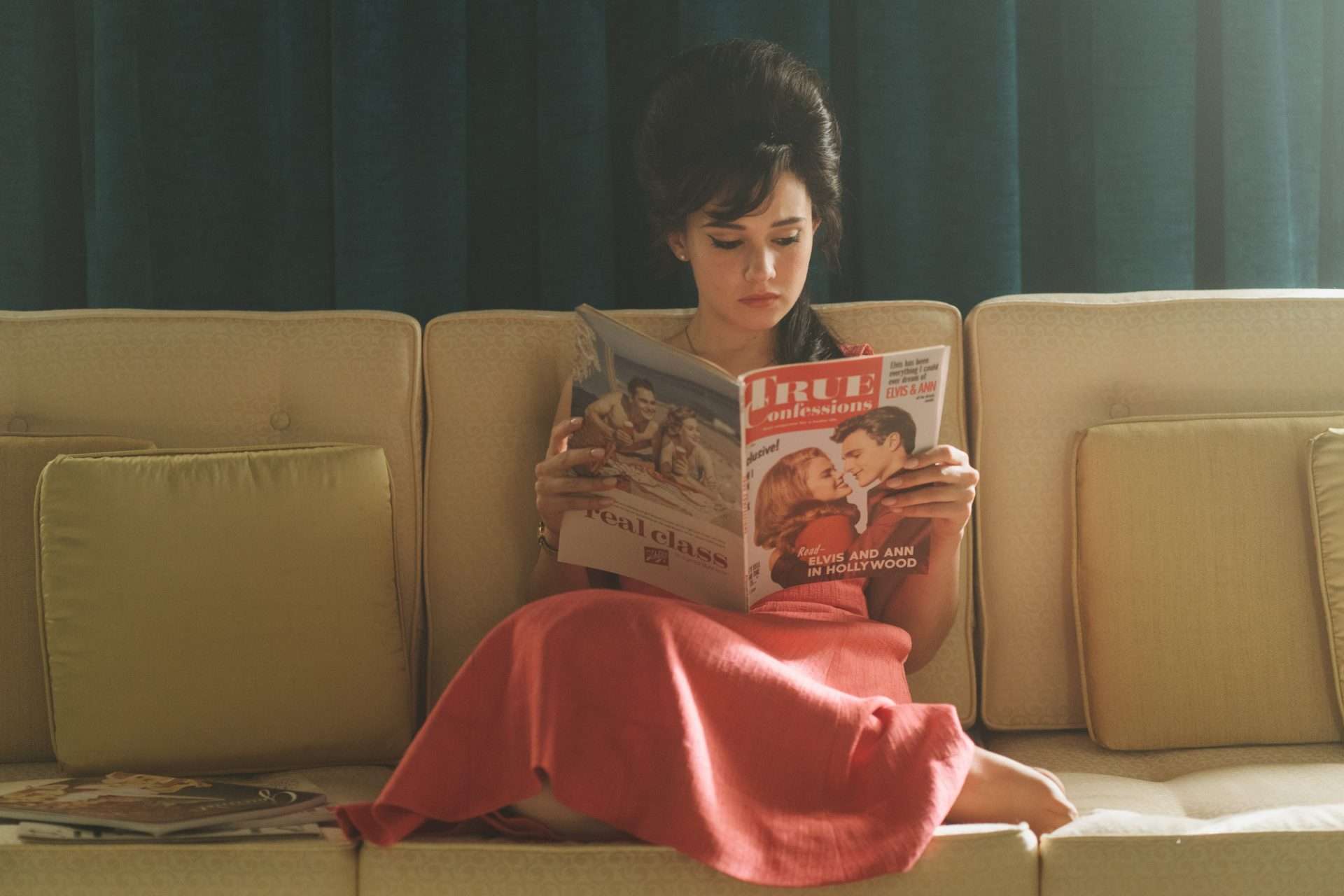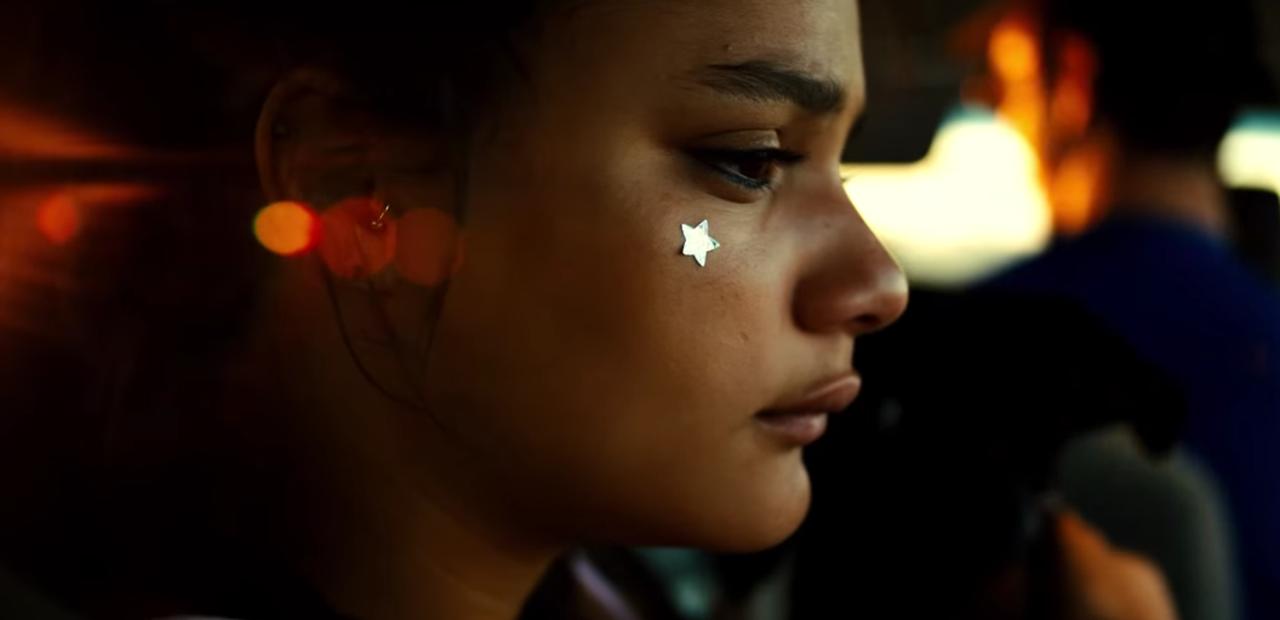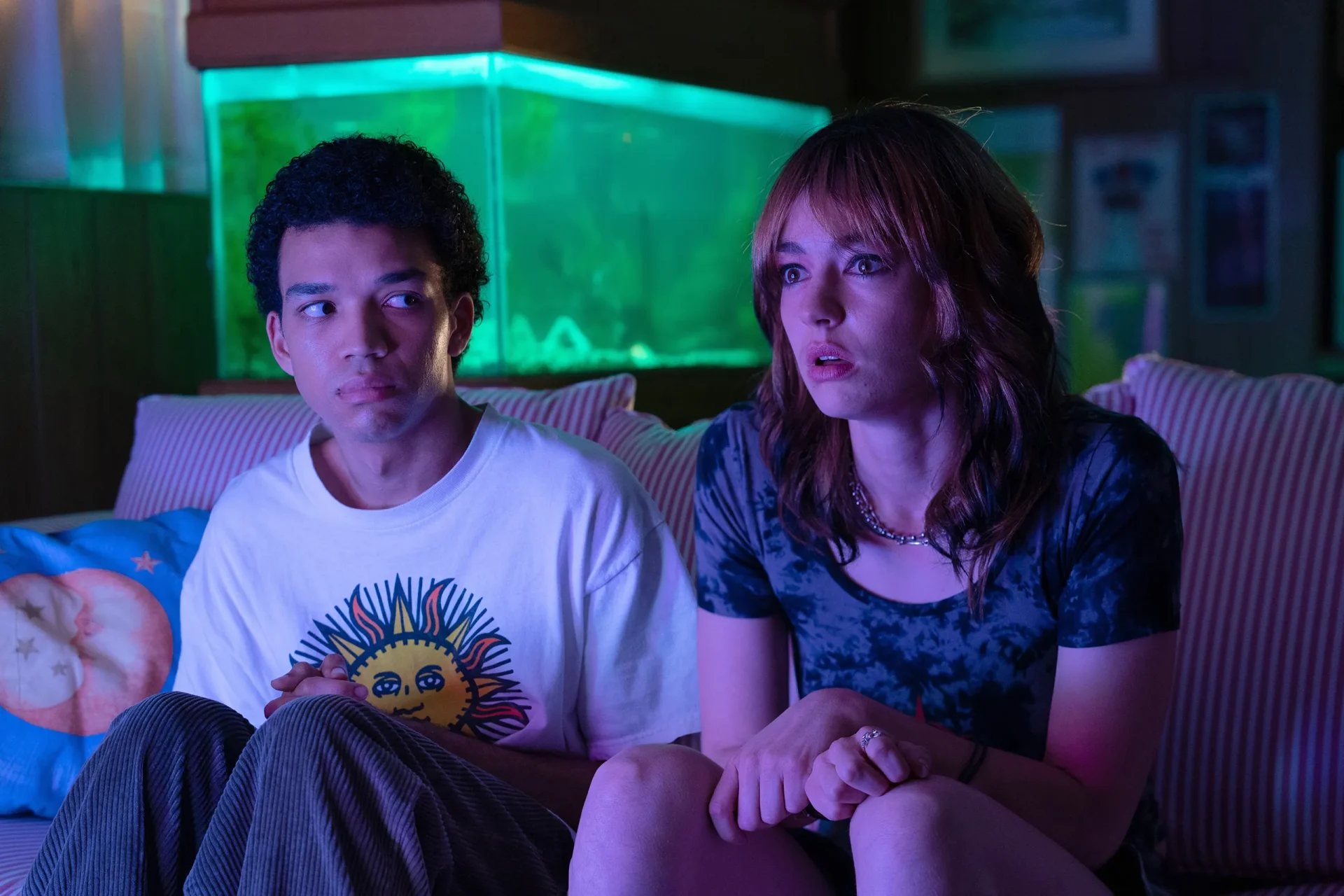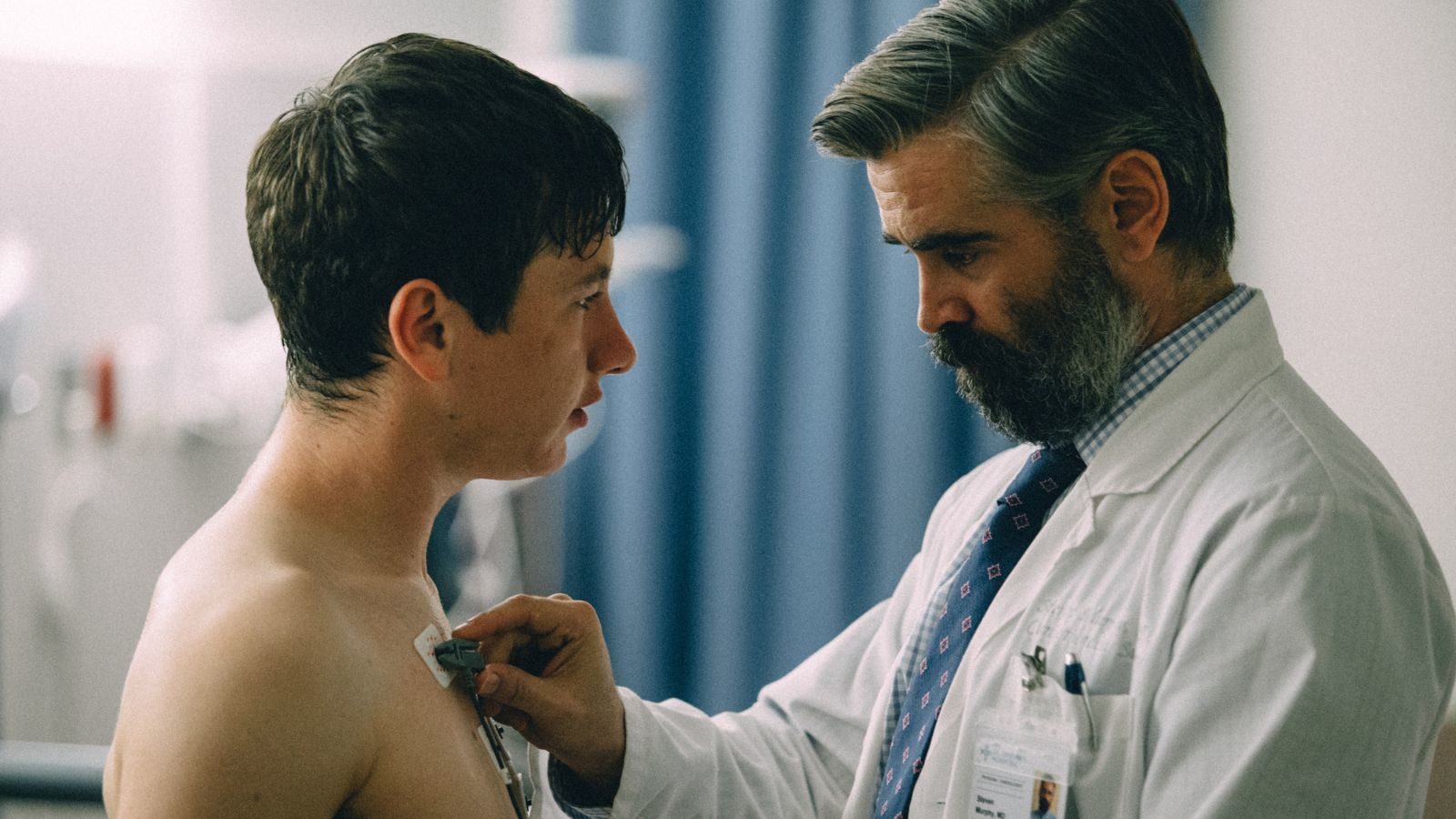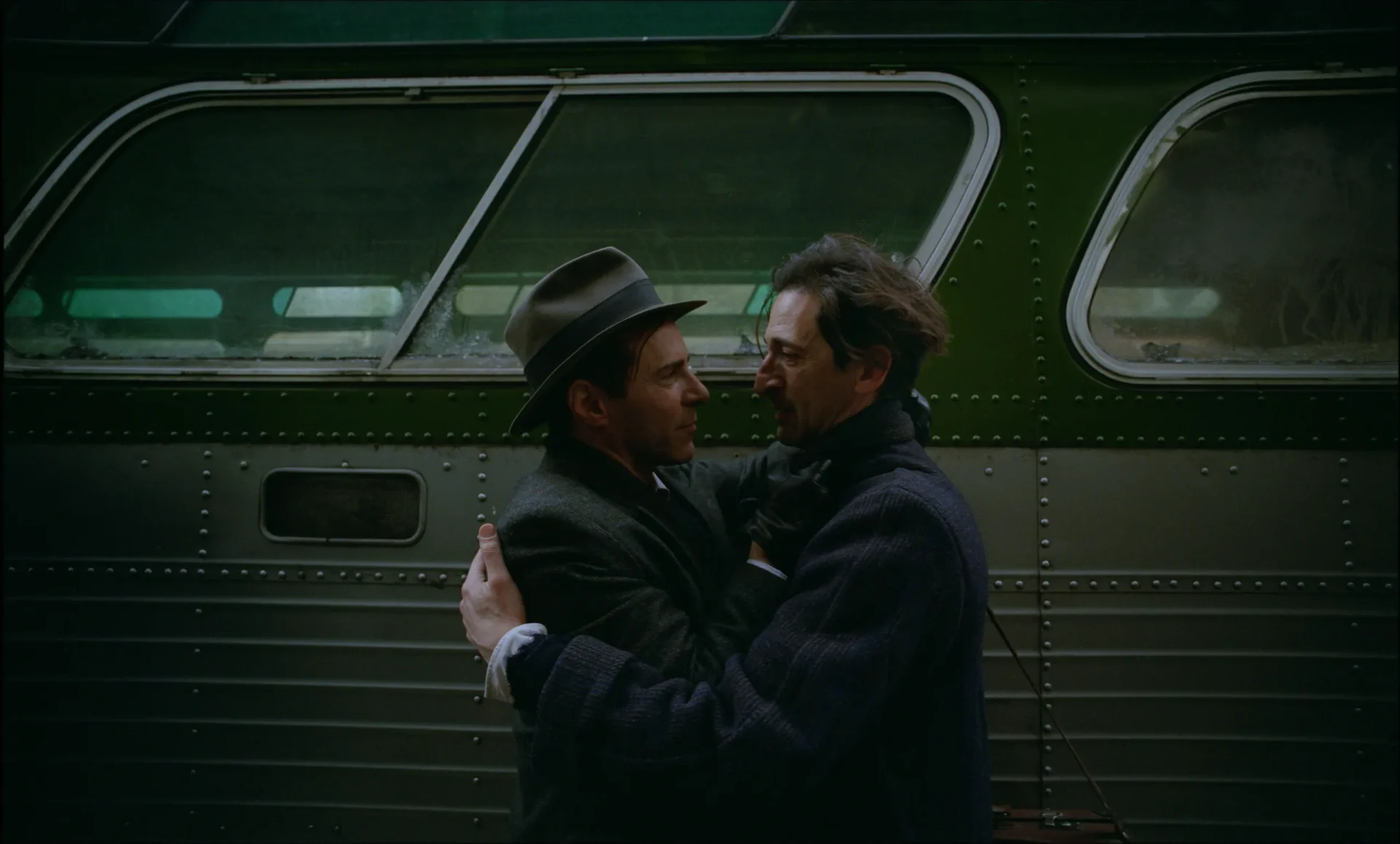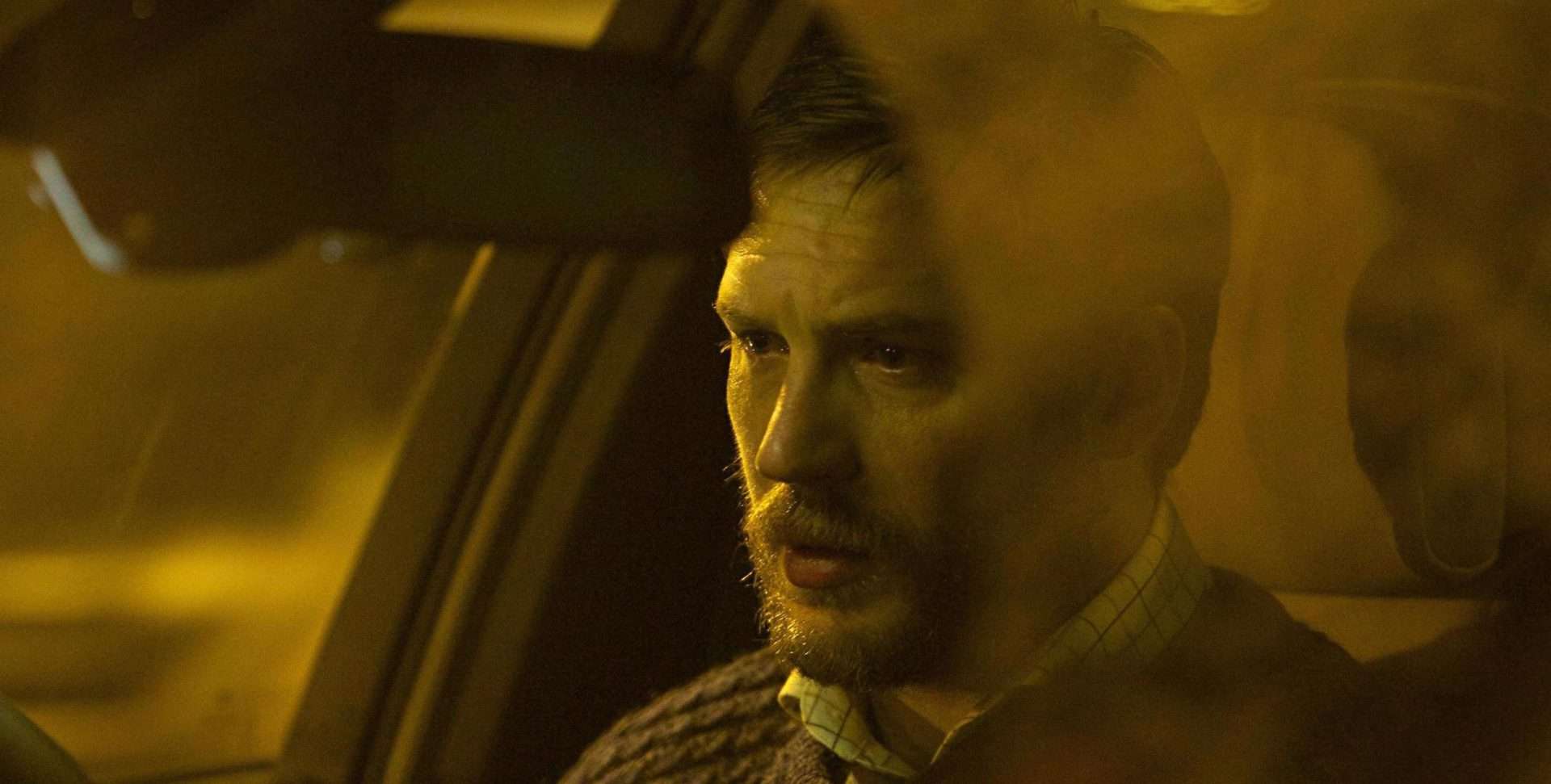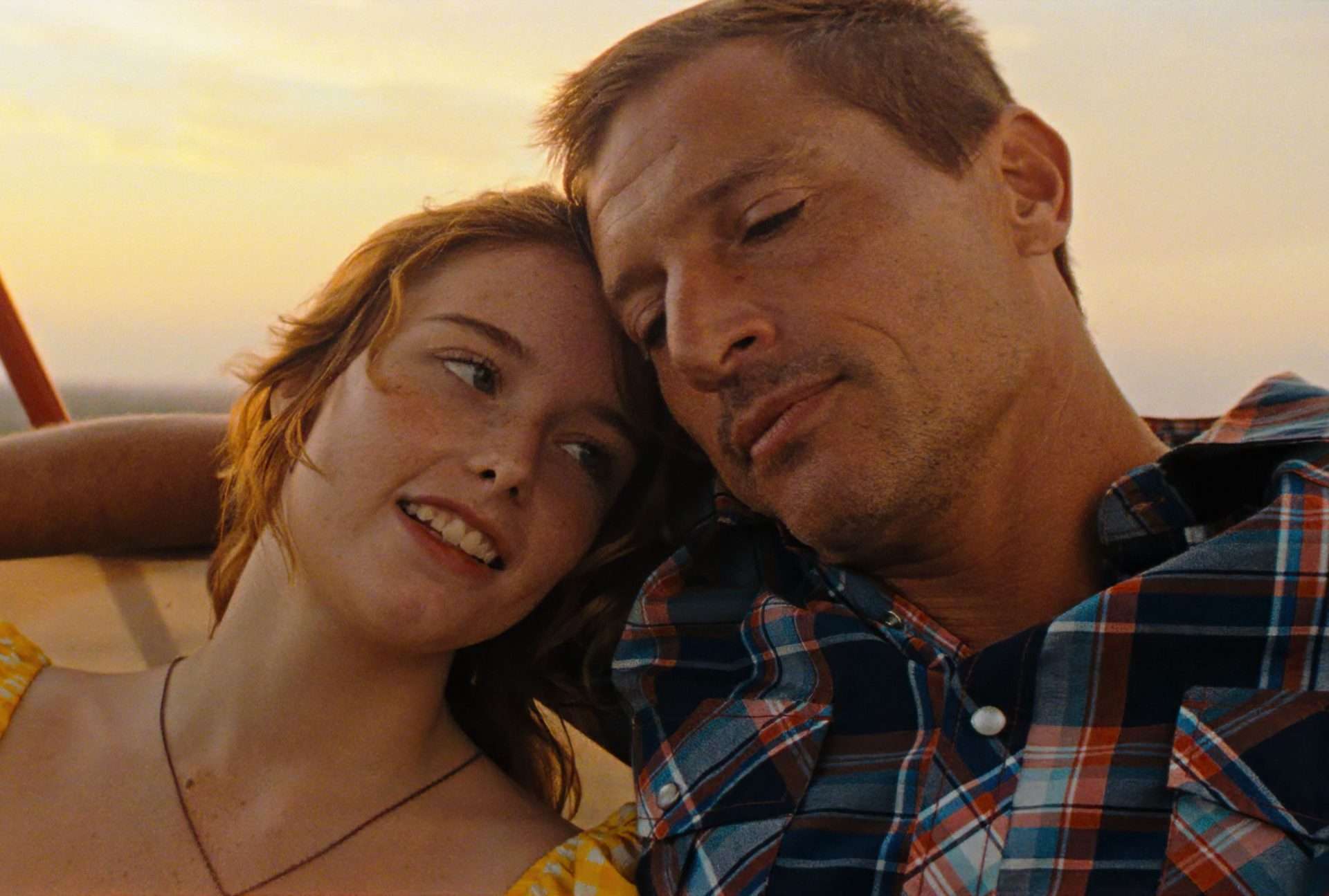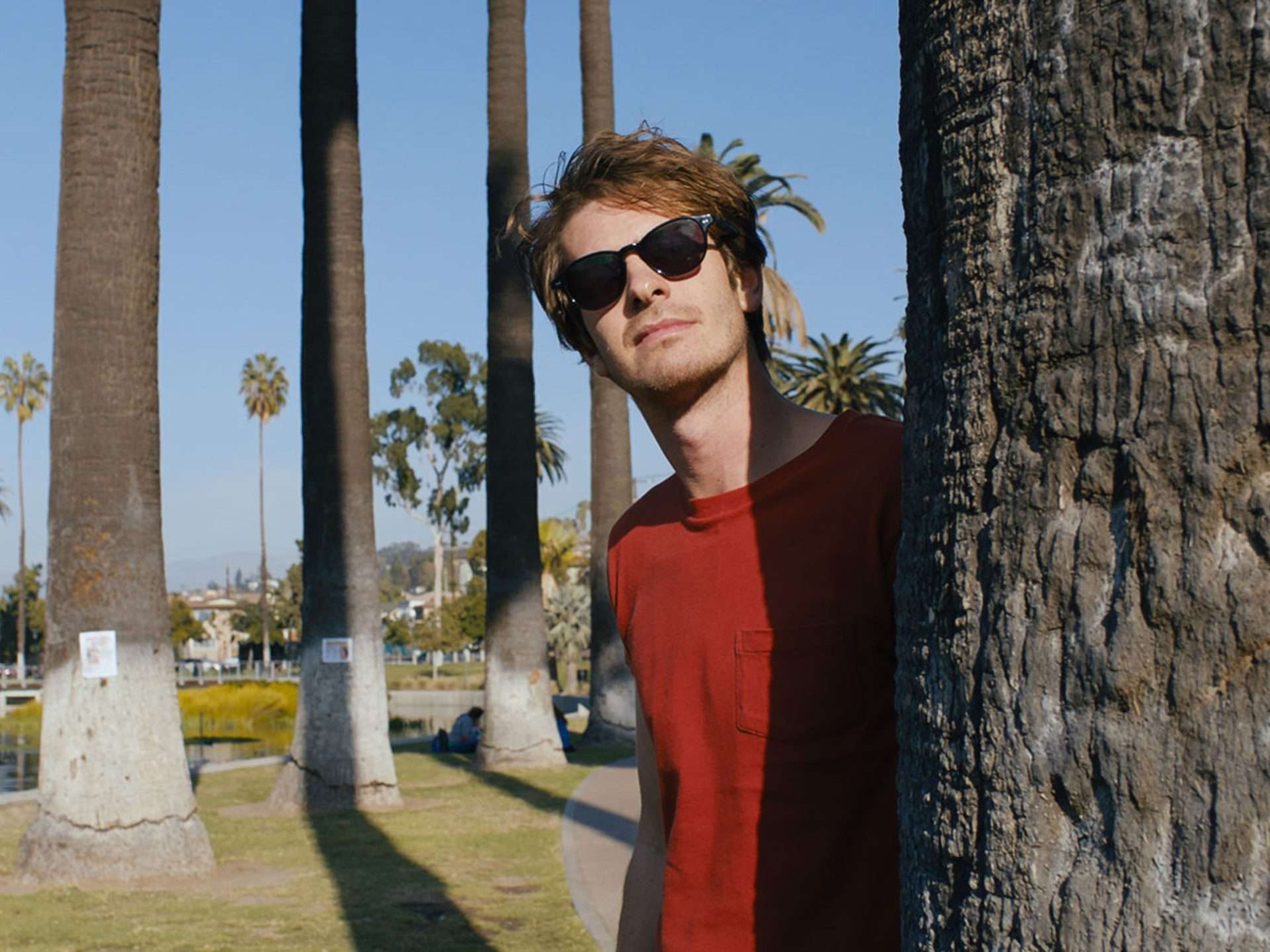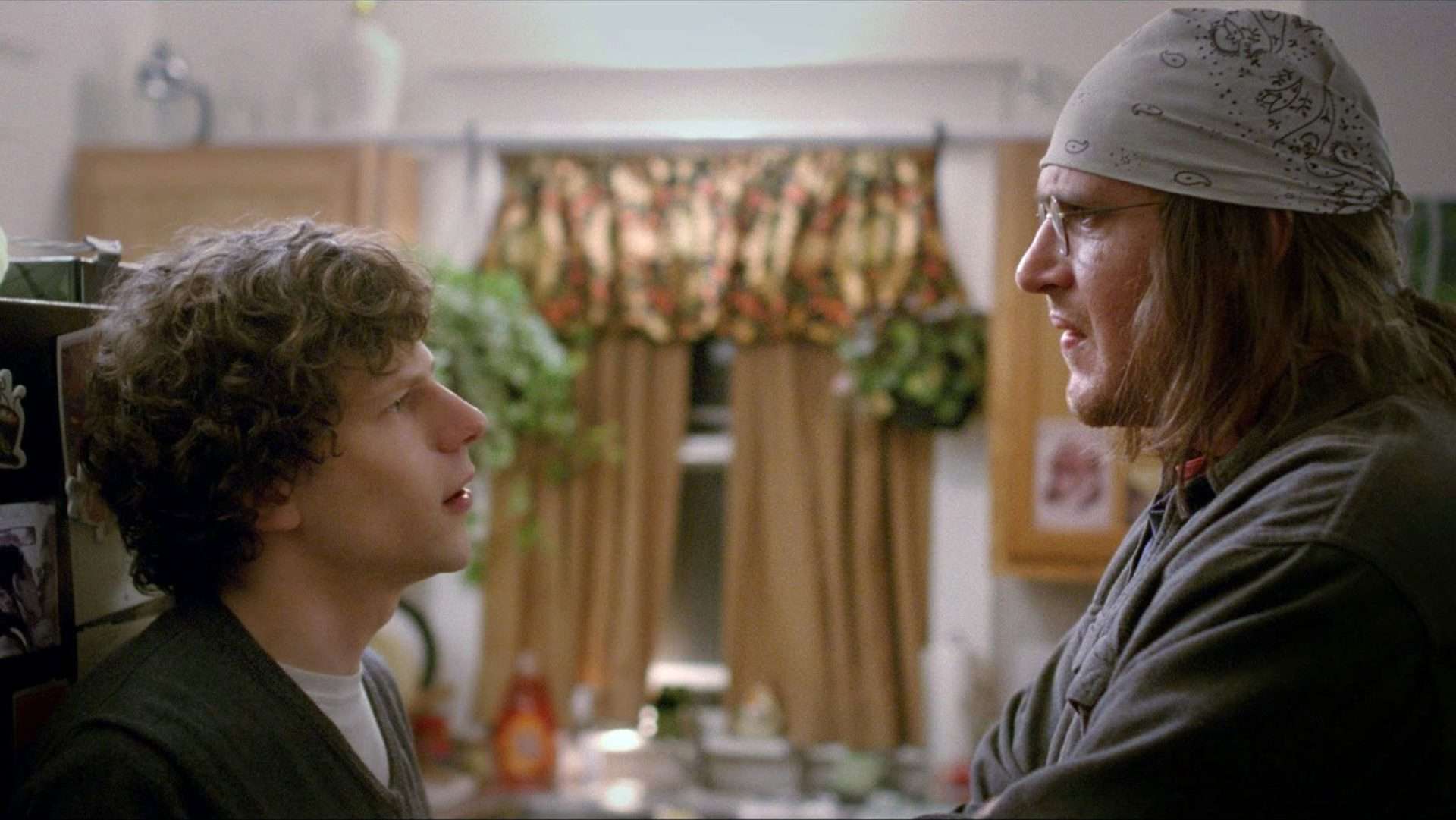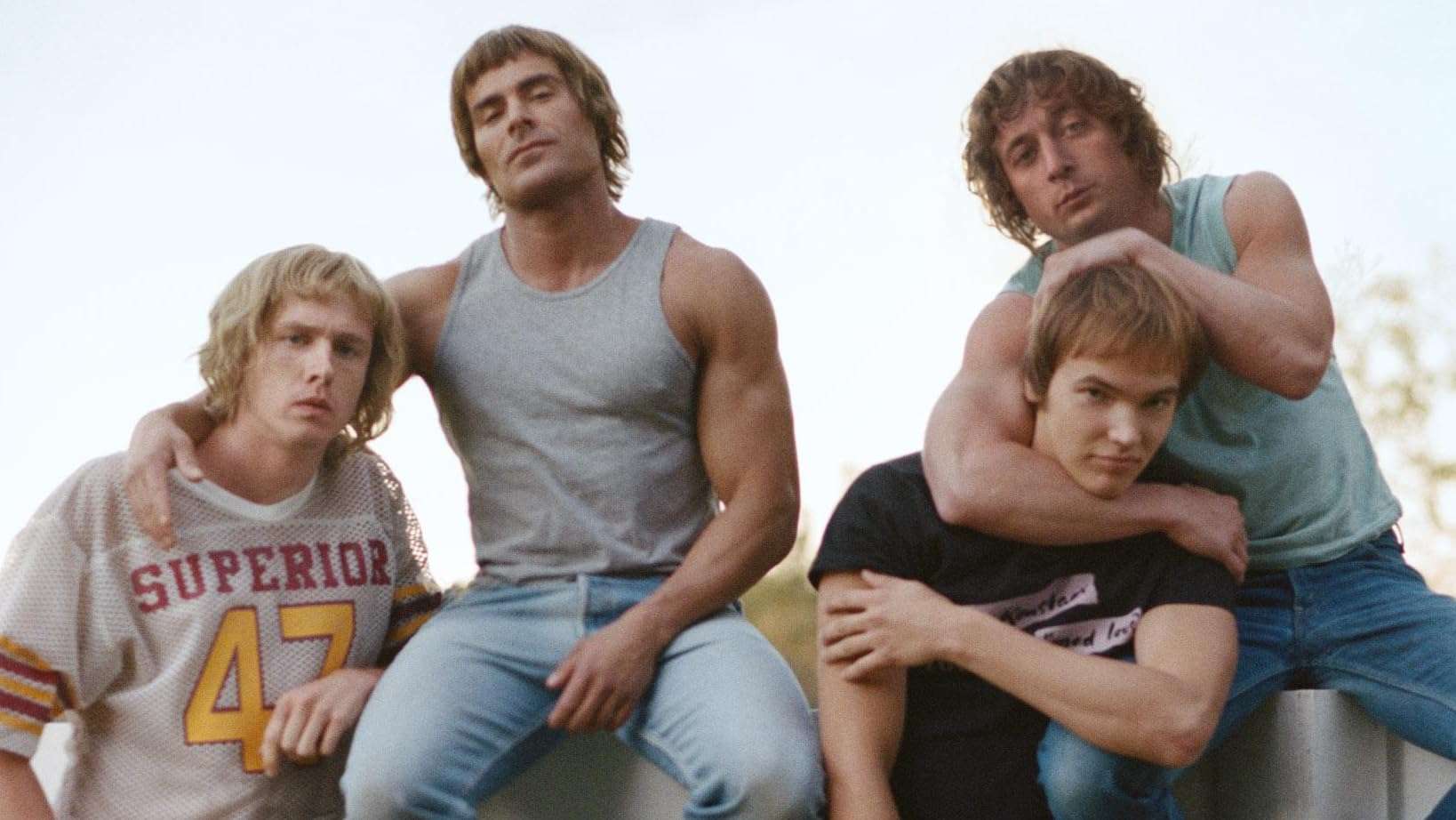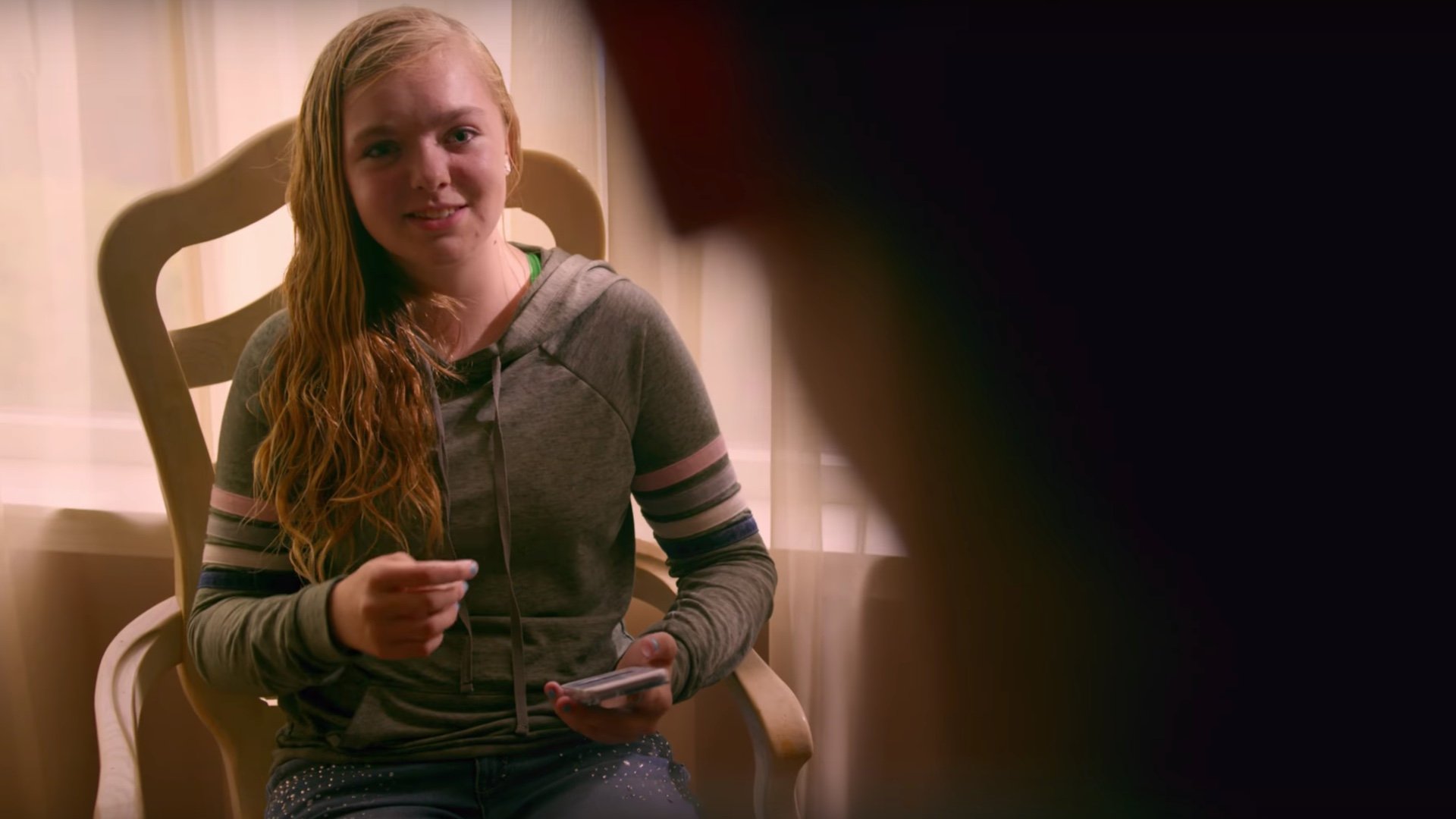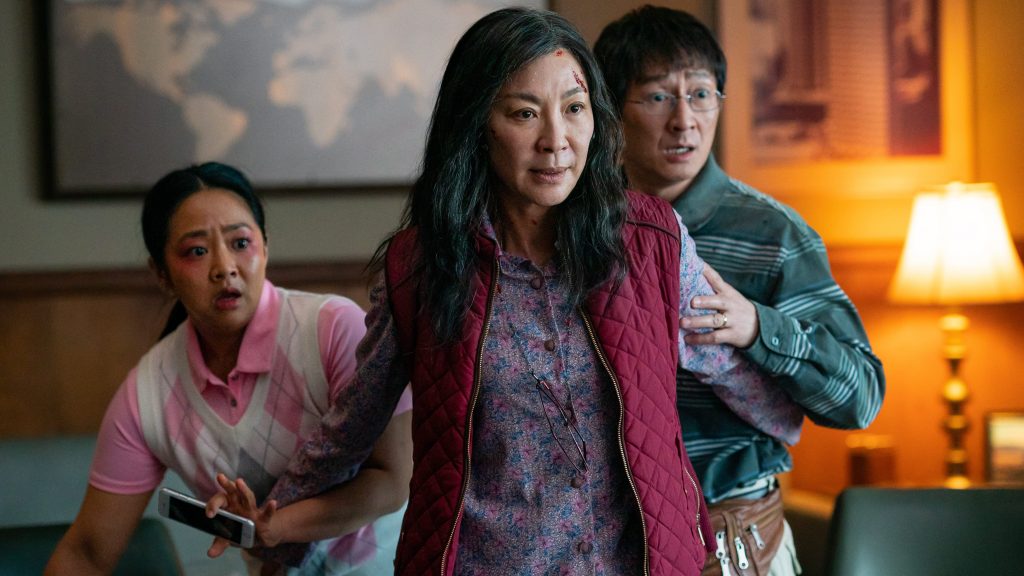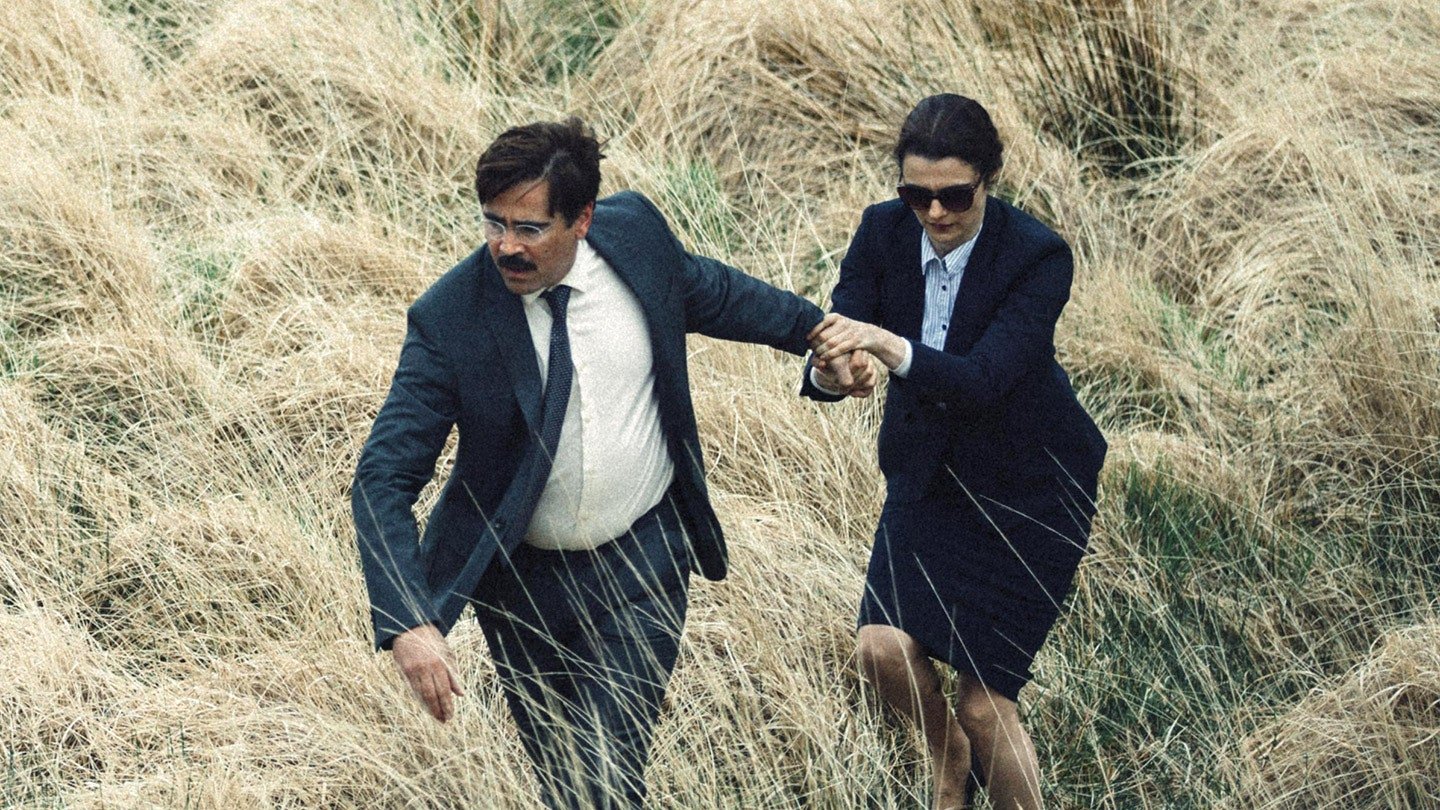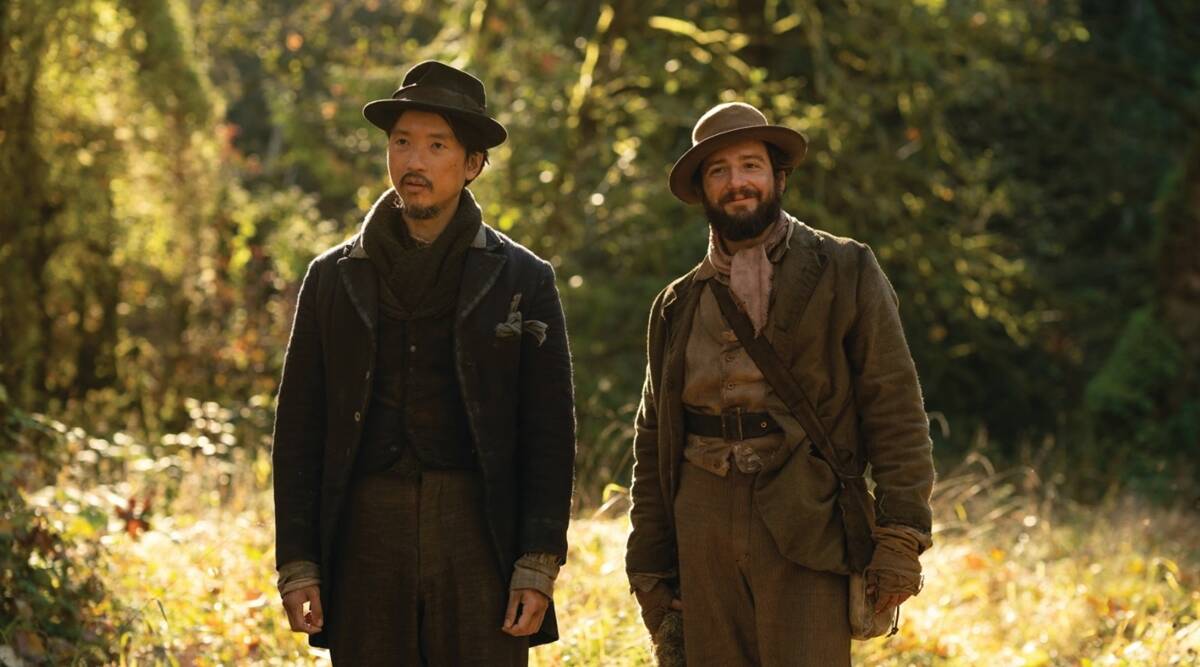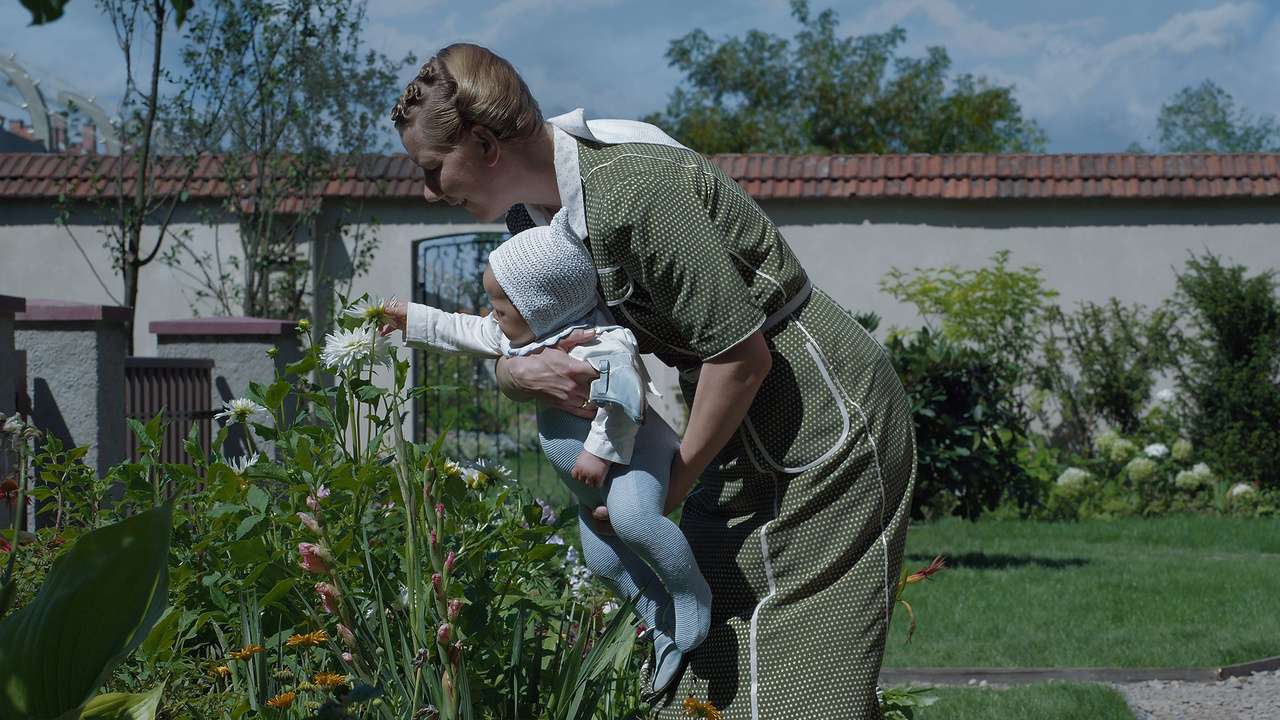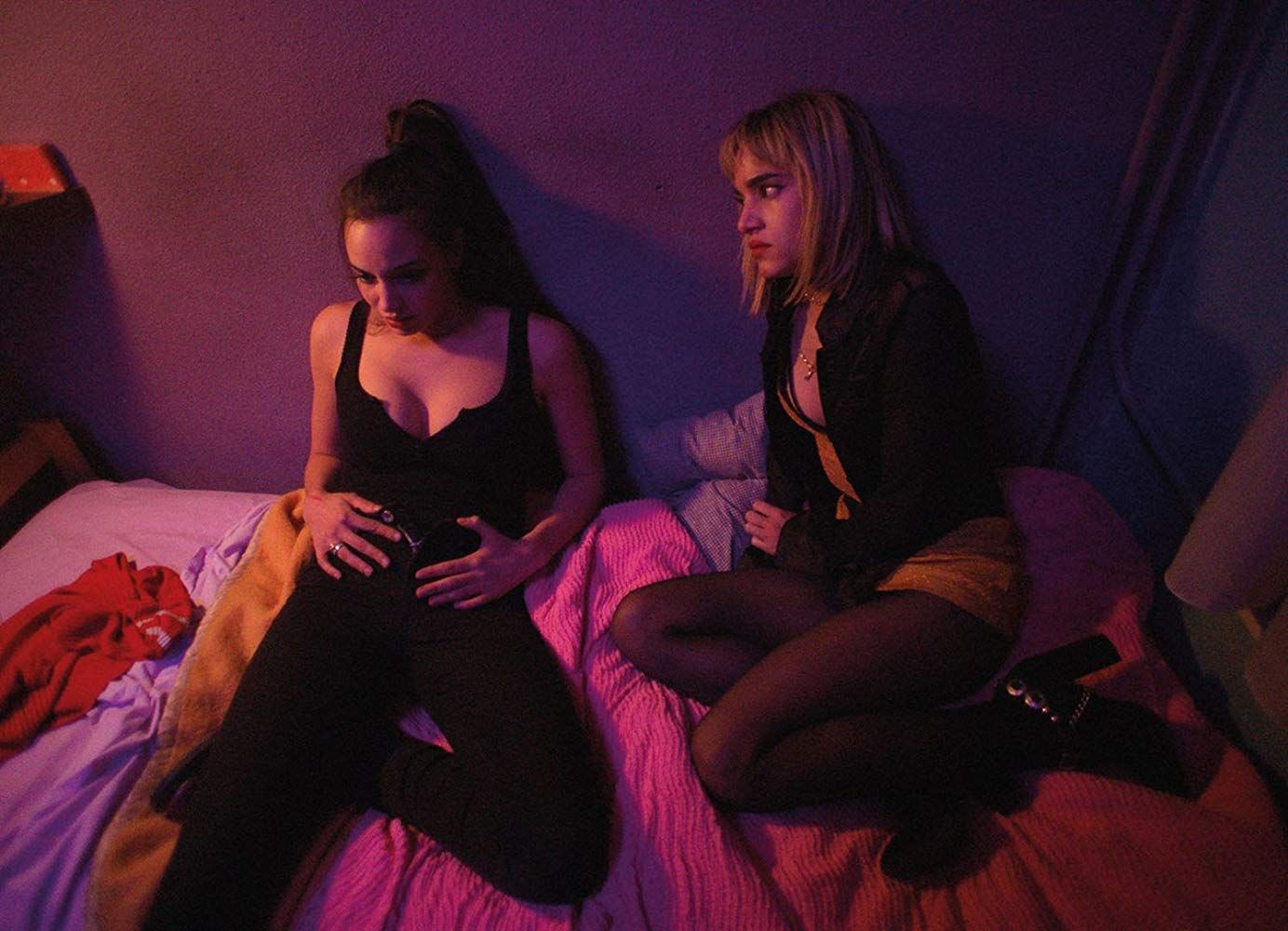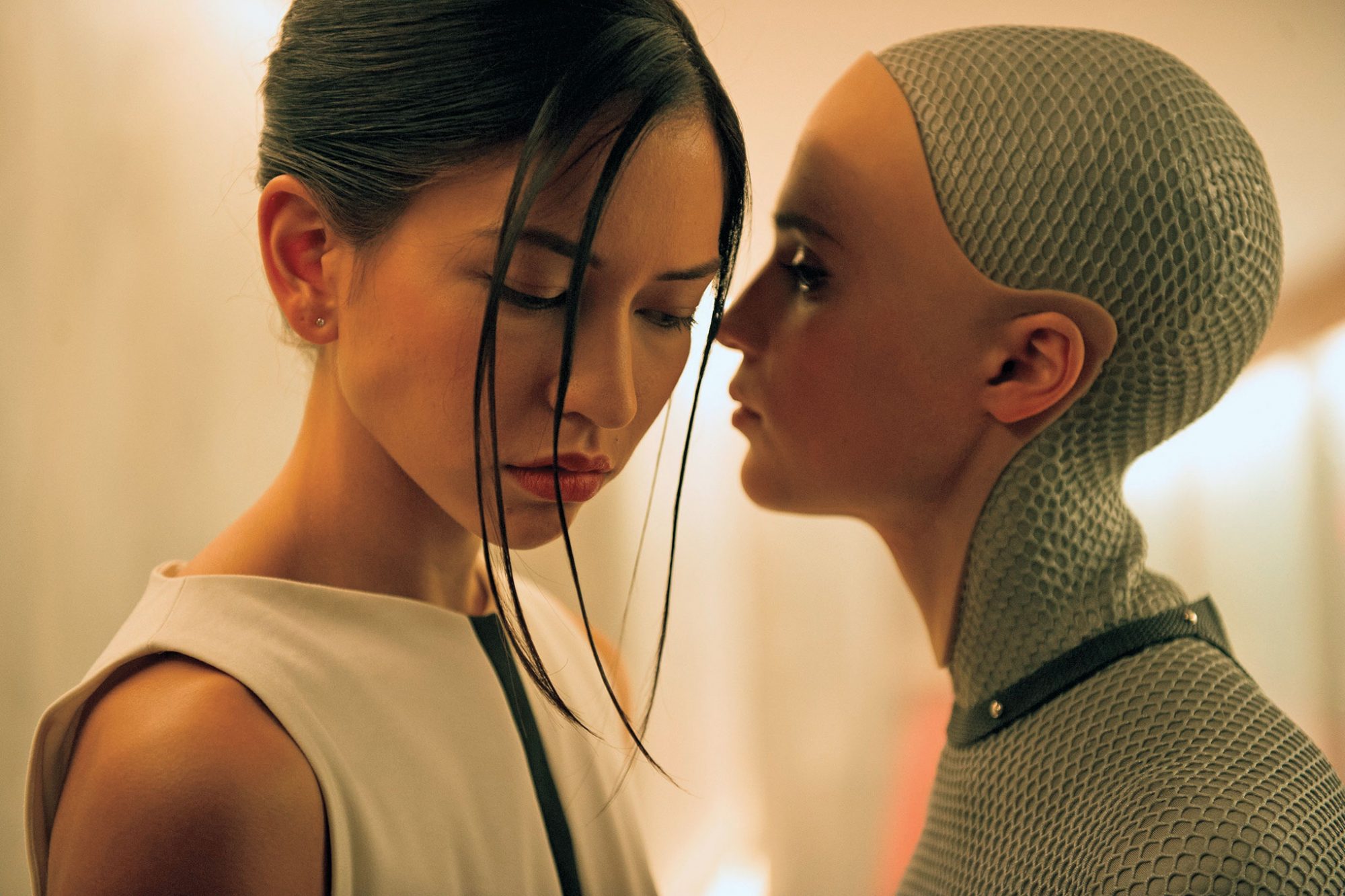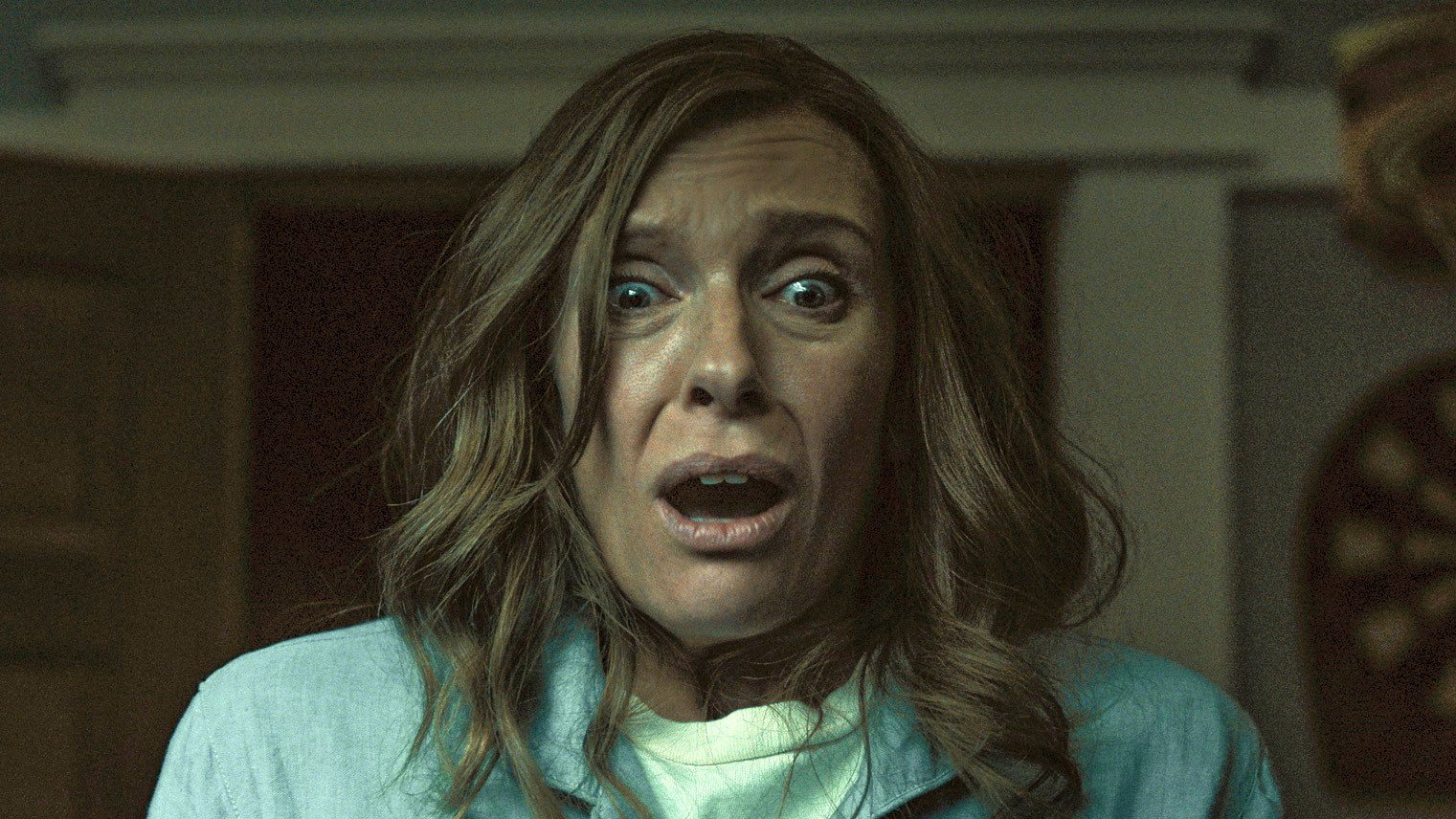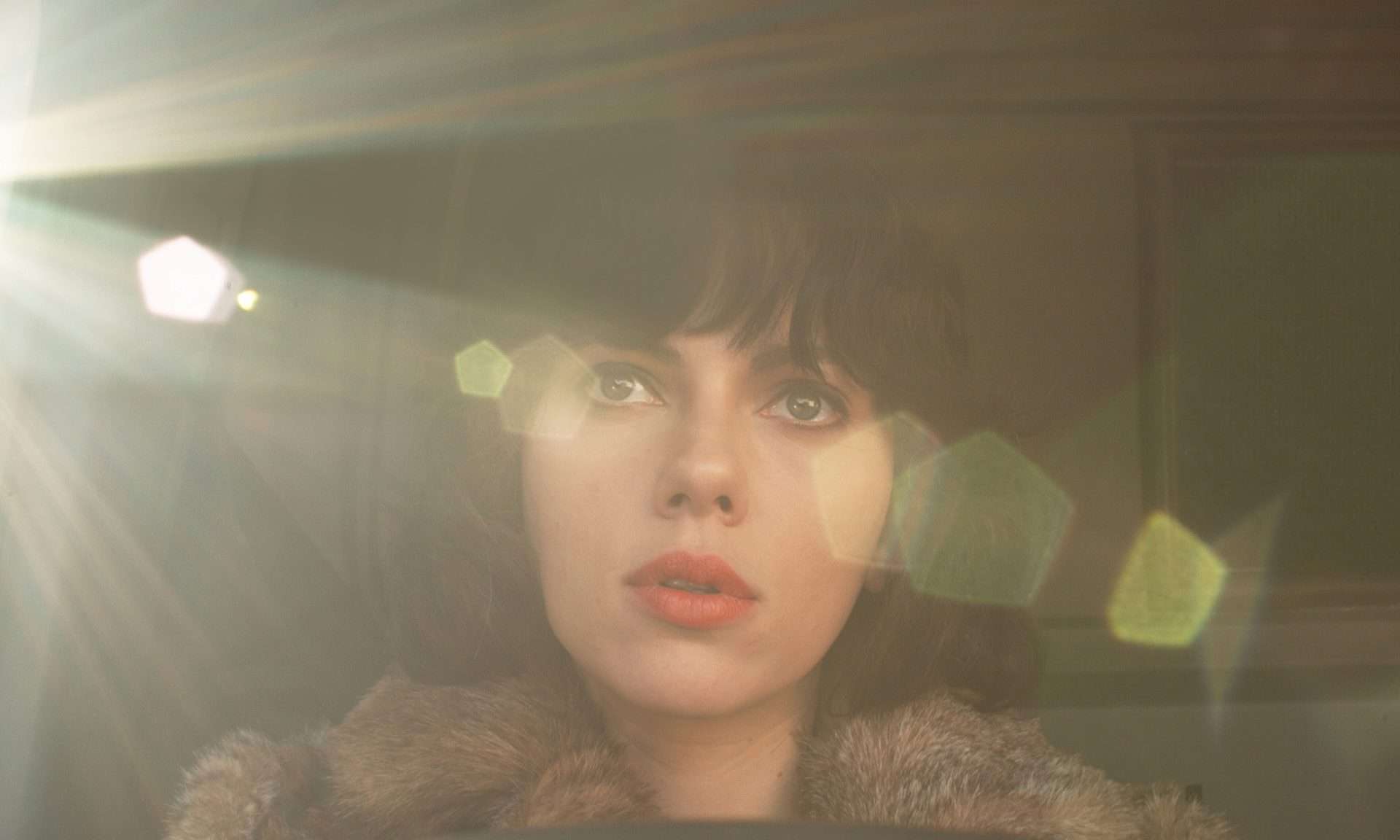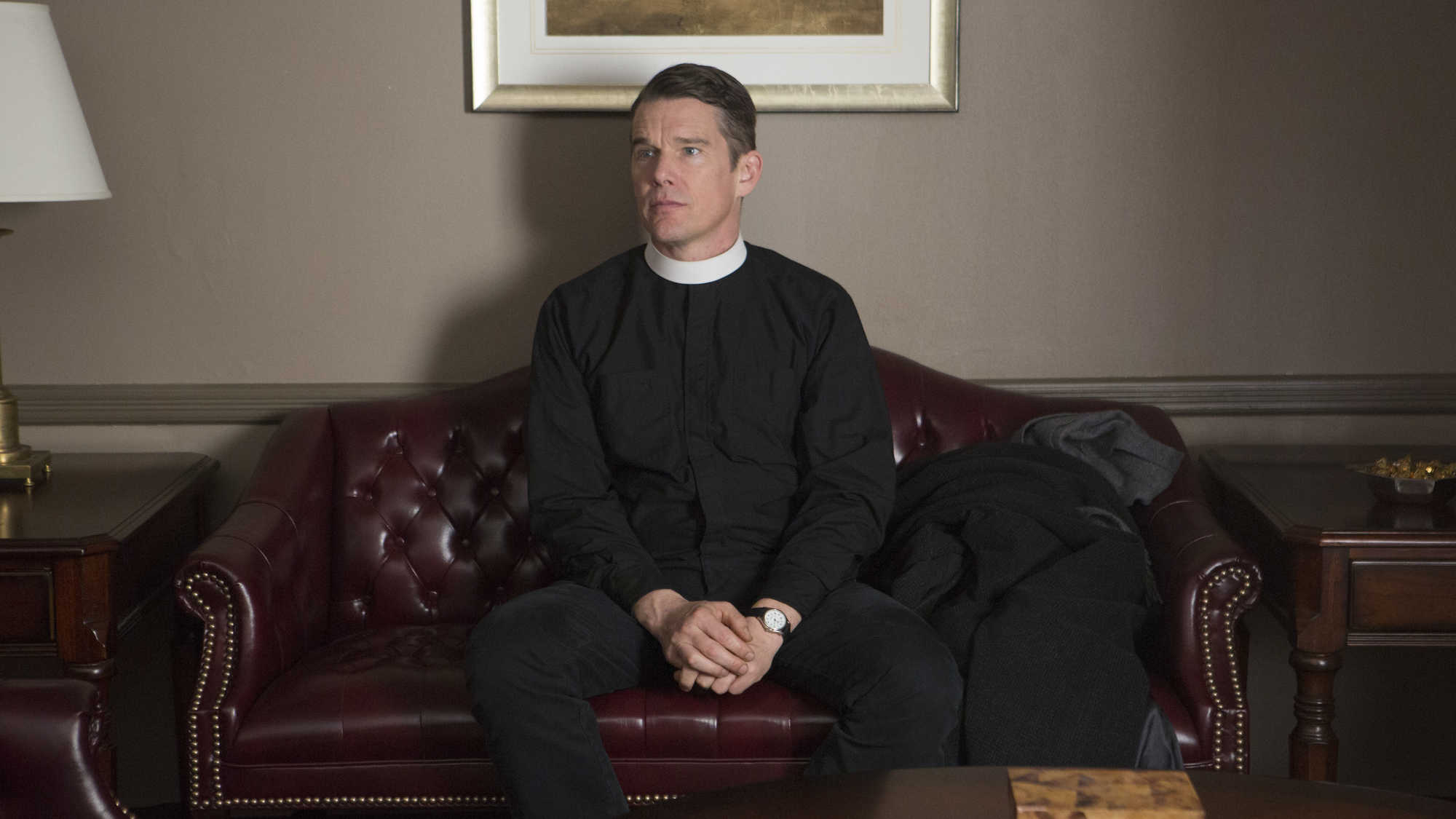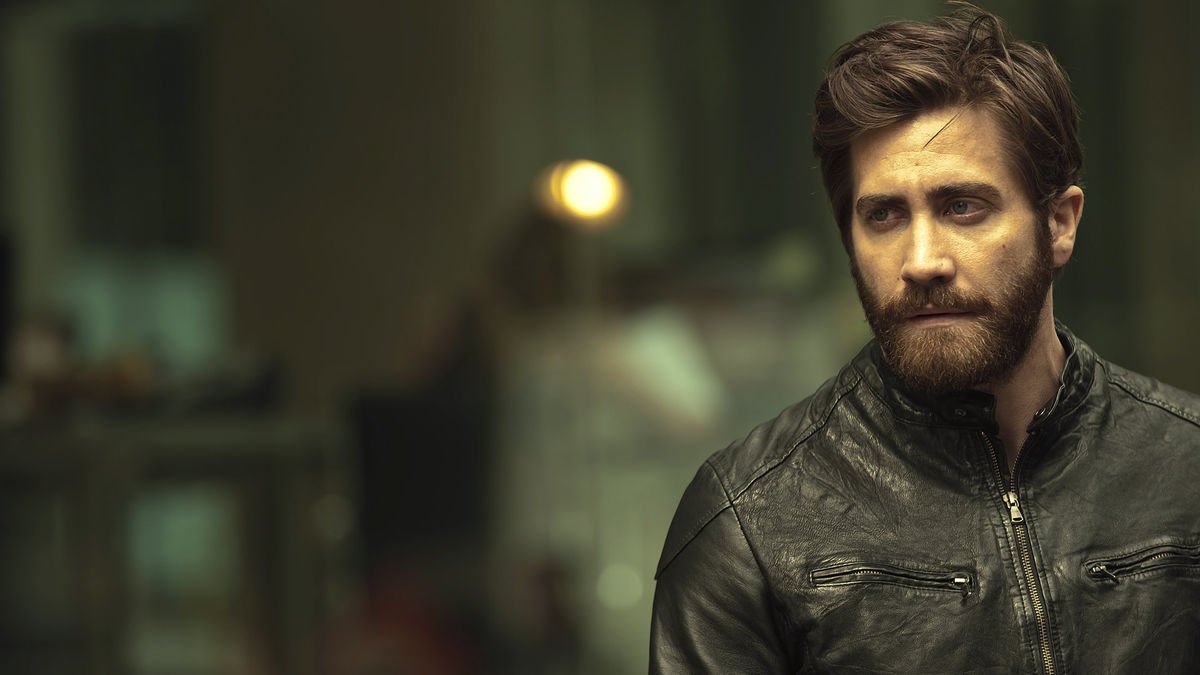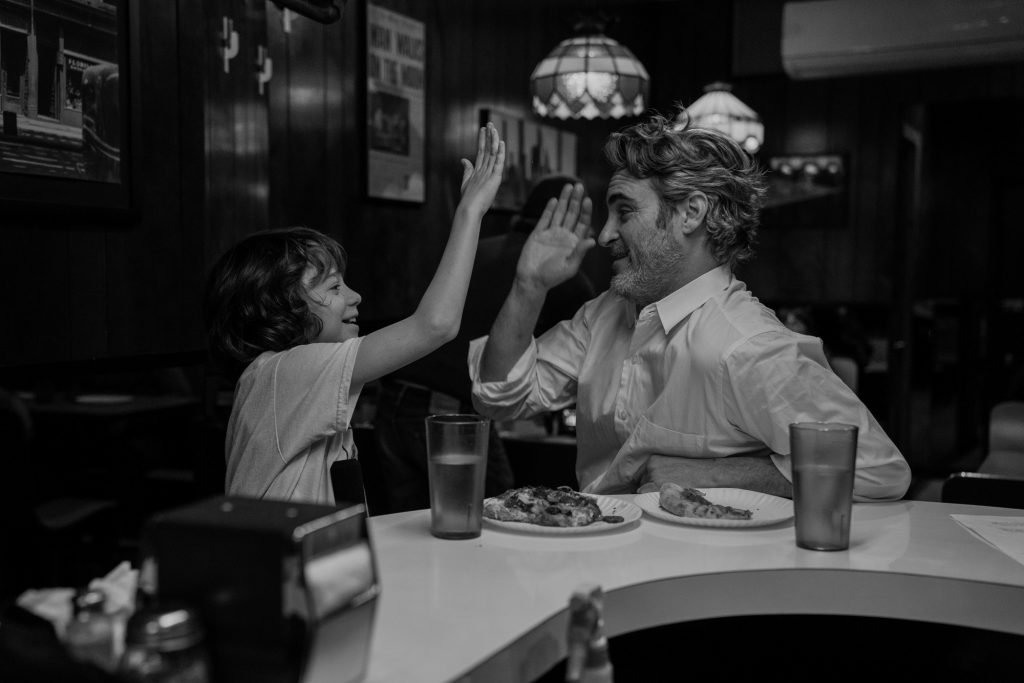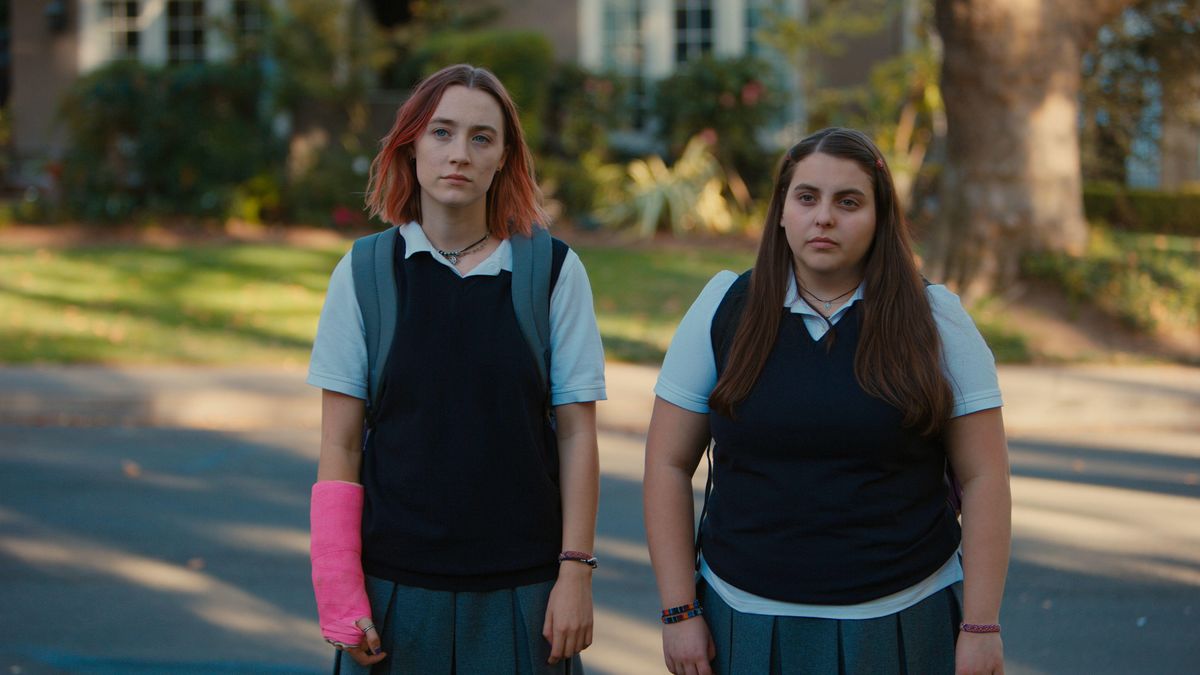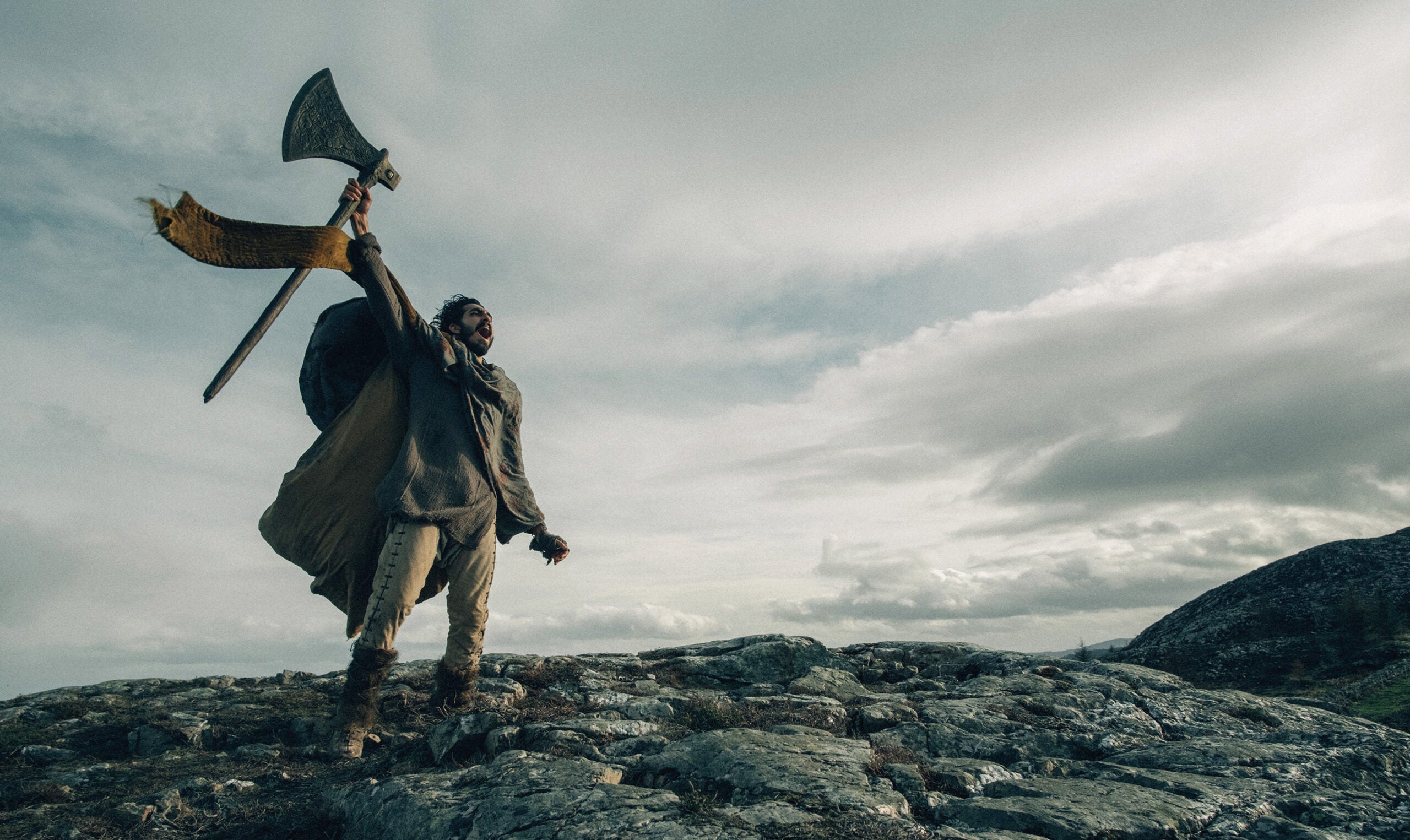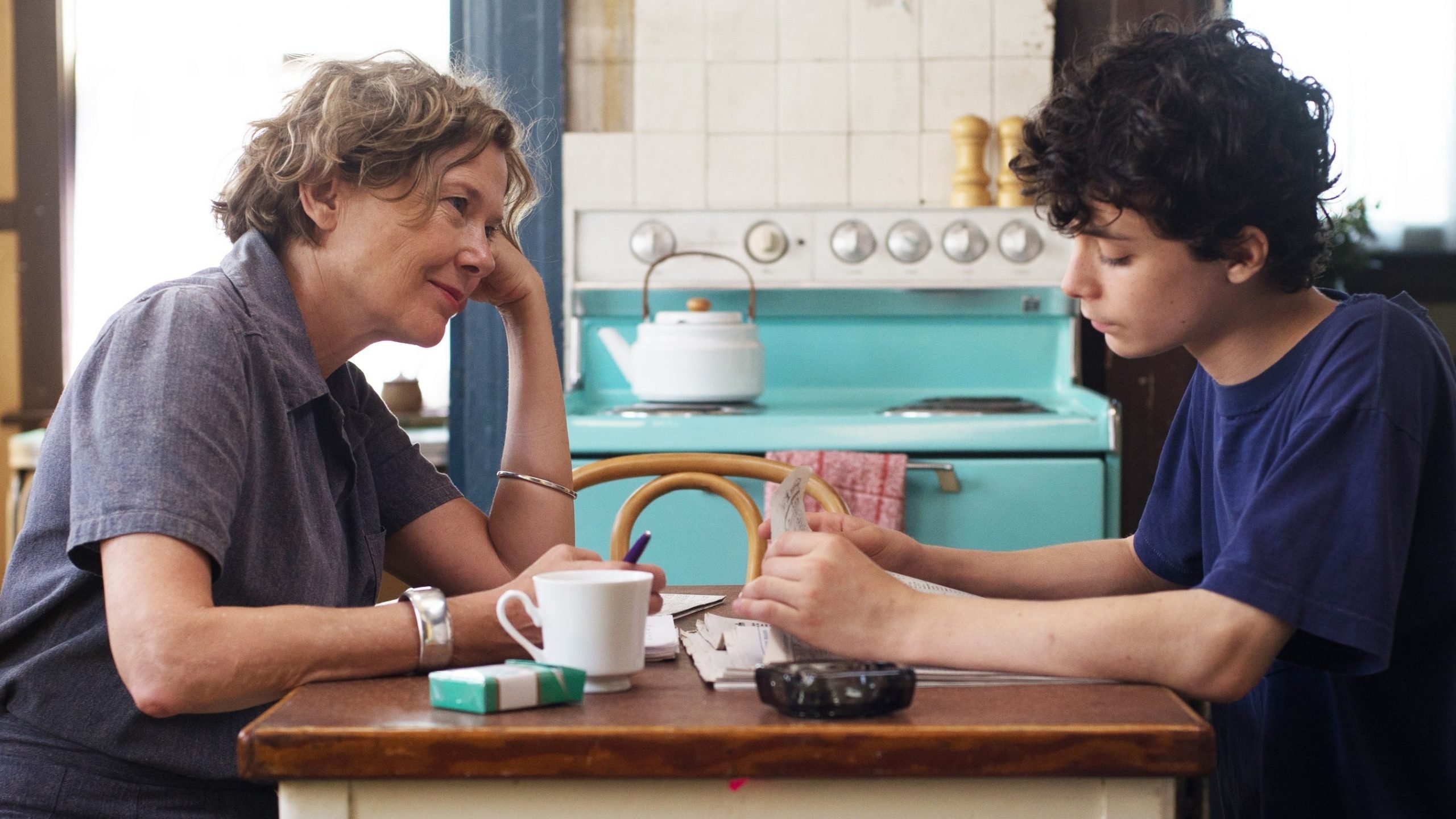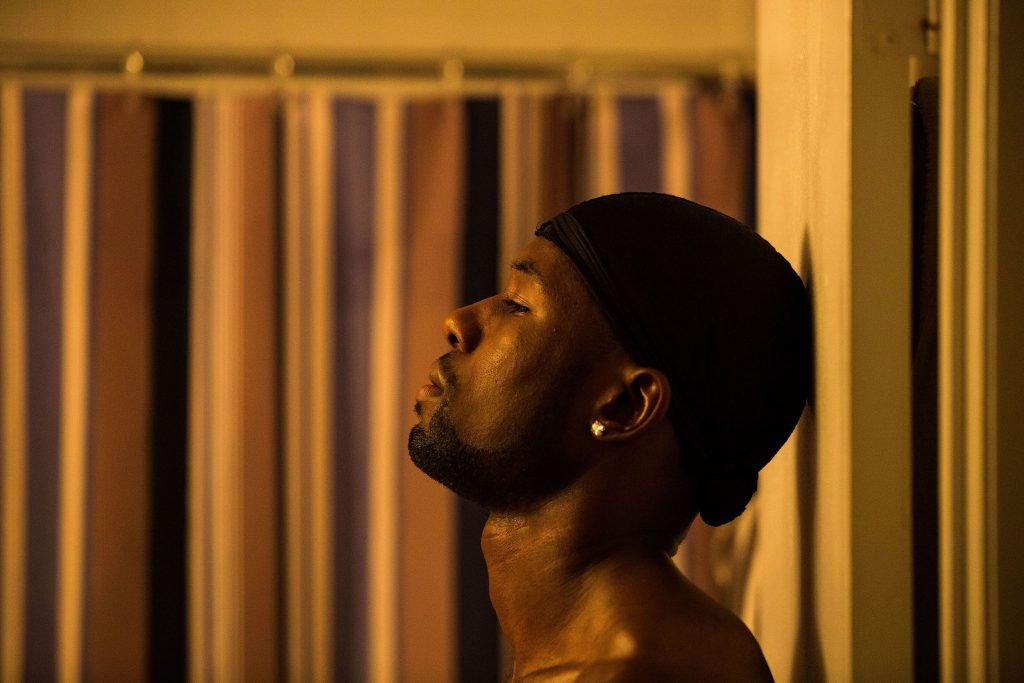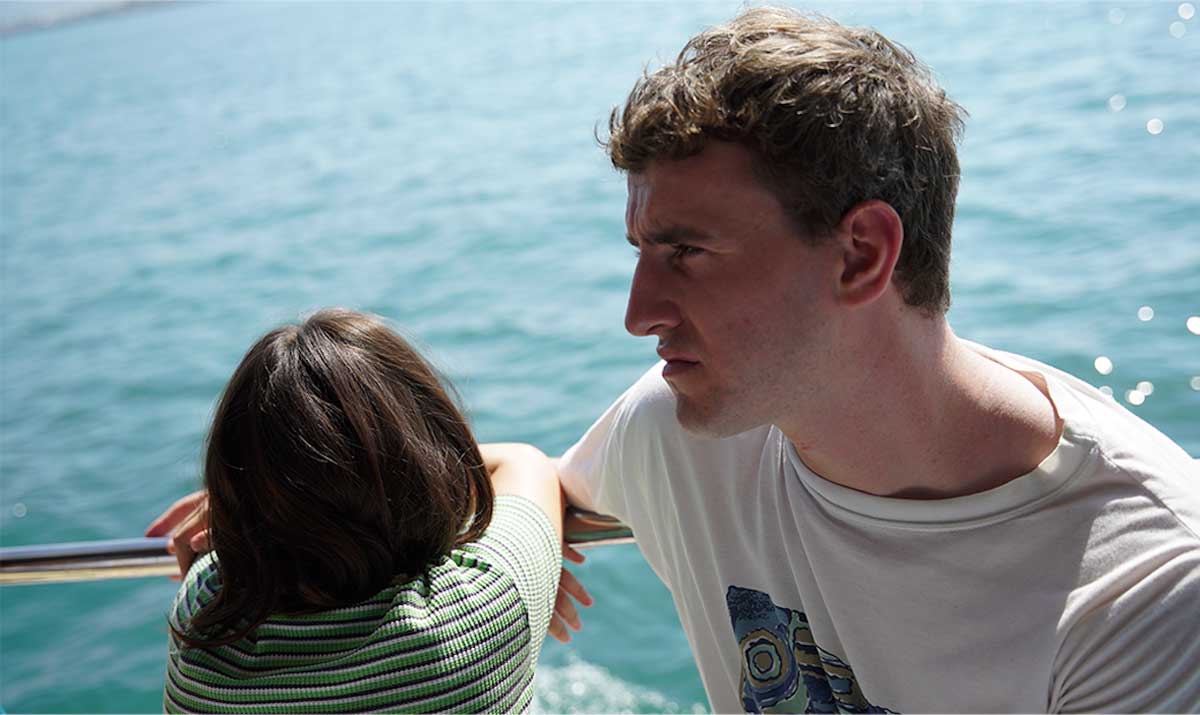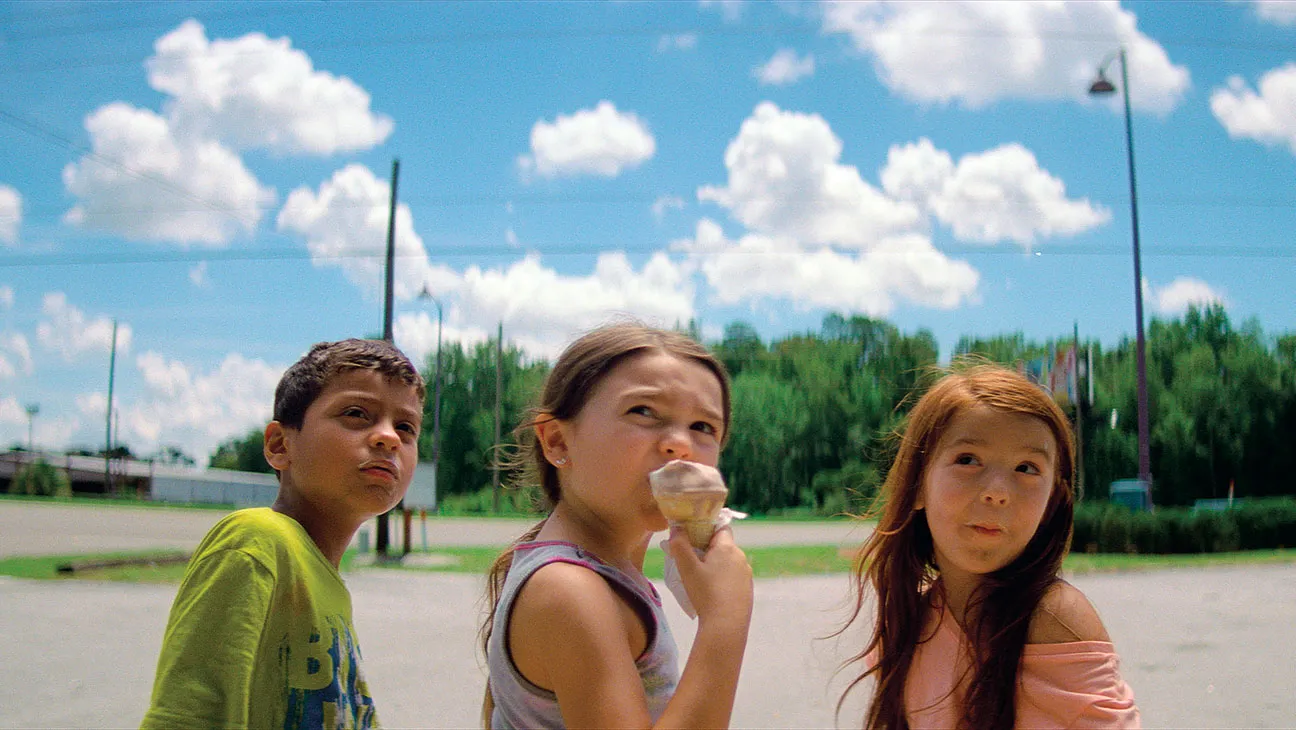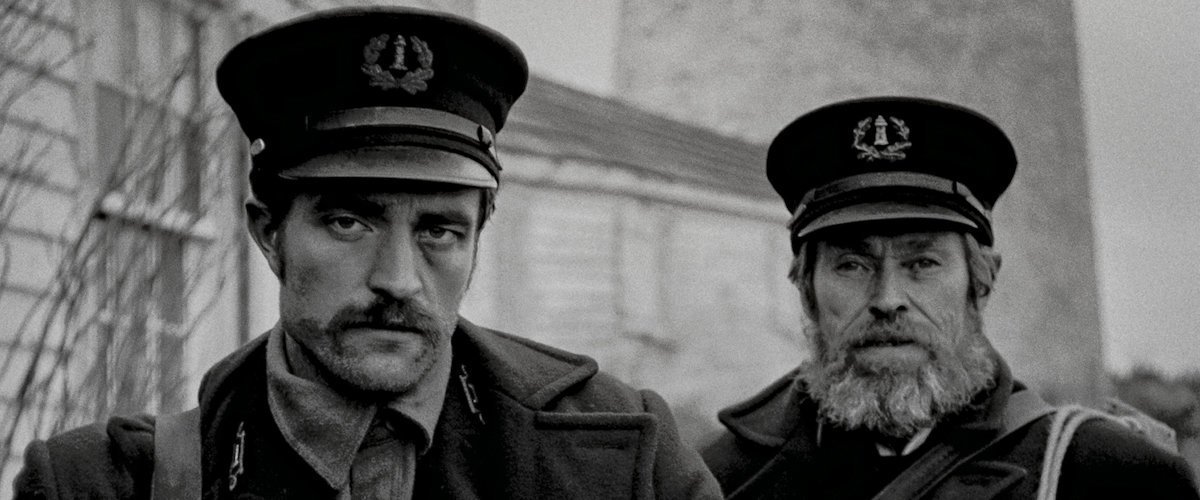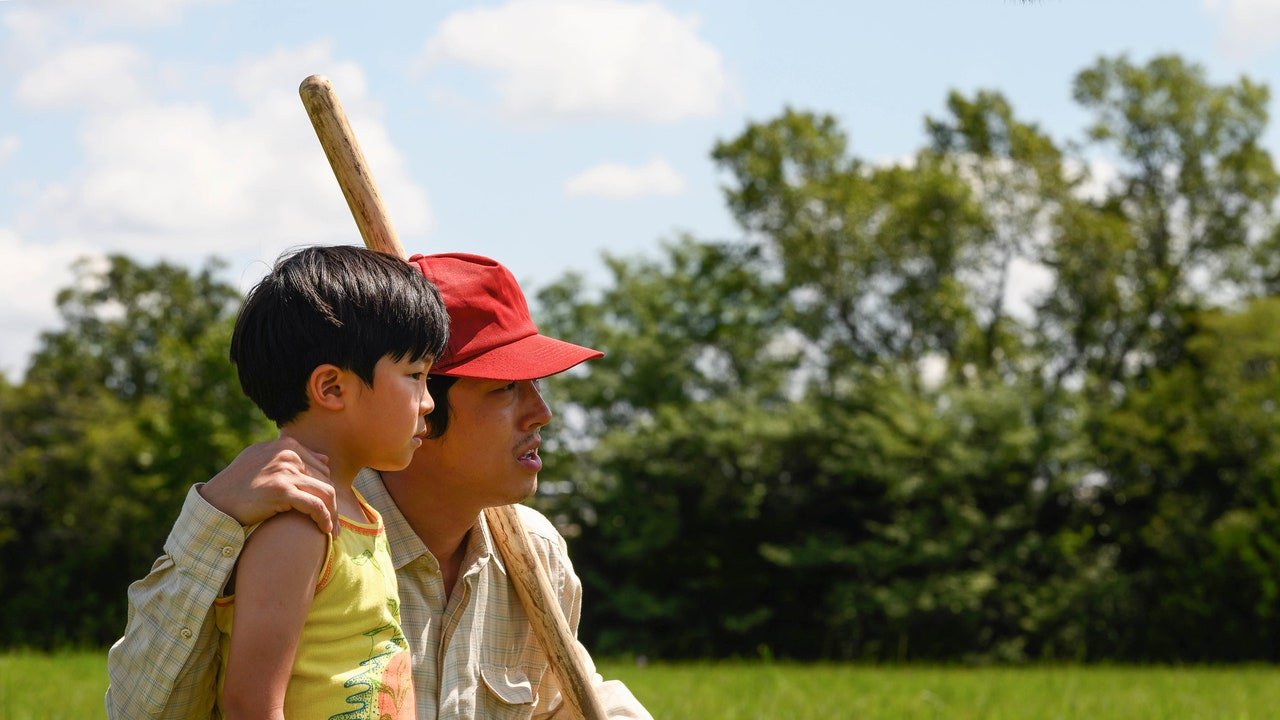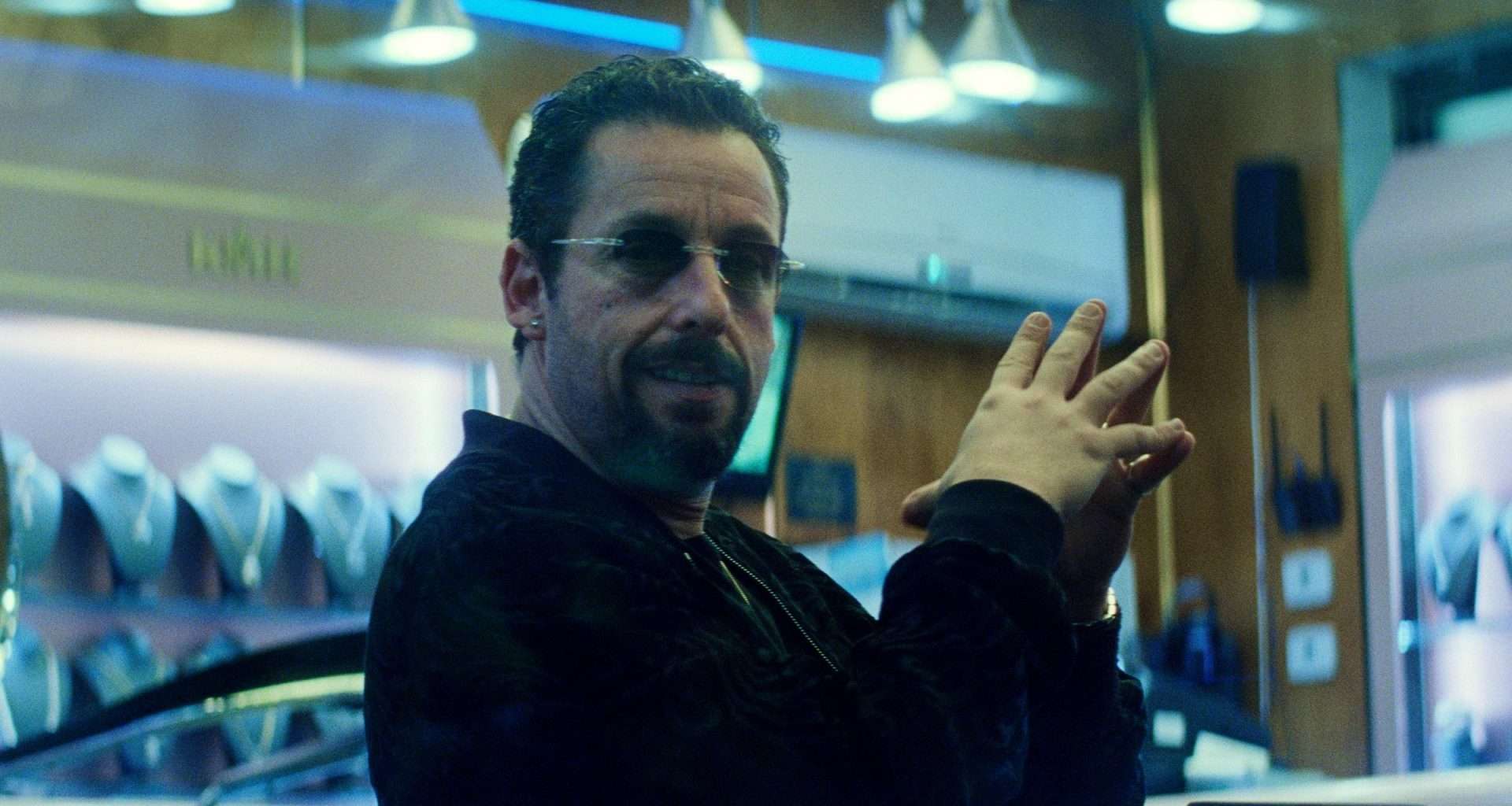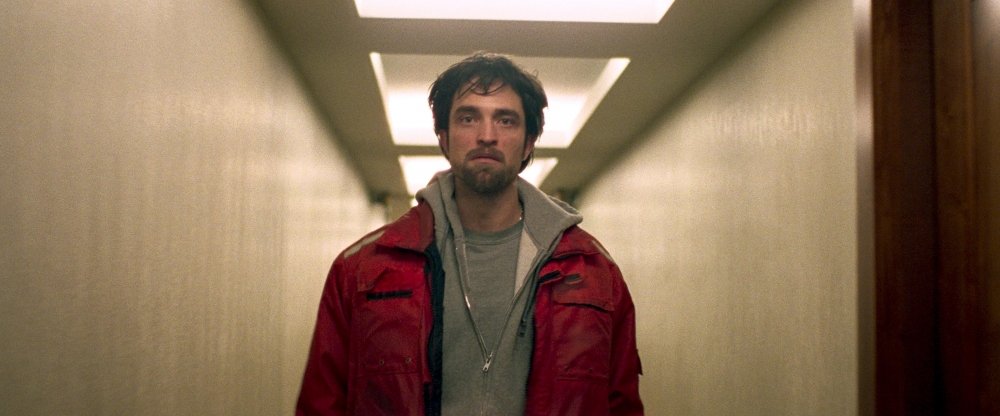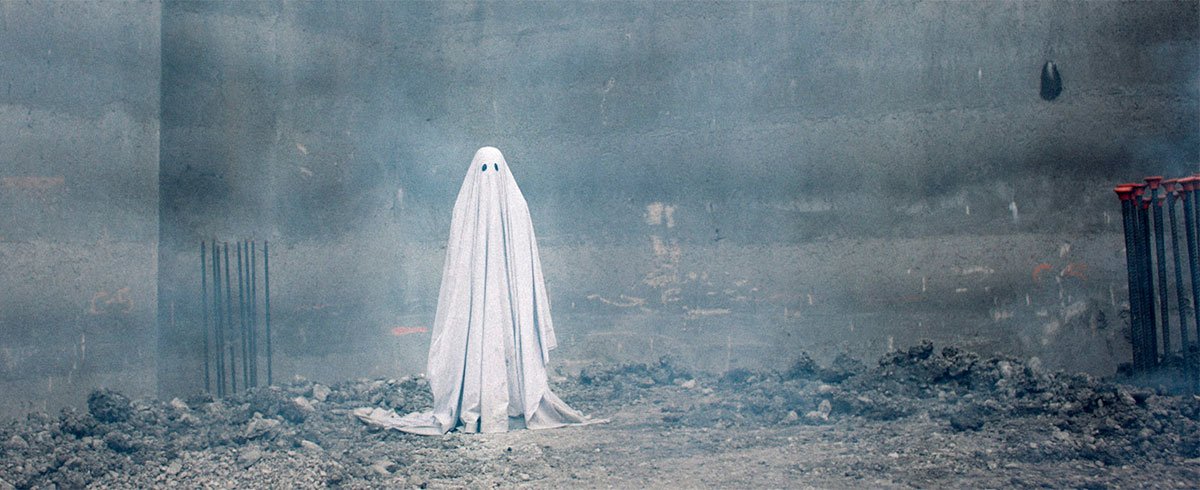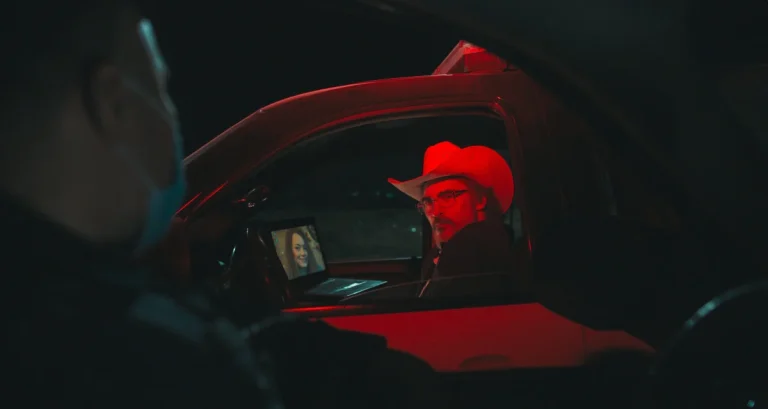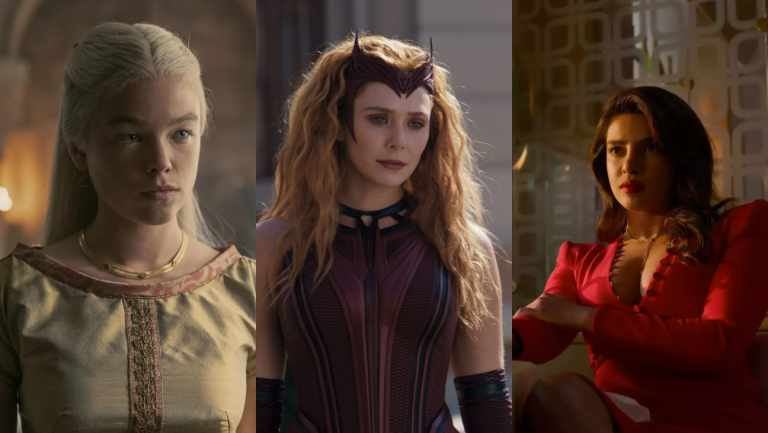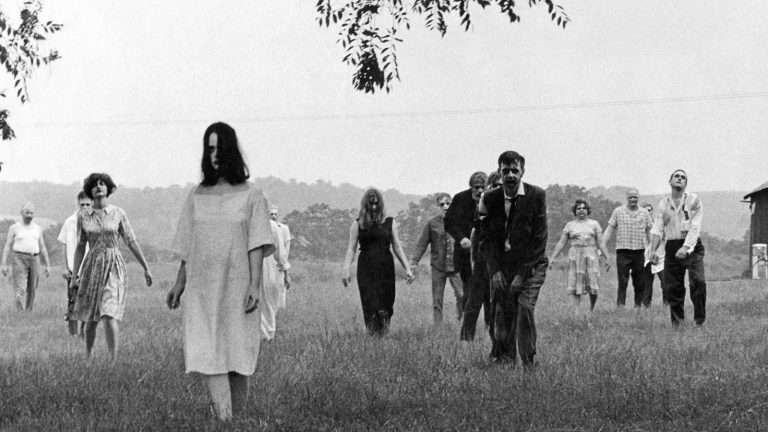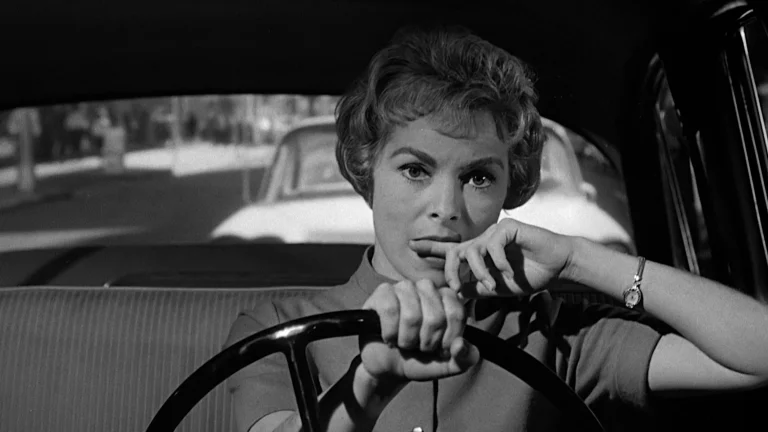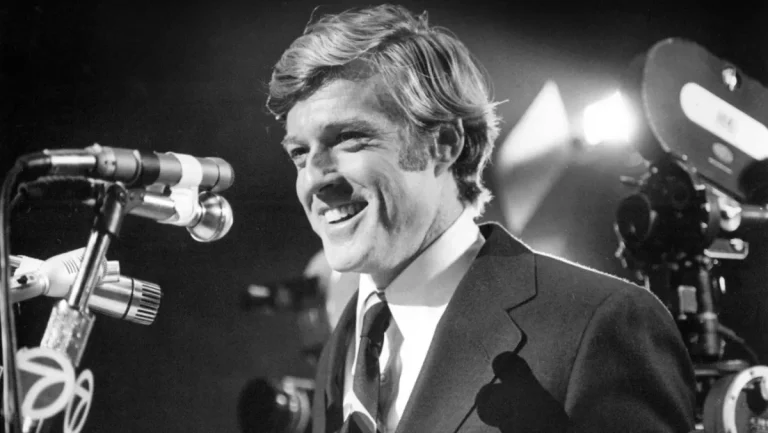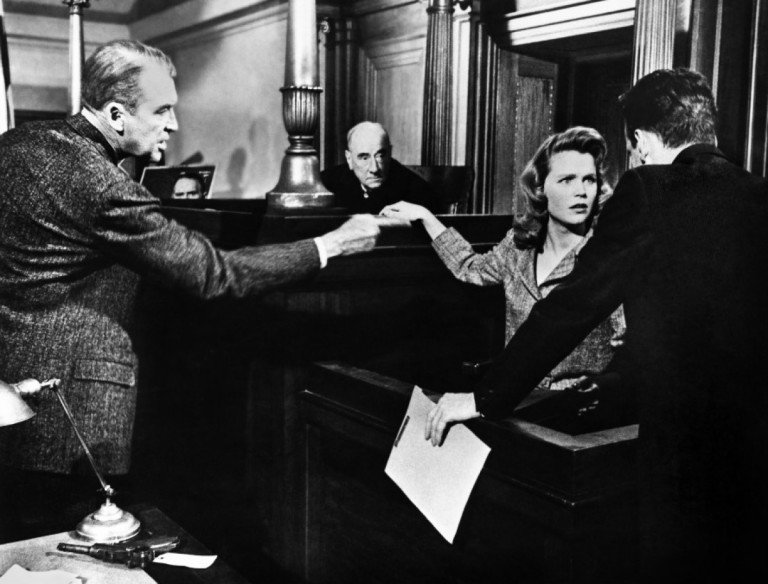Our recent review of “Opus” may very well leave some of you looking to a list ranking the “best A24 movies” as a sweet bout of hypocrisy; the fandom surrounding the distributor has been well-documented and thoroughly lambasted, so what purpose is served exactly by compiling a list of the best films that just so happen to have been acquired by a specific group of New York millennials tapped into meme culture?
In examining the films that have garnered the studio such status, though, it’s not impossible to envision certain patterns in these independent features that might have attracted those millennials to acquire these films in the first place—in essence, while there is no such thing as a style defined in an “A24 film,” there is certainly a particular breed of audacious art films that the studio prefers to platform with all their savvy marketing magic, to the mutual benefit of all involved.
So as the time comes for us to hop on the bandwagon and do what all the cool kids are doing nowadays, our ranking of the 50 best A24 films arrives at a perfect moment when the studio’s increasing omnipresence makes their brand, and its implications for indie studios in the internet age, simply impossible to ignore. From an eclectic collection of films by an eclectic collection of filmmakers, here are the 50 we find most worth the spotlight.
50. Boys State (2020)
As the global political landscape (and its American subset more specifically) continues to veer further and further away from the idealistic future that inspires most youngsters to take up politics in the first place, a film like “Boys State” continues to solidify the magnitude of its cultural and thematic significance.
Through the film’s titular mock political program—in which ambitious young men with aspirations for the White House enter a practice campaign to get a feel for the senate landscape—Jesse Moss and Amanda McBaine shine a light on all the camaraderie and ugliness that comes to the fore when boys ranging from illusioned to unqualified are put into positions of power.
Where “Boys State” then distinguishes its urgency is in the directors’ decisions to follow a select few candidates of vastly differing backgrounds and ideals, and showing where the roadblocks of politics reveal a glimpse into precisely who they are, and precisely who they might want to be. The film introduces such an obviously likeable favorite of its subjects (Steven Garza for congress!), but Moss and McBaine also find themselves able to fully flesh out a more immediately off-putting candidate (Rob MacDougall for… city council, I guess?), in a great testament to the film’s goals of expressing just how thoroughly minds can be changed—sometimes, even, for the better.
49. Pearl (2022)
A noted improvement over its predecessor “X” (and certainly an improvement over its follow-up “MaXXXine”), the second of Ti West’s series of slashers, “Pearl,” acts as the distillation of everything that gave this condensed trilogy its short-lived appeal. This is in no way a backhanded compliment to this middle film, however, as “Pearl” definitely exudes the most effective mixture of West’s particular register of genre pastiche. Just as much an homage to the early slashers as it is an homage to the Douglas Sirk era of American melodrama, the film finds just as much joy in a splash of blood as it does in a splash of Technicolor hues.
Also Read: 10 Best Mia Goth Performances
The only film in the series co-written by star Mia Goth, “Pearl” undoubtedly demonstrates this greater synergy between its lead and the material surrounding her; Goth taps into the same sort of fame-obsessed mania that gripped her role(s) in the prior film, and here protracts it into a tidal wave of eye-twitching hunger for celebrity, all filtered through the enigmatic Brit’s distinct command of her delicate yet commanding physique.
A self-contained period-piece whose influence echoes all the way through to the ‘80s (and, outside the context of the narrative, the 2020s), West’s “Pearl” constitutes the rare middle-film in a trilogy that far surpasses either of its surrounding features.
48. Queer (2024)
Luca Guadagnino proved himself capable of perfecting populist entertainment with “Challengers,” deeply sensitive drama in “Call Me By Your Name,” and stylized horror in his remake of “Suspiria.” With “Queer,” he takes on an ambitious adaptation of a beloved novel, and crafts a surreal odyssey into longing, desire, and addiction that shows no concern for what would never have worked as a traditionally accessible work.
Yet, “Queer” does not feel shamelessly indulgent on Guadagnino’s part, nor does it feel terrified to challenge its source text. It’s a film that is honest in every moment, even if that means delving into a head-spinning, psychedelic fever dream that provokes comparisons to everything from “Naked Lunch” to “2001: A Space Odyssey.”
Related Read: 20 Important Queer Movies of the 20th Century
Although the picturesque costume design and stellar needle drops (including an all-time great drop of New Order’s “Leave Me Alone”), “Queer” succeeds thanks to Daniel Craig, who gives the greatest performance of his career. Brave would be an understatement to describe Craig’s willingness to make bold choices and risk derision, but the evolution of offbeat curiosity to heart wrenching longing within his characterization is one of the most impressive feats of acting in recent memory. “Queer” makes no apologies for what it is, but it’s a film that is as deliriously entertaining as it is undeniably impressive.
47. Green Room (2015)
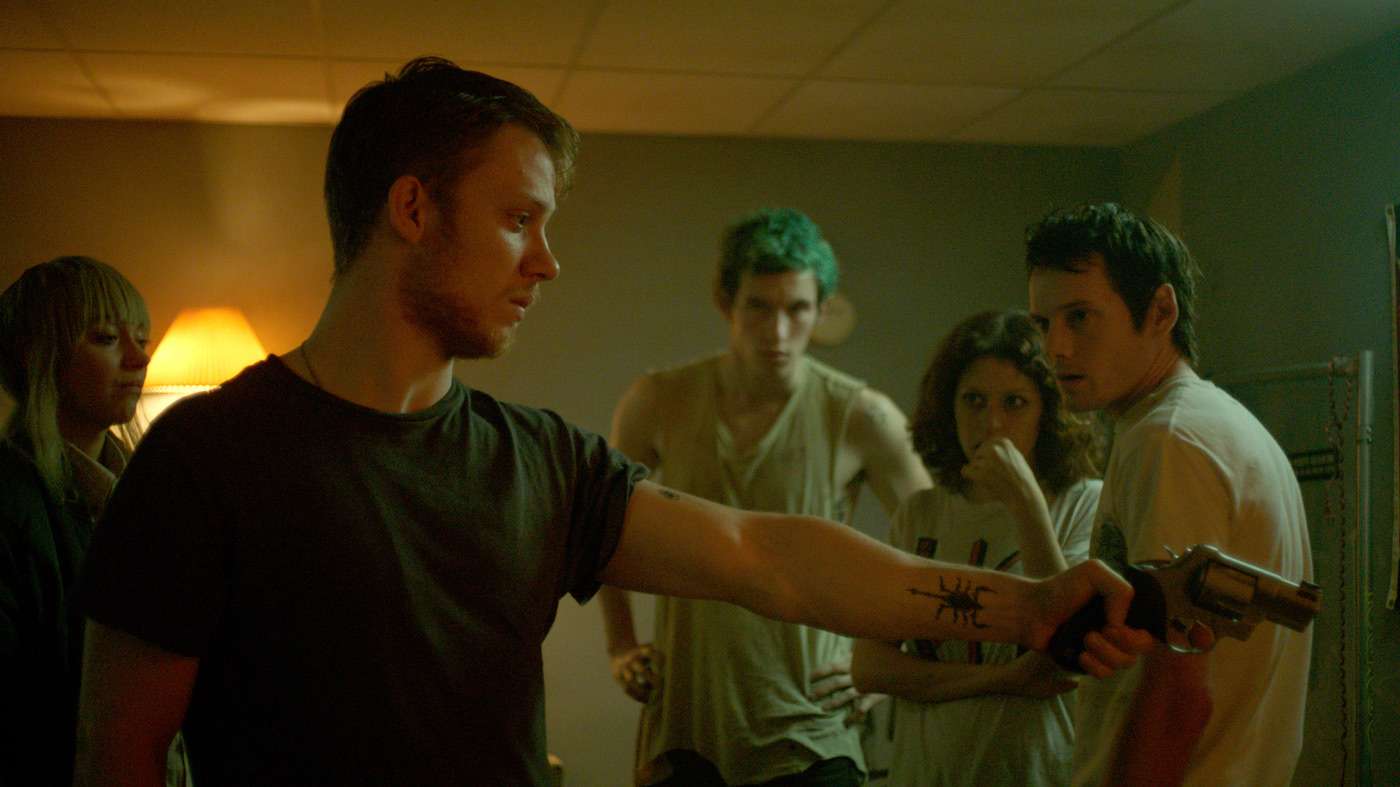
Jeremy Saulnier has proven himself capable of taking low-budget, simple genre concepts and turning them into nail biting suspense pieces, and “Green Room” is an outstanding achievement in craftsmanship that signifies a born filmmaker. The premise is so genius that it’s remarkable that it hadn’t been convinced before; what if a band was trapped in a green room, surrounded by enemies in the middle of nowhere? Although it’s the specificity of the subcultures that “Green Room” identifies that makes it so singular, it is equally impressive that Saulnier is able to keep ramping up the suspense without ever losing momentum or jumping the shark.
A film that is as concept-driven as “Green Room” may have been entertaining based only on its visceral qualities, but the film is surprisingly nuanced in its characterization, as it highlights the rebellious spirit of an “off-the-grid” band and the depraved banality of white supremacists. The late great Anton Yelchin gives a full-formed, reactive performance that offers an identifiable hero to this nightmarish situation. However, it’s his fellow “Star Trek” alum, Patrick Stewart, who challenges all perceptions about his stardom with one of the most chilling, paradoxically mannered villains in the last decade of horror cinema.
46. Lean on Pete (2017)
Andrew Haigh’s filmography is largely composed of intimate character portraits painted by the delicate if deep friction between two souls. “Lean on Pete,” one could argue, follows this same mold, though the souls in question are undoubtedly of a more… shall we say, diverse variety.
The story of a boy from a dysfunctional household who becomes the runaway caretaker of a worn-down race horse, Haigh’s fourth feature leverages his penchant for stories told in long silences and sullen glances for a dynamic that can exist solely in this dimension. As such, “Lean on Pete” becomes a road movie that leaves its emotions curled up in a ditch on the side of the freeway, just waiting to be picked-up and caressed.
Set largely in the vicinity of Portland, Oregon (not unlike another frequent A24-distributed filmmaker whose own livestock-centric feature may or may not be making an appearance on this list), “Lean on Pete” takes advantage of the inherent airy destitution of a Pacific Northwest left behind by the prosperity of industry; Haigh’s vision, while often rooted in his own English home turf, is here expanded with a clear perspective on modern American malaise—a horse on an endless, slumbering gallop, trotting in circles.
45. Saint Maud (2019)
A24 is renowned for creating our inclinations for the modern horror genre. Without typification, the films belonging to the brand have developed a rare cinematic language of their own. ‘Saint Maud’ continues in the tradition of atmospheric, spine-chilling films that bode well for the future of a forgotten genre. The plot revolves around Katie, who rechristens herself as Maud, as she overcomes the tragic death of one of her patients. Maud now resorts to private palliative care and finds strength in her devotion to religion. Her upcoming assignment with a single, wealthy woman allegedly becomes the revelation and “signal” from her savior of His love towards her.
Related to A24 Movies: Best Horror Movies of the 2010s Decade
‘Saint Maud,’ funnily enough, seems to be a delusional coming-of-age tale. The transformation and ‘beautification’ of a woman into an angel. But there are several doubts poked at the theory by those who champion the right to mental and psychological care.
It is almost painful to see Maud go through what she does, get “influenced” to do what she does, and still see her as the villain in the end. Morfydd Clark is magnificent as the leading lady and confirms herself as a major future star. Her nuanced act perfectly captures the state of confusion and desperation. No stone is left unturned by the production and associated artists to defy the high standards set by its predecessor corporate projects.
44. A Different Man (2024)
“A Different Man” is a brilliant character study that uses traces of the absurd to question the contradictory ways in which people view themselves. Yearning for a better projection is often a construct in which self-victimization becomes a crutch, and those in denial about the root cause of their failings are keen to use jealousy as a means of fantasy. “A Different Man” takes the premise of becoming someone else to its logical ending, as it’s only possible to access new traits for a short period before either learning a lesson or reverting to familiarity.
Sebastian Stan has puts his fellow Marvel Cinematic Universe stars to shame by consistently taking on challenging roles that require him to be completely vulnerable; his greatest achievement in “A Different Man” is identifying loathsome desires that are easy to relate to, turning his character into both a mockable fool and a tragic figure.
However, the scene-stealer of “A Different Man” is Adam Pearson, whose remarkable optimism and pure charisma turns each of the film’s familiar set-ups on their head. Although “A Different Man” is caustically ironic to the point of hilarity, it also raises discussion points that would have been impossible to generate naturally in a non-fantastical scenario.
43. Civil War (2024)
One of the most radical political films of the 21st century is actually unconcerned about the specific dividing lines that sparked the collapse of the American dream; whether its xenophobia, cult-like governance, or social grievances that sparked it, Alex Garland’s version of the “Land of the Free” is a warzone that feels startlingly familiar. “Civil War” is told from the perspective of journalists, yet examines how impossible it can be to claim emotional detachment from a situation that forces everyone to take a stand. Truth by its very nature can be political, and those brave enough to fight for it are incapable of not revealing a bit of their own leanings.
Also Read: 20 Best Films on Investigative Journalism
The stark, blatant use of violence is an effective tool, as Garland manages to make each shocking display or barbarity inescapable, even if the film itself is about being desensitized. The horrors of seeing familiar bits of American iconography overturned is not merely for the sake of shock value, as Garland asks reasonable situations about how to cope with an increasingly plausible situation. Those critical of the film’s supposed lack of substance miss the point; “Civil War” doesn’t point to the root causes for a societal breakdown, but depicts the realistic outcome of when it inevitably arrives.
42. Krisha (2015)
With just $30,000, a willing family and a deeply disturbed vision of what that family could express about themselves and each other, Trey Edward Shults crafted his debut “Krisha” with all the controlled chaos of a seasoned veteran behind the camera. Starring his own aunt Krisha Fairchild, Shults’s first feature, based on his own short film, dives head-first into the murky abyss of familial estrangement to tap into a deeply discomforting sensation of wanting to do right by people who simply don’t (or won’t) believe in your capacity for growth.
Related Read: 50 Best English Language Films of 2015
A24 as a studio has cultivated, as part of its infamous reputation, a penchant for fostering some of their favorite filmmakers from an early stage, and Shults is no different (all three of his feature films thus far have been under the studio’s wing; his upcoming Weeknd vanity projects marks the first split from the company). Watching “Krisha,” with its airtight grasp of dysfunction distilled in ghostly long takes—only to overflow into one of the most casually disturbing finales of the 2010s—it’s not difficult to see why the studio would go all-in on the upstart auteur, and the subsequent benefits that have come from this fruitful relationship.
41. The Spectacular Now (2013)
“The Spectacular Now” is the perfect high school movie about perception and empathy, as James Pondoldt’s remarkable coming-of-age romance begs its audience to not judge characters based on the social and societal divisions that they could easily be categorized into. Although this is a concept that dates back to the John Hughes era of “The Brat Pack,” “The Spectacular Now” engages with the pressures put upon young people in a radical, often upsetting way. While it isn’t a film that attempts to justify the erratic activities of youth, it does encourage forgiveness and compassion for the teenagers that feel the weight of their futures pressing upon their shoulders.
Related to A24 Movies: All James Ponsoldt Movies Ranked
Miles Teller and Shailine Woodley are uniquely brilliant in offering depth to roles that could have easily felt like caricatures; Teller shows how the wildest of juveniles may be drawn to danger as a means of avoiding the pain of their past, and Woodley gives insight on the shy, closed-off “ideal students” that are never given the opportunity to embrace the joys of being young. The chemistry between them is so strong that it’s easy to ignore fears about how their relationship will evolve; “The Spectacular Now” is about celebrating a single moment that can be remembered, but never replicated.
40. Swiss Army Man (2016)
‘Swiss Army Man’ is a comedy that does not have a peer. It redefines the norms with a multi-faceted plot concept with depth and genuine emotions. Paul Dano and Daniel Radcliffe star as two men who meet on the verge of death. Former, about to die, latter, already dead (or is he?). The bond forged through this weird coincidence only grows stronger as the movie progresses.
Things do not seem to match up in reality to their appearances. Because the story is told from the point of view of Dano’s character Hank, the setting and everything that happens within the space remain ambiguous and open to interpretation. One thing that the film is not uncertain about is getting laughs from viewers: right from the first scene, where Hank rides a flatulent Manny (Radcliffe) like a jet-ski, using the gases so released, to Hank explaining appropriate social behavior to Manny.
After this relatively light and absurd phase, ‘Swiss Army Man’ takes a jarring stark turn into the tragic reality. The conversation about mental illness and related abandonment was offset mainly by the final scene, which I think still was narrated from how Hank wanted it to pan out. But there is an urgent need for the same, especially in the context of the film. ‘Swiss Army Man’ is a liberating experience that is rarely present in mainstream cinema. The brilliance of its execution perfectly matches its absurdity in conception.
39. Close (2022)
Lukas Dhont’s debut film “Girl” was such a woefully miscalculated attempt at empathy with the trans experience that his vision, frankly, appeared much closer to leering pity than genuine allyship. With “Close,” Dhont explores a field that feels far more attuned to his brand of emotionally explosive melodrama—one which never loses sight of the tragedy at its core amid the flood of blinding colors and deafening cries. It’s an avenue that Xavier Dolan used to explore quite effectively, and Dhont here finds in his primal mode of expression a narrative perfectly tailored for the swelling anger and confusion that motivates his work.
Related to A24 Movies: 50 Best Films of 2022
“Close” sets its sights on a pair of young, prepubescent boys whose titular closeness goes beyond words, and whose subsequent estrangement at the hands of a world so determined to label and judge everything feels like a rupture in the very essence of companionship as an essential facet of the human experience. Thanks in no small part to Eden Dambrine’s revelatory performance—one rooted just as much in ear-splitting silence as it is in the sort of anguish that brings us a decade closer to death in an instant—”Close” harbors a soul-crushing view of compassion discovered only when the greatest need for it is long past.
38. Priscilla (2023)
A year after Baz Luhrmann raked up awards and box office success with his laudatory biopic “Elvis,” Sofia Coppola offered a very different perspective on the King of Rock’n’Roll by examining the experiences of his first bride Priscilla Ann Wagner, whom he first met when she was still in high school. “Priscilla” does unearth some truths about the legend that most lionizing recollections have been keen to overlook, but its greater achievement is granting individuality to a woman whose voice has been overshadowed.
Caillee Spaeny is simply remarkable, giving an eerily authentic performance that has no lack of personality. Mixed in with her sense of wonderment and jubilation is the creeping realization that this fairy tale was never intended to last, and those that would offer her protection have gradually stepped away. It helps that Jacob Elordi’s performance as “The King” offers a vulnerable, yet calculated side to the legend that is rarely seen in popular culture depictions.
As immaculately designed as all of Coppola’s films are, “Priscilla” stands out in how it merges traditional stylizations of America’s rock generation with the persona affectations that its protagonist added when she was atop a celebrity whirlwind. Although it’s a film that confronts some difficult questions, “Priscilla” is utterly absorbing as a character study, ending on an empowering note that signifies Coppola’s insights on the material.
37. The Tragedy of Macbeth (2021)
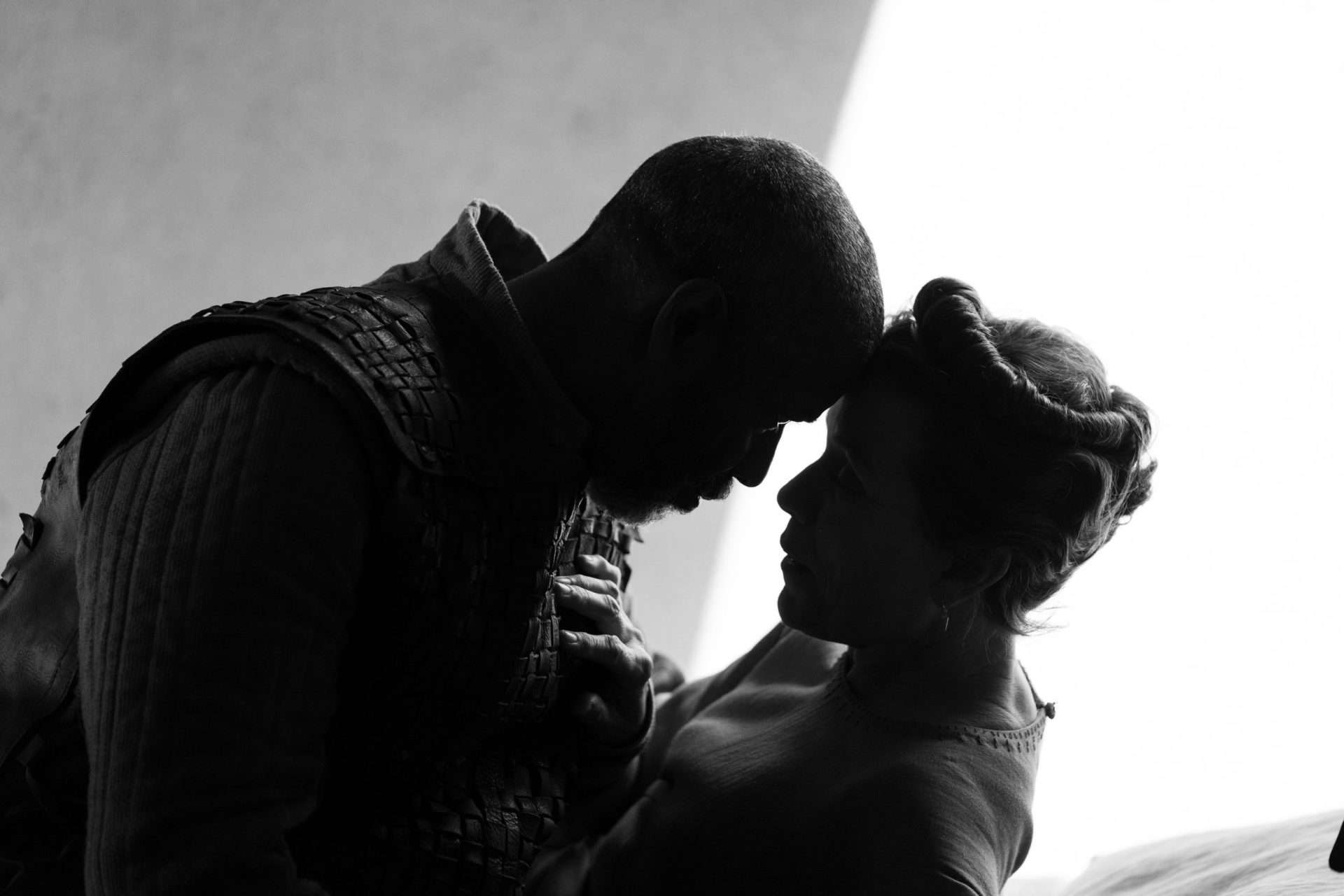
We have seen so many versions of Macbeth by now that another one just seemed tedious. What could Joel Coen (yes, just the one brother here) do differently to keep us glued to the screens? The plot, characters, and central mystery would all remain the same because the original material was not being recontextualized. But little did we know that Coen, Denzel, Bruno Delbonnel (the cinematographer), & Frances McDormand were concocting a conspiracy of their own. The Tragedy of Macbeth is yet another stellar retelling of the titular character’s descent into the consuming labyrinths of his greed and paranoia.
Also Read: All Coen Brothers Movies Ranked (1984-2021)
Much like Justin Kurzel’s 2015 iteration, The Tragedy of Macbeth offers an engrossing visual spectacle. Calling the film a visual spectacle would be too simple. Every frame, every crevasse of the screen is handled so beautifully that watching it would be as enjoyable without dialogue. Despite opting to present the tale in monochrome, Delbonnel and Coen never seem out of options when it comes to lighting up the scenes. Macbeth’s tricky debauchery unravels at a frenetic pace in the film, wasting little time to prop up the stakes.
36. American Honey (2016)
Andrea Arnold may be the most significant filmmaker of Britain’s “kitchen sink drama” movement in independent cinema, but “American Honey” is a grandiose coming-of-age epic that perfectly distills the fading beauty of Americana. Anchoring the film in a truly star-making performance is Sasha Lane, who captures every erratic, empathetic, and affecting moment of adolescence, as Arnold gives her the opportunity to show a full range of emotions. What’s most impressive is that despite the fact that “American Honey” runs for 143 minutes, it never feels anchored to a rigid structure; scenes move at a leisurely pace, allowing each moment to feel as naturalistic as possible.
“American Honey” is not absent-minded in its depiction of trauma, as the film examines both the violence of toxic masculinity and the sinister ways in which capitalism has cut off the future of an entire generation. Yet, the film never takes the moment to speak down to either the audience or the characters, as any insights that it grants come from the authenticity of the narrative. Amidst the hardship there is beauty, and “American Honey” is unparalleled in its celebration of femininity, outsiderism, and millennial anxieties. It is a true spiritual successor to “Easy Rider,” if this generation was to have one.
35. I Saw The TV Glow (2024)
“I Saw The TV Glow” is a deeply upsetting encapsulation of the anxieties felt by an entire generation, and manages to evoke nostalgia for a very specific era without ever feeling like its pandering. Jane Schoenbrun is one of the few filmmakers that seems to truly understand the chaos and contradictions of growing up in an era of fandom, online communities, and a plethora of pop culture media; it’s possible to be part of a larger contingency and still feel entirely alone, and anything that lives within the idealism of digital interactions can disappear at a moment’s notice.
Must-Read: The 30 Best Films of 2024
“I Saw The TV Glow” has a more complicated “coming out” metaphor than a majority of its contemporaries, as the film shows how the plight of feeling “off” is made all the more painful when society refuses to become less rigid. “I Saw The TV Glow” finds a dreamlike fantasy within an endless suburban twilight, with allusions to “Twin Peaks” and “Buffy the Vampire Slayer” that are all the more crushing when it shows how much fandom is drawn from personal perspective. As emotionally overwhelming as it is to view something that is drawn from suffering, “I Saw The TV Glow” offers catharsis in its power to recognize those that have not had their story told.
34. The Killing of a Sacred Deer (2017)
Leave it to Yorgos Lanthimos to make a twisty, anxiety-inducing thriller that pushes its extreme content to its natural ending, yet leaves room for a strong undercurrent of dark comedy. “The Killing of a Sacred Deer” takes existential anxieties about unthinkable moral dilemmas and uses them to break down the singularly western ideal of a nuclear family, and allows the viewers to waste away in the uncomfortability of each moment. Lanthimos isn’t concerned about generating sympathy for his characters, each of whom is deeply flawed in their own way, but it would be hard to find someone who doesn’t squirm once the physical and psychological torture begins.
Also Read: All Yorgos Lanthimos Movies Ranked
The mannered, highly specific style of performance that Lanthimos required could have easily grown grating had his actors not been empowered to challenge themselves, but “The Killing of a Sacred Deer” features terrific work from stars that were already acclaimed for their versatility.
Colin Farrell’s ability to be completely unhinged makes his measured, stoic performance as a guilt-ridden doctor even more impressive; it is perfectly suited for Nicole Kidman’s scathing examination of the greedy materialists that use their maternity as an excuse to avoid showing empathy. However, its Barry Keoghan’s performance as a particularly disturbed young man that solidified him as one of the most daring, exciting young actors.
33. The Brutalist (2024)
A grandiose epic that has instantly catapulted to being a modern classic, “The Brutalist” is an ambitious, absorbing story about the weight of trauma and the perseverance of art. It’s a film in love with cinema itself, as the formalistic structure, sweeping cinematography, and modernist themes are undoubtedly intended to evoke comparisons to American epics in the vein of “The Godfather,” “Once Upon A Time in America,” or “There Will Be Blood.” Yet, Brady Corbet also narrows his focus to a single question; will art truly stand the test of time beyond its artist, and can any one creative achievement justify the pain that it took to create?
Related to A24 Movies: 10 Best Adrien Brody Performances
Any concerns that “The Brutalist” would become too weighty given the scope of its thematics evaporate thanks to the deeply empathetic performances, with Adrian Brody’s portrayal of a Holocaust survivor standing out as one of the great acting achievements of the 21st century. Not to be overlooked is Guy Pearce in the role of an abusive, dominative industrialist, as it is a character that both represents a societal evil and feels individually studied. Few films that span over three hours long are as propulsive and entertaining as “The Brutalist,” which stands upon repeat viewing as both a celebration of its medium and a sharp warning about history repeating itself.
32. Locke (2013)
The premise is simple—so simple in fact, that many would argue that it verges closer to a gimmick. Place one actor in a car for 85 minutes, never leave the confines of its cramped space, and churn out a nail-biting thriller solely from the prospect of a man making phone calls. In lesser hands, a film like “Locke” would very much fall under the banner of a “gimmick film,” precisely the sort of thing a studio like A24 would pick up for the novelty of the headlines it would produce before slipping back into the aether. In Steven Knight’s hands, however, the film makes for one of the more efficiently tense chamber-pieces out there (and, quite possibly, the only mobile chamber-piece in existence?).
Resting entirely on Tom Hardy’s hulking shoulders—although, keen-eared viewers may note a few vocal appearances from the likes of Olivia Colman, Tom Holland and Andrew Scott—”Locke” knows exactly how long it must progress before the timer points towards overkill. And despite the fact that Knight keeps his narrative chock-full of developments that would make any driver want to swerve off a cliff, his film instead maintains a measured pace that balances all of its titular foreman’s mounting life horrors into a devilishly watchable nail-biter—and all from the comfort of our (and Locke’s) seat.
31. Red Rocket (2021)
Sean Baker’s oeuvre is defined largely by an empathetic view of the most ignored corners of American life. “Red Rocket” is, to an extent, in the same arena, in spite of the fact that its protagonist wants anything but to be forgotten; in fact, it’s this very essence that turns Mikey Saber into Baker’s most prickly protagonist yet. Guided by Simon Rex’s impossibly charismatic turn and a sense of place rooted just as much in its comedic potential as the disgust of what it represents as a microcosm of the American Dream, “Red Rocket” instantly made its mark as a defining feature of the 2020s.
Also Read: All Sean Baker Movies, Ranked
Though it tends to run somewhat overlong (an issue Baker has yet to overcome, even as his films increase in public stature alongside their increases in runtime), “Red Rocket” is only notable in that drawback because so many points of its final stretch would be equally poignant and hilarious places on which to end Mikey’s saga of destitution and shameless manipulation. One thing that cannot be said of Baker’s film, though, is that any of these displays of its subject’s depravity are anything less than direct and purposeful vignettes in the life of a man who attracts attention just as easily as he repels.
30. Under The Silver Lake (2018)
“Under the Silver Lake” is a film intended to provoke discussion, and by nature of its structure, will certainly be grating for those that seek easy answers or a concise truism. This is a noir film that presents a mystery that it can’t solve, touches on systemic issues that cannot ever be detailed in full, spotlights a toxic protagonist who shows no signs of progression or self-awareness, and chastises the inspired nature of obsessive conspiracy theorists, yet still grants time to indulge in their fantasies. It’s the contradictions and refusal to compromise that makes “Under the Silver Lake” so fascinating; once the rabbit is out of the hat, it’s impossible to look at the same thing again.
Recommended Read: What Exactly is Under The Silver Lake?
If David Robert Mitchell’s outlook on Hollywood and the culture that it inspired can seem overwhelmingly cynical, it’s refreshing that “Under the Silver Lake” is also remarkably well-executed, as every sequence is bursting with imagination and detail. Andrew Garfield gives an uncharacteristically sleazy, bizarre performance that grows funnier as the film doubles down on its own surreality, with terrific supporting turns from a plethora of great character actors. “Under the Silver Lake” is a film that will inspire numerous debates about the latent messages it contains, even if it seems counterintuitive to its inherent ascertain.
29. The Farewell (2019)
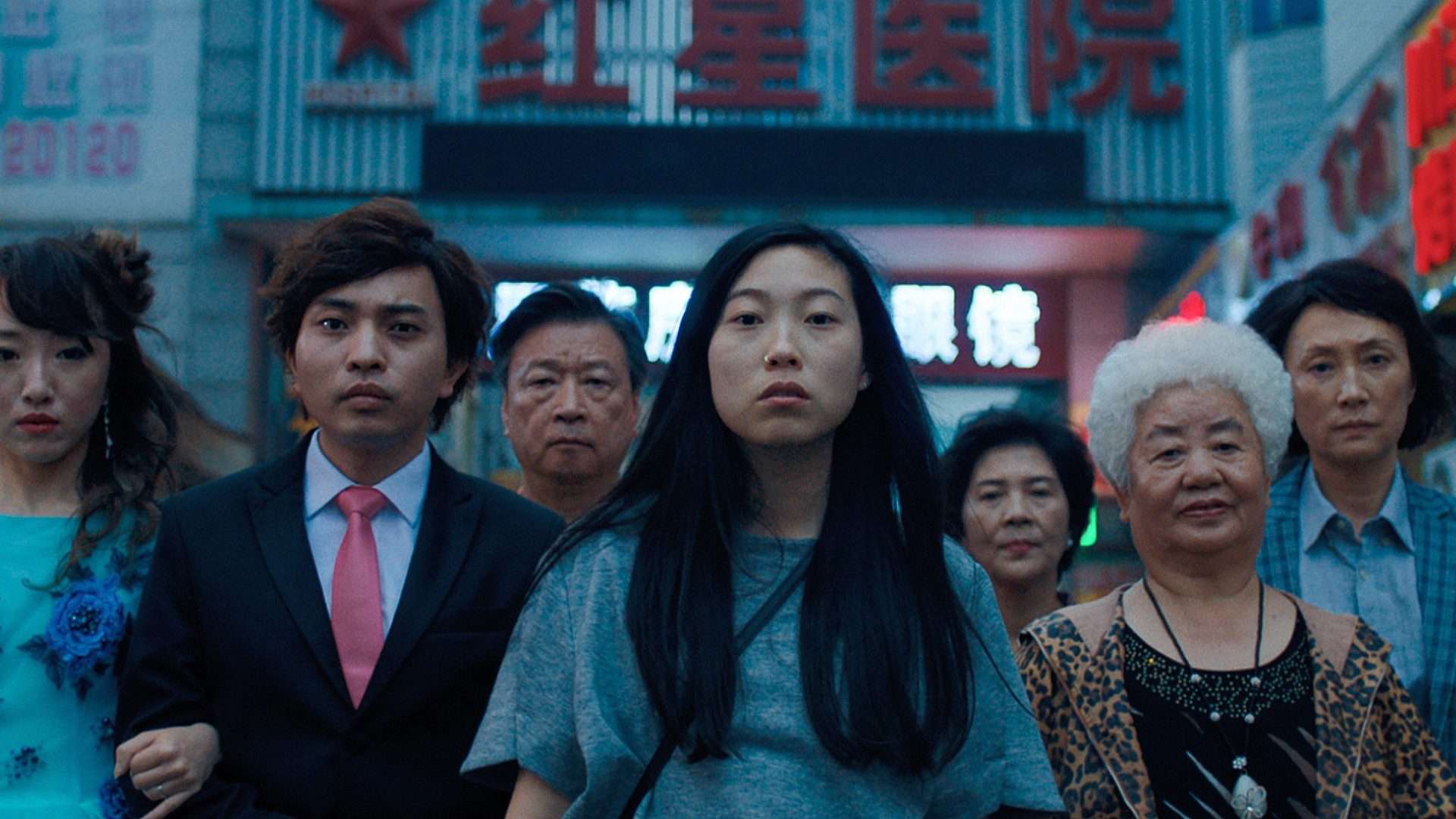
Billi is a struggling writer in New York City. Having just received a rejection letter for a fellowship while on the phone with her precious Nai Nai, Billi’s life doesn’t seem to be on track. The misery gets compounded when she discovers Nai Nai’s diagnosis of a terminal illness. The family keeps the result from Nai Nai, owing to a traditional belief that cancer doesn’t kill the person; the fear of knowing they have cancer does. Although her parents advise her to stay home as they hatch an elaborate plan to bid her farewell, Billi tags along, barely trusting herself to keep the secret.
Lulu Wang’s semi-autobiographical narrative is as moving and scandalous as the real-life story. Both the depiction of Billi and Nai Nai’s relationship and a family united by tragedy and cultural diversity is brutally honest and tender. Wang engineers enough time for the members to express how they deal with the illness on an individual level.
With an ensemble that big, she surely does a commendable job. Despite a predominantly heavy and melancholic premise, Wang refreshingly executes a comic and insightful undercurrent that makes ‘The Farewell’ accessible to a vast audience. Awkwafina might have confirmed herself as a major star with this turn, but Shuzhen Zao steals the show in one of the best performances in one of the best films of 2019.
28. The End of the Tour (2015)
“The End of the Tour” is one of the most adventurous biopics of the past decade, as it uses loose details about the life of a departed genius to address deeper questions about artistry, authorship, and empathy. Jason Segel is cast against type as the legendary author David Foster Wallace, who embarks on a book tour to promote the release of his latest novel; traveling with him is the curious “Rolling Stone” reporter David Lipsky, played in a surprisingly nuanced performance by Jesse Eisenberg.
Related to A24 Movies: 25 Best Films About Writers
What’s most radical about “The End of the Tour” is that it doesn’t really matter if the viewer has any interest in “Infinite Jest,” or frankly any of the politics or philosophies that populate Wallace’s work. Instead, this is a classical two-hander that involves interesting discussions between two intelligent, thoughtful characters, who only begin to discover the shocking disparity within their intentions once they begin to empathize with each other.
Eisenberg is often typecast as the shy, geeky counterpart to a more radical protagonist, but he allows Lipsky’s frustrations and curiosity to become entirely vivid as the tour drags on. As for Segel, his transformative performance is a complete revelation for anyone familiar with his comedy work, and should have earned him an Academy Award nomination for Best Actor.
27. Midsommar (2019)
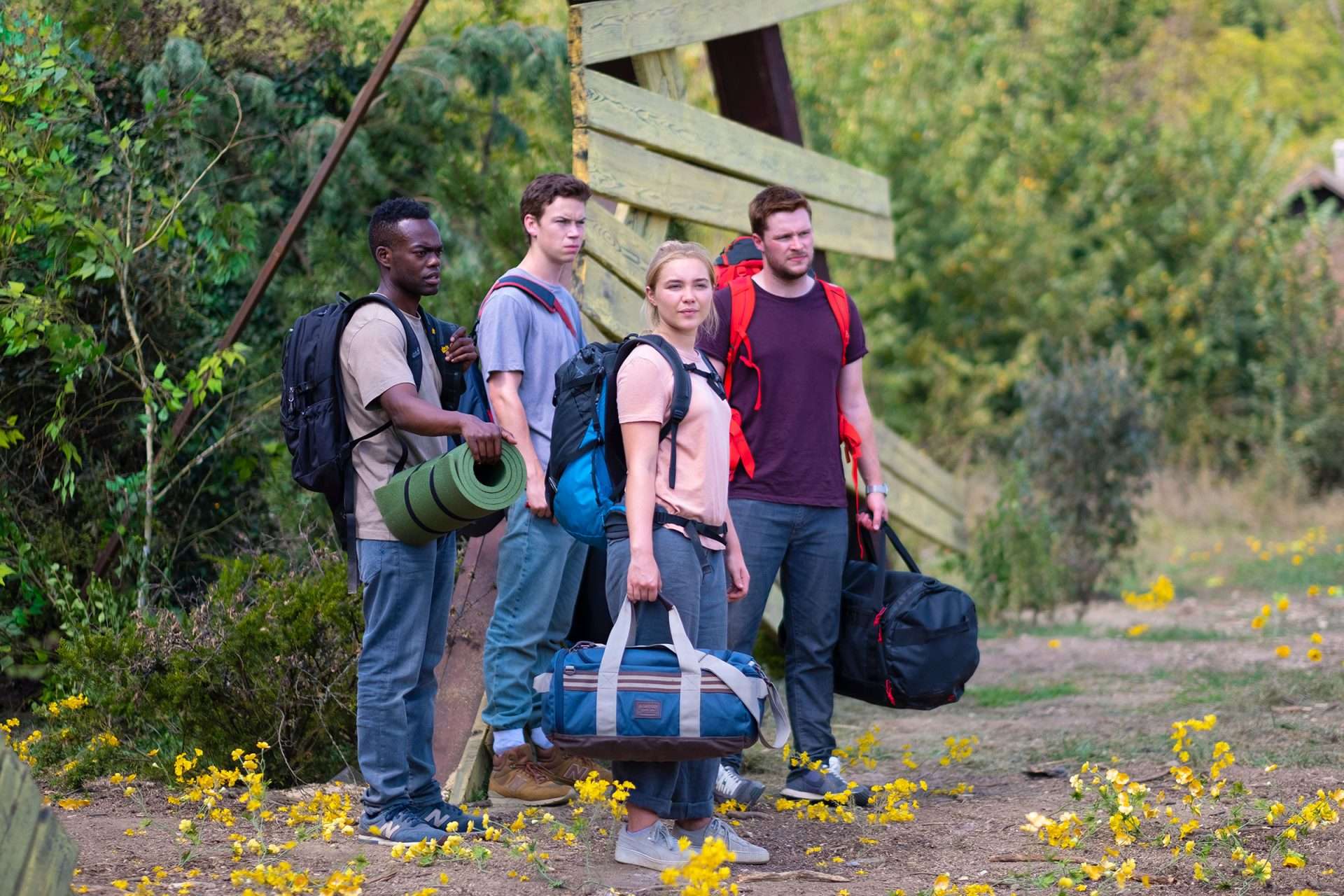
Ari Aster’s ability to merge deeply researched horror mythology with identifiable components of human frailty is best developed in “Midsommar,” a crass, hilarious, and completely unnerving examination of the most toxic breakup imaginable. If “Hereditary” tackled the cyclical nature of grief, “Midsommar” shows how hard it can be to escape the status quo, even when every instinct points to the necessity of change. If the message of “Midsommar” is simple, it’s because Aster treats the romantic strife at the center of his disturbing tale as a ticking time bomb that escalates in its uncomfortability as the film gets even more unhinged.
Although there are visual and thematic parallels that can be drawn to “The Wicker Man” or even “Rosemary’s Baby,” “Midsommar” feels totally original in how it turns its brightly colored visuals into a haze of lies and unmasked madness. Aster gives Florence Pugh the opportunity to chew every bit of scenery as a deeply damaged woman flirting with a breakdown, but also allows the film to be painfully funny and profoundly weird. Although “Midsommar” contains moments of shock that are as graphic as anything else on Aster’s resume, it also pulls a devious trick in convincing its audience that its upsetting final shot would seemingly emulate a form of catharsis.
26. Past Lives (2023)
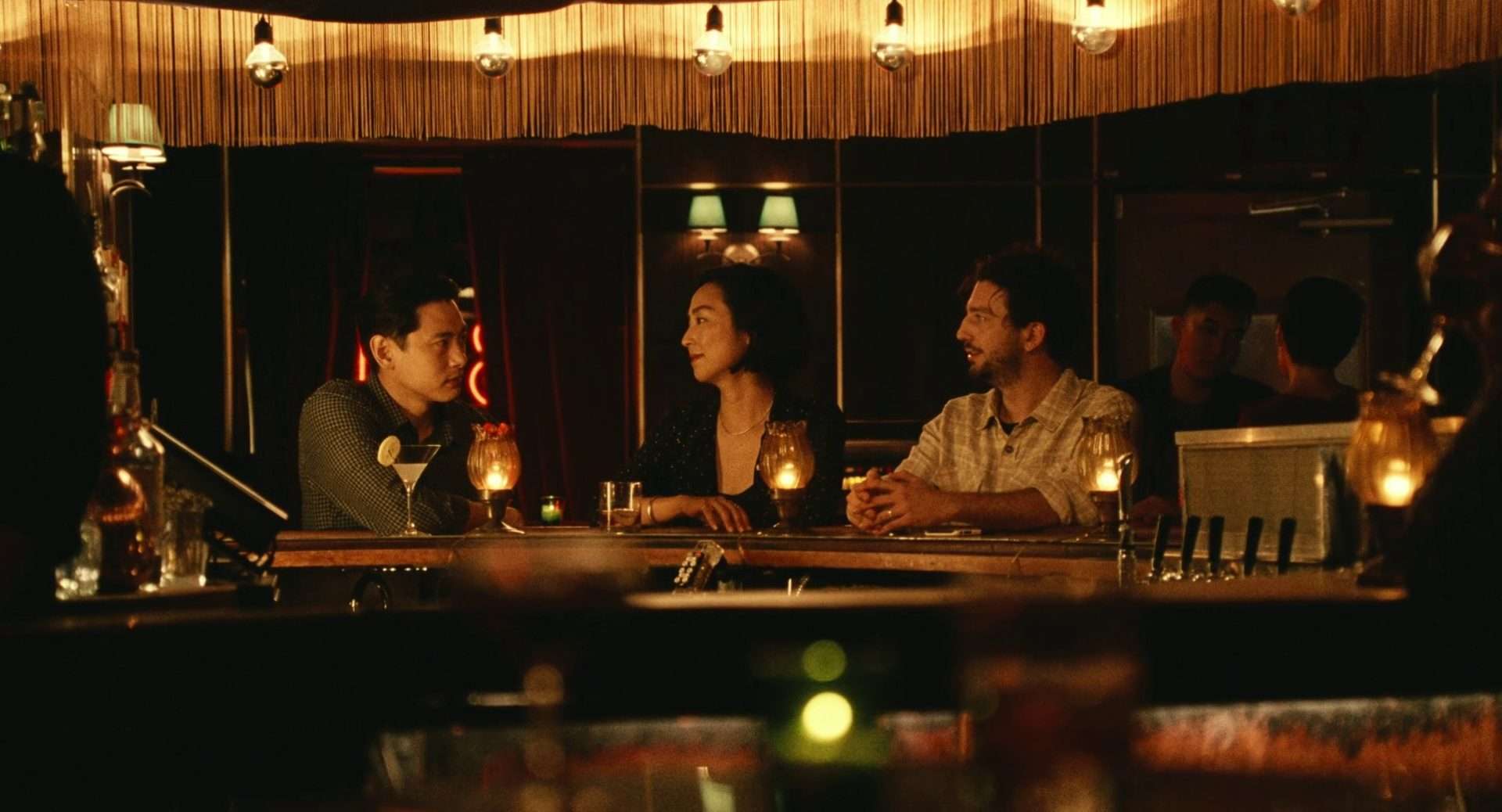
What does it mean to rethink your life; to backtrack and weigh out the pros and cons; to ask what could have been; to stand firm in your assessment that you’ve made all the right decisions; or to come to grips with the fact that, in truth, you’ll never really know? Drawing upon her own life experiences to ask the questions that could never truly be answered, Celine Song puts forth with “Past Lives” one of the most subtle ruminations on doubt, love and their intersection on this inexplicable journey we call life.
Related Read: 10 Favorite Films of Celine Song
Some films aiming to tackle these questions do so in grandiose fashion, exploding into eon-spanning odysseys that luxuriate in the unknowability of the “what if?” Song doesn’t find much room for elated speculation, but instead takes “Past Lives” as an opportunity to gently muse on the reality that never knowing means exactly that; all we can do is embrace the connective power of “inyeon” that binds us from one pained existence to the next. In that sense, “Past Lives” is the filmic embodiment of a look that opens up the future, or a touch that transcends lifetimes.
25. The Iron Claw (2023)
Biopics are often chastised by industry pundits as being a lazy method of generating audience interest, but there is nothing safe or comfortable about what Sean Durkin achieved with “The Iron Claw.” An epic of tragedy, the story of the tragic collapse of the Von Erich family wrestling dynasty is a powerful examination of how the sins of ambition and imperviousness lead to the fizzuring of any tangible relationships. At its core, “The Iron Claw” is a story of abuse, showing how one uncompromising father brought incomprehensible pain upon his children for never treating them as anything but chess pieces within his strategy to satisfy his own reputation.
The patient, prolonged moments of character interaction allow “The Iron Claw” to dismantle the standard structures of a biopic, as Durkin gives each of his interpretations of real men the opportunity to live in the moment. In a film that challenges perceptions of masculinity, it should not be a surprise that Durkin was able to allow Zac Efron, a former teen heartthrob, to give a performance of such deep empathy and sadness that it is impossible to not be moved by his emotional revelations. Efron had shown signs that he was evolving as an actor, but “The Iron Claw” gave him the role of a lifetime.
24. Eighth Grade (2018)
If Bo Burnham is known for anything, it’s probably for his satirical, musically tinged style of stand-up comedy borne out of the void of white noise that is the internet. Most comedians with that sort of background would apply it directly to any jump made to the director’s chair, but when the time came for Burnham to make his first feature film “Eighth Grade,” all he chose to carry over was a distinct sense of empathy and a keen perspective on youth in the age of the pocket-sized screen. For a man so lumbering in height, Burnham’s debut is nothing if not anchored in its perspective of adolescence.
Not all of us have experienced an “eighth grade”—some of us don’t make it that far in our education, some of us aren’t under the thumb of American grading systems—but anyone reading this has likely made it through that tumultuous period of time defined in Burnham’s painfully relatable middle-school vignette. “Eighth Grade,” even outside the distinct context of American social hierarchies, knows what it’s like to try and find yourself in an age where it’s so easy to get lost in the vast labyrinth of juvenile tumult.
23. Everything Everywhere All At Once (2021)
If there is one film from 2021 that deserves the tagline “multiverse madness at its best,” it is not an expensive, bloated Marvel offering. It is this maniacal, absorbing, completely earth-shattering cinematic masterpiece made by not one but two Daniels. Everything Everywhere is arguably the most inventive, unpredictable, and engrossing mainstream feature we have seen in recent years. Yet, like all great movies, it has the innocuous conundrum of the human condition at its core. Despite its magnificent outward projections that add a certain grandiosity to its storytelling, it remains a rooted story of an ordinary man, a woman, and a family.
The latter aspect of Everything Everywhere is cleverly buried under a maelstrom of multi-universe madness. That element of storytelling has the ability to sweep you off your feet thoroughly. And just when you thought it couldn’t get better, it does. Michelle Yeoh, Ke Quan, and Stephanie Hsu lead the spirited performance that breathes precious life into the characters. Jamie Lee Curtis’ IRS agent act will soon become a part of modern pop culture and make for a timeless addition.
22. The Lobster (2015)
Some would argue that “Dogtooth” is Yorgos Lanthimos’s breakout film—the one that introduced his distinctly deadpan and violent view of the world that would dominate art cinema across the coming decade—but an argument could equally be made for his English-language debut “The Lobster” as being the film that broke down those doors.
Perhaps it’s the language barrier being broken, or perhaps it’s the film being irrefutable proof that the director’s idiosyncratic style could fit like a glove on any actor he chooses to inflict with his brand of comedically tinged ultra-violence. Regardless, the director’s first foray with A24 proved a breakaway success for the Greek Freak and his disturbed fans.
Also Read: 10 Best Colin Farrell Performances
Exploring loneliness and social expectations to find love in just as absurd a fashion as one would expect from Lanthimos, “The Lobster” taps into star Colin Farrell’s distinct intonations and dodgy posture to bring out a mutually beneficial examination of mutually toxic systems of courting. If the punishment for failing to find love is to be turned unceremoniously into an animal, then Lanthimos posits that we may very well be better off living a primal existence in which partnership is determined so simply and directly. Who needs all that fuss, anyway? Well, maybe we do; maybe that’s just what makes us human…
21. First Cow (2020)
Kelly Reichardt’s contribution to modern independent cinema has increased substantially with every new film. Her films, often light on plot details and production values, make the best of minimal settings. The characters that populate her films are not role models or perfect people. But her penchant for facilitating the embracement of their journeys by the viewer without proper acceptance sets her apart.
First Cow’ is a transportive experience birthed out of a fleeting episode, a buried story of the past. The friendship of two men, now a remnant of their skeletons found decades later by a traveler and her dog. Reichardt’s craft and gift in storytelling are how she explores unsaid themes through Cookie (John Magaro) and King-Lu’s (Orion Lee) bond without spotlighting them.
As a viewer, your obligation is to be observant and patient. Be a sponge and absorb things as they come your way. Visually, ‘First Cow’ is mesmerizing and probably superior to her previous works. Despite the scruffy and rural setting, frames are full of warmth and carry a poetic tenderness generally lacking in mainstream commercial cinema. They combine well with a steady and intentionally understated score. Reichardt reaffirms her status as a unique chronicler of subdued American lives censured into oblivion.
20. The Zone of Interest (2023)
When it’s all said and done, “The Zone of Interest” may very well go down as the most important film A24 has ever distributed—a haunting and reflective view of humanity’s most depraved capabilities told with a bone-chilling grasp of the banal. Jonathan Glazer’s first film in a decade proved to be just as alienating as the last, though this time, even the film’s biggest supporters couldn’t deny its refusal to be digested without forcing a dry retching sensation; to be blunt, that sort of feeling is precisely what the film is aiming to reflect across every minute.
Forcing us into the deepest recesses of our own emptiness and refusing to ever come up for air, “The Zone of Interest” magnifies not only our history of corruption and apathy, but also our inability to ever learn from it. Now, more than ever, the mounting atrocities being perpetrated against one another, and our continued refusal to engage with them on more than a passing level, are evidence that “The Zone of Interest” is anything but a period-piece reflecting a long-gone era; instead, Glazer’s uncompromising austerity shows us the worst of what we can be, by showing us precisely who we are.
19. Climax (2018)
Quite possibly the most viscerally unnerving horror film ever made, Gaspar Noé’s “Climax” marries the filmmaker’s fascination with disturbing subject matter with his equal fascination with visual experimentation; the end result is a sexually charged party straight from the acidic bowels of Hell.
A film that opens with the proclamation that it’s “proud to be French,” the following 90 or so minutes (like most Noé films, this one begins with the end credits) make good on that affirmation by providing the most unapologetically French display imaginable—one of hard drugs, carnal pleasure and a pervading sense of pride and judgment towards itself for indulging in such fancies to begin with.
Related to A24 Movies: All Gaspar Noé Movies Ranked
If any amount of “Climax” and its gorgeous imagery manages to suck you into its world, then Noé proceeds to spend the entire remainder of the runtime gleefully punishing you for it. Even the director’s less impressive features can be categorized distinctly as “experiences” where many other films fail to reach that threshold, and “Climax” stands as the most pointed distillation of what that experience can be when all the indulgence of the craft subsides to a vision that fully earns it. You’ll never look at sangria the same way again…
18. Ex Machina (2014)
‘Ex Machina’ is an exciting take on human-AI interaction in the age of the technological revolution. Domnhall Gleeson plays Caleb, a computer expert who wins an invitation to assist his millionaire CEO, Nathan (Oscar Isaac), at his secluded residence in administering a Turing Test on a female robot. During his interactions, Caleb develops an intimate relationship with Ava, who removes the lid on Nathan’s dirty secrets and malicious practices, asking Caleb to help her escape.
Alex Garland, the film director, shows more commitment to ideas rather than visual execution. His speculative look at how technology is increasingly becoming the master of the very hand that created it isn’t far removed from years of literary and scholarly work on the discourse. Garland’s directorial debut is essential viewing, which combines disparate elements of dystopian doom with modern gore with stunning ease.
17. Hereditary (2018)
Critics of Ari Aster’s work have called his style pretentious and an original mix of the unoriginal. His films, especially ‘Hereditary,’ have not been regarded as an embellishment to commonplace cinematic traditions as they rightfully should. His narration in ‘Hereditary’ gets under your skin from the first frame and is hardly a contender to leave you anytime soon.
Movies about cults have mostly been plastic, monotonous, and predictable in the recent past. There’s so much you do not see coming your way in ‘Hereditary.’ The gory and jarring surprises are potent enough to give you the chills. Superior sound effects and reasonable use of jump-scares, which are few in number for a horror movie, are elements that distinguish ‘Hereditary.’
Toni Collette brilliantly plays a grieving mother who falls into the trap of a cult proliferator. The roots of which harken back to her dead mother. Allowing her to take over opens the door to the finalization of her mother’s plan: the descent of an unholy king. The film is a fascinating and contorted family drama. And it packs a harrowing tale about things in a society no one wants to pay attention to. ‘Hereditary’ does not have a match in creating an unknown and exciting language in the realm of a genre that now operates with dated methods.
16. Under The Skin (2013)
A bizarre body horror film that ends up becoming an existentialist tone poem, “Under the Skin” is deeply ironic, in that it takes the perspective of an alien visitor to truly unlock what humanity is. Jonathan Glazer’s stylized horror film sees Scarlett Johansson give the performance of her career as a clear-eyed alien visitor that travels to Earth, and ends up discovering all the beauty and bloodshed that humanity is capable of. The observations that Glazer makes are as astute as they are damning; what’s most shocking is that the science fiction premise is the only thing fantastical about this portrait about how outsiders are treated.
Also Read: 14 Best Scarlett Johansson Performances
There are many ways to read “Under the Skin;” whether it’s a condemnation of xenophobia, an examination of toxic masculinity, a contorted messiah story, or a metaphorical warning about the treatment of the environment, “Under the Skin” is so packed with visual wonder that it satisfies different interpretations. Better yet, the film’s refusal to narrow its scope to just one perspective allows it to feel even more inviting, allowing for participation in the analysis in a way that Glazer knows best. Even those purely interested in the visceral would have to be impressed by the deeply hypnotic sense of dread that is conjured.
15. The Witch (2015)
After watching Robert Eggers‘ harrowing debut, a good night’s sleep will elude you for a while. Shot exclusively in natural light, the unconventional modern horror mantlepiece boasts a striking visual appeal. The grim weather and barren terrain of New England house a family banished from their village facing an unknown and vile evil that lurks in the woods just beyond their new idyllic farm. Jump scares and ugly ghosts are a poisonous mix that has festered for ages in public view. Eggers deconstructs a beautiful genre and subverts many filmmakers’ precious power of expectations. He ensures he takes back the charge and restores lost glory to the genre.
Although the buildup is gradual, the tension absently creeps under your skin. Without actually showing an entity (very briefly, we see ‘a’ witch), Eggers conjures trepidation and doubt in the back of your head. His ascetic shooting style compels your attention to the character at the moment, bringing an insatiable urgency to his narration. Overall, A near sublime effort from a future rockstar.
14. First Reformed (2018)
Paul Schrader has often been interested in exploring pillars of masculinity by placing them in the midst of an existential crisis brought upon by societal sins. Although it seemed unlikely that Schrader would ever personally craft a film that could rival his collaborations with Martin Scorsese on “Taxi Driver” and “Raging Bull,” “First Reformed” is a towering achievement in how it addresses the fraught state of religion in the 21st century.
The collective trauma that has emerged from right-wing terrorism, environmental havoc, and the rise of mental illness leaves those that claim godlessness to claim justification, and forces those that remain believers to question if they could ever be forgiven.
Related to A24 Movies: 50 Best Films of 2018
Ethan Hawke is mannered, subtle, and completely heartbreaking in a role that defies all the traits that Schrader usually examines; despite his troubled nature, Hawke’s characterization of a grieving preacher is generally more tragic than he is deliberately shocking. Schrader weaves a careful balance of allowing characters to voice opinions without directly addressing the film’s intent, creating a stunning finale that warrants every bit of discussion that it invoked. Religion is by no means an easy topic to capture onscreen, but Schrader’s film is brilliant in how it tailors age-old debates to the current moment.
13. Enemy (2013)
Hard as it may be to believe given his astronomical rise to the stars, there was once a time when Our Lord and Savior Denis Villeneuve was making scrappy little indie thrillers in his native Canada. “Enemy” is just about the last of these films to exist on so small a scale—starring Jake Gyllenhaal and Jake Gyllenhaal, the film premiered in 2013 around the same time as Villeneuve’s breakout “Prisoners,” but only picked up wider distribution from A24 the following year. That isn’t to say, however, that the French-Canadian director wasn’t always just as ambitious here on Earth as he would be over on Arrakis.
A heady psychological thriller that owes just as much to its dual lead performance(s) as it does to Villeneuve’s grasp of guttural vacuity echoing through streets tinted in heavy sepia, “Enemy” gives its artists just as much room to pause as its audience, finding equal horror in the crawl of an arachnid as in the creeping movement of a man on the hunt for a life not his own. Villeneuve’s cold grasp, often a criticism levied by his few detractors, here serves “Enemy” perfectly, as a clinical but cerebrally focused peek into both sides of the brain.
12. C’mon C’mon (2021)
According to star Joaquin Phoenix, his work on Mike Mills’s long-awaited fourth feature “C’mon C’mon” is what allowed the famously introverted actor to come out of his shell and decompress in his spotlight-dependent profession. And while the star’s recent, classically mysterious behavior may put his assertion into question, it’s certainly the sort of claim that strikes as perfectly fitting for a project so entrenched in mellowed self-reflection. A deglamorized depiction of bipolar disorder, familial strife and preemptive childhood independence, “C’mon C’mon” marks an expectedly mature step forward in Mills’s ever-thoughtful filmography.
In that respect, “C’mon C’mon” is not the sort of film built around seismic showcases of craft; Robbie Ryan’s camera is steady and unassuming, and Phoenix mainly stuns in front of that lens by virtue of demonstrating a disarming self-assurance that only achieves such power because of its deep synergy with the unromantic world surrounding it—in essence, our world.
Those who look to cinema to “escape” will likely find little of value in Mills’s vision, but as a reflection of the small beauties of mundanity as we all try to carry on (and a wonderful showcase for a star-making child performance courtesy of newcomer Woody Norman), the value of “C’mon C’mon” is simply immeasurable.
11. Lady Bird (2017)
Although Greta Gerwig has already been a fixture of independent cinema thanks to her collaborations with her husband, Noah Baumbach, her directorial debut “Lady Bird” still felt as if a new voice had been unlocked. Gerwig crafted a highly personal study on the unique pleasures and pressures that a young Catholic girl experienced during her upbringing in the early 2000s, but everything about “Lady Bird” managed to somehow be universally relatable.
Gerwig found a way to capture the frantic, confused nature of growing up where every single moment felt like it was seismic; blowouts, breakdowns, and bouts of existentialism all come at such a rapid pace that it seems impossible that one person could be experiencing all these emotions at once.
Related Read: 10 Best Greta Gerwig Movies As a Writer, Director, Actor
Saoirse Ronan gives a performance that is simply delightful in its honesty, as she is never interested in trying to sand off the character’s hard edges. As gifted as she is at delivering the film’s hilarious string of one-liners, it is Ronan’s ability to turn cynical irony into authentic empathy that makes “Lady Bird” such an essential time capsule. Coming-of-age films rarely have the same wisdom, pathos, and pure entertainment value as “Lady Bird,” making it all the more remarkable that it was Gerwig’s debut film.
10. The Green Knight (2021)
The most hyped-up movie of 2021 lives up to expectations. David Lowery‘s new project seems like a personal obsession that the mercurial filmmaker gorges with matte-finished frames. ‘The Green Knight’ is based on the poem, Sir Gawain and the Green Knight, about an unsure son of a witch (literally) in the green of his youth, determined to prove his worth to decorated Knights and the Crown, tricked by the promise of becoming a part of legend and fables. His foolishness in taking his mother’s bait to realize this ambition leads him on a hardened journey toward certain death.
The central conceit of the film is the idea of goodness vs. greatness. Despite having love and integrity, Gawain embraces the fallacy of the idea of himself as someone with the courage to fight wars like a Knight. His identity crisis is crystalized in his conversations with Lord Bertilik when he is called out for not knowing what honor is. Gawain yearns to be etched in the golden echelons of history in the same sentence as the great King Arthur. Moreover, he wants to become something and have tales of bravery to narrate to an eager and impressionable crowd.
Lowery’s fine-tuned details include choosing the right color palette for different emotions or using his imposing score, which is made up of a foreboding soundscape of medieval chants, witchcraft whispers, and incantations. It all comes together to offer a fulfilling experience.
The film shares similarities with Justin Kurzel’s Macbeth (2015) in style and dramatic performances, despite their core thematic differences. I am convinced that the pair of leading females, Vikander and Cotillard, outperform their male counterparts after rewatching both sets of films. If you liked this one, be sure to check that out as well. ‘The Green Knight’ can be summed up in this choice line juxtaposed with an old adage: heavy lies the head that wears the crown; heavier so, with an unfulfilled and cursed destiny.
9. 20th Century Women (2016)
Mike Mills is just about the most underrated American screenwriter gracing us with his work today. Though not nearly as prolific as he should be, he crafts such tender examinations of life as reflected through his own feelings of retrospect, capturing a side of suburban America with disarming sincerity. And so, after making “Beginners” as something of a therapeutic tribute to his father, Mills made “20th Century Women” as an ode to his mother, alongside all the women in his life who shaped his being at a moment in time defined by radical change.
Also Read: 50 Best Films of 2016
Mills’s filmography can essentially be distilled into a series of life’s vignettes, as people we’d encounter on a daily stroll find themselves trying to “figure it all out”; “20th Century Women” stands as the director’s most charming and unadorned exploration of taking on whatever is thrown our way.
If behind every man is a woman calling the shots, then this film is proof that next to every woman is another ready to stand as a figure of solidarity towards the common struggle. Itself supported by a colorful cast of diverse (in character, anyway; most of them are white) misfits, “20th Century Women” captures a moment in time reflective of a greater struggle that casually persists to this day.
8. Moonlight (2016)
Barry Jenkins’ expressive drama tells the story of Chiron, a young, sensitive African American boy. He discovers his sexual identity in an exhilarating three-part odyssey. More than just making a film about self-discovery, Jenkins also tries to change competing perceptions of manhood in societal discourse. While it is not exclusively esoteric to black males and captures a much broader sentiment, Jenkins explores Chiron’s journey in life against the backdrop of the hard-hitting realities of the African American community. He still generously allows additive experiences for viewers, wherein they bring something of their own to the characters and their conflicts.
‘Moonlight’ boasts of a rich thematic tapestry. As a result, Chiron faces many challenges through different phases of his life. The issues range from conformity in his early teens, his resistance against becoming a product of his environment, to the probing needle of masculinity in adulthood. The process of how Little becomes Black is shown to be one devoid of tenderness and empathy. Little by little, Jenkins’ protagonist loses every avenue of love in his life, rebuked at every attempt.
‘Moonlight’s grandiosity in accepting and furnishing a universal roadmap to young boys and girls suffering from an identity crisis is its real victory. It defines how care and affection shape a person, emancipating them from gender and identity archetypes and allowing them to make their own paths.
7. Aftersun (2022)
Aftersun is quite similar to C’mon C’mon (2021) in many aspects. They mostly feel like spiritual companions tapping into the same vein of human emotions and cinematic realism. But Charlotte Wells’ movie is her own and leaves a telling impression on you. Aftersun is built on the infallible fortress of memories. Sophie lives every detail of that particular time spent with her father that defined their relationship while reconciling the idea of those moments spent with the reality of the aftermath. So often, we remember certain events of our lives through a singular image in our head.
That image is potent enough to contour and protect the good parts of it, no matter what actually happens. You end up clinching at it hard, not wanting to let go. Aftersun is, in part, about that feeling. Credit to Wells for creating a nuanced and symmetrical portrait of a father-daughter duo that is richly acted. She shows assuredness and confidence in handling two different timelines with the same set of characters.
Aftersun feels like a deeply personal secret well kept from the world. Even as it unfolds, there is a sense of hesitance to share the details with the viewers. Sophie’s reluctance to share the treasure of her memories is a consequence of what she does in the present. Anyway, A24 has seemingly topped itself again by bringing us another young filmmaker’s marvel of a debut. A truly emphatic experience.
6. The Florida Project (2017)
The idea of compassion is quite commonplace in cinema, but ironically enough, its manifestations don’t quite compare to Willem Dafoe’s Bobby. An everyday manager at the Magic Castle – a lowly motel in Florida. The occupants in the building are more like his wards than customers. He is overprotective of the kids, a fatherly figure who looks out for them. Hailley is a single mother, working as an exotic dancer and living with her daughter, Moonee. The ups and downs that they go through individually become the primary subject matter of Sean Baker’s poignant portrait of working-class America.
Related Read: 50 Best Films of 2017
While poverty and miserable living conditions form the film’s background, Baker focuses on the joy of childhood. And the inhibited sense of being that children carry with themselves. Much of the life that flows through comes from the children and their interactions. This gives the storytelling an innocence that puts you at ease. Shot exclusively on 35mm, Baker rigorously experiments with how he shoots the characters, effectively bringing out their perspectives. The idea of Disney World, the elusive happiness for children, being on the cusp of their adolescence strikes as a hard-hitting eye-opener of how happiness has been commercialized and melancholy normalized.
5. The Lighthouse (2019)
David Lynch often lamented the general audience’s refusal to engage with his work on the same free-flowing wavelength that inspired it; audiences were, in his view, too keen on unpacking what his films “meant” rather than embracing how they made them feel. With “The Lighthouse,” it’s almost as if Robert Eggers took Lynch’s lament to heart and spent 109 monochrome minutes letting out an exasperated “You’re telling me…” It goes without saying that any effort to try and understand every piece of imagery populating Eggers’s sophomore feature—particularly on a first watch—would be just as fruitless as it would be pointless.
First and foremost a seismic sensory experience, Eggers’s film envelops you in the isolation of its setting, compounded by the isolating sensation of its cramped craft, to present the purest form of madness as it is found at the bottom of a bottle of moonshine with a sea-water chaser. Shot in orgasmically gorgeous black-and-white 1.19:1 aspect ratio, “The Lighthouse” finds in stars Robert Pattinson and Willem Dafoe the most alluring depiction of every parasitic sensation that has ever polluted the human mind at sea, presented in such a manner that simply cannot be cast to the waves.
4. Minari (2020)
‘Minari,’ as a Korean film, subverts expectations that foreign audiences have become habitual to. Convoluted plotlines and surreal characters are often engaged in a poetic and tragic cadence that is non-conforming. Minari’ opens up an entirely new avenue of emotionally vulnerable and simplistic filmmaking styles for fans of Korean cinema. Just like Minari can grow and sustain itself anywhere, this immigrant family shows resilience and togetherness. They make the best out of the adverse living conditions and keep fighting.
After watching ‘ Minari ‘, I couldn’t help but think of ‘Shoplifters’. Imperfections and discord in and among family members are often traded for superficial unity and understanding. Both these films successfully represent a tangent in family dynamics that is heightened in self-awareness and rare to pull off. Lee Isaac’s precision in storytelling is matched by measured performances by the entire cast, especially David, whose winning scene, in the end, stopping his grandmother is a sure-shot tearjerker. Films like ‘Minari’ continue to reinforce the notion that stories about ordinary people are no less than extraordinary.
3. Uncut Gems (2019)
“Uncut Gems” constitutes the best showcase we’ve ever had—and likely ever will have—for Adam Sandler’s capabilities as a performer. Though this wasn’t his first serious rodeo, the Safdie brothers knew exactly what could be exhumed from the anxiety-riddled depths of the funny man’s typically affable soul. The resulting excavation makes for one of the most nervous and thrilling viewing experiences that would, in hindsight, define more than one corner of the self-destructive “grindset” that would plague the incoming decade. (“Uncut Gems” would, in fact, be the final A24 film released in the 2010s, the distributor’s inaugural decade, as well as the final film the brothers would release as a duo.)
Related to A24 Movies: 50 Best Films of 2019
Sandler is obviously not the only reason why “Uncut Gems” proved to be a top-tier film in a top-tier film year, but his subversive presence, much like Simon Rex’s in “Red Rocket,” lends the film a crucial dose of watchable disgust, as our sympathies for a degenerate gambler’s self-perpetuating prophecy of debt becomes just as tiresome as it does thrilling, thanks in no small part to the actor’s sleazy charm. The Safdies spent a decade developing and honing their vision of New York’s Diamond District—one might say, polishing it like… some sort of fashionable stone—and “Uncut Gems” shines with all the brilliance of an opal smeared in blood.
2. Good Time (2017)
When the Safdies and Pattinson agreed to do a movie that “didn’t exist based on nothing,” they could have never imagined it would turn out to be this good. But simply labeling ‘Good Time’ as a bank robbery gone wrong would be unfair. It tells the story of brothers Connie and Nick. The former is a bank robber, the latter in therapy because of his developmental disability, who decides to rob a bank. During the getaway, a dye pack bursts and causes the car to crash. It leaves the two scurrying for their freedom. Moreover, when the police arrest Nick, Connie vows to do anything to save him and place him back in therapy.
‘Good Time’ movies with Connie. It traces his patterns, adrenaline, and tumultuous emotional state, and as a result, the narrative moves at a great pace. The narrative also picks up on how Connie’s circumstance doesn’t really allow him to be morally ambiguous. Thus preventing him from being labeled as a ‘protagonist.’ The jarring tone compliments the style and overall vibe of the film. And it seems to be of paramount importance to the Safdies. ‘Good Time’ is an electric experience and a worthy take on the delicacy of human relations.
1. A Ghost Story (2017)
Probably the final remaining indie filmmaker who continues to successfully leverage Hollywood’s classic “One for them, one for me” credo, David Lowery’s immediate follow-up to his remake of Disney’s “Pete’s Dragon” put that paycheque money towards one of cinema’s most simultaneously simplistic and daring visions of grief, explored on a cosmic scale. Armed with little more than a bedsheet across his lead actor’s silhouette, Lowery found in “A Ghost Story” the most informal venue for his existential queries, turning the entire universe at large into little more than a playground to be traversed on the endless path towards the collective void.
Also Read: All David Lowery Movies Ranked
Finding only the strength to persist in an existence plagued by the question of finality, Lowery posits an afterlife in which the desire to hang on to what is being left behind can only be expressed in the pain of a distant gaze through two pitch-black holes poked into a white sheet. “A Ghost Story” thus stands as Lowery’s crowning achievement, a definitive view of the director’s soft but entirely acute view of the traces our lives leave on those who remain to pick up the pieces long after we’re dead and gone. Questions float through the air, but we remain grounded, shuffling through the breeze under the cover of our anonymous veils.


